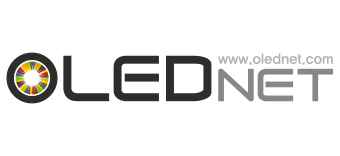[IFA2016] Skyworth 양면 OLED TV
LG디스플레이 OLED 패널을 겹쳐 만든 양면 OLED TV
LG디스플레이 OLED 패널을 겹쳐 만든 양면 OLED TV
삼성디스플레이 OLED 패널로 만든 Transparent OLED TV
OLED Summit 2016 첫째날에 PC용 AMOLED panel에 대한 intel과 OTI Lumionics의 발표가 진행 되었다. 두 업체 모두 PC용 AMOLED panel에 대한 현 상황 분석과 앞으로의 기회를 주제로 발표하였으며, PC용 AMOLED panel의 갈 길이 아직 많이 남았음을 시사하였다.
2016년 1월, Lenovo는 14인치 2550×1440 해상도의 AMOLED 패널을 장착한 세계 최초 OLED 노트북, ‘X1 Yoga’ 출시를 발표하였으며, 연이어 HP도 13,3인치 2560×1600 해상도의 OLED 노트북, ‘Specter X360 hybrid laptop/tablet’ 출시를 발표했다. 또한 삼성에서도 올해초 열린 CES2016에서 ‘갤럭시 탭 프로 S’를 공개하며 PC용 AMOLED panel의 가능성을 입증하는 듯 했다.
하지만 intel과 OTI Lumionics에서는 공통으로 AMOLED panel은 소비전력과 휘도, 수명, 가격측면에서 LCD대비 부족한 상황이라고 발표했다. OTI Lumionics에서는 갤럭시 탭 프로 S와 X1 yoga, Mac book 세 제품에 대한 테스트 결과를 보여주며, PC용 AMOLED panel의 개선되어야 할 점에 대해 강조하였다.
특히 OTI Lumionics의 CEO Michael G. Helander는 “PC용 AMOLED 제품의 burn-in test 결과 80시간 이내에 LT97 이하로 감소하였으며, 이는 하루 평균7시간 사용되는 사무직용 PC에는 상당히 중요한 부분이다. AMOLED panel이 적용된 제품이 프리미엄 급임을 감안하면 현재의 10배정도 수명이 개선되어야 할 것으로 판단된다.” 라며 PC용 AMOLED panel의 수명이 개선되어 burn-in 현상 감소를 강조하였다.
Intel의 John F. Jacobs는 “OLED가 white 환경에서 수명과 소비전력이 높은 이슈가 있지만, 최근 PC환경의 트랜드가 기존 office나 인터넷위주의 white환경에서 다양한 색상의 컨텐츠를 활용하는 빈도가 높아지고 있는 추세로 하얀 바탕화면이 감소하고 있는 추세이다. 이는 OLED의 새로운 기회가 될수 있을 것.” 이라며 OLED의 기회에 대해서도 강조하였다.
AMOLED panel은 white 구현을 위해서는 RGB의 모든 sub pixel을 구동해야 한다. 따라서 office 프로그램이나 인터넷 브라우저 같은 white 배경의 화면이 주로 사용되는 PC 환경에서는 소비전력이 높아지고 수명도 상대적으로 낮아지기 이슈로 인하여 모니터 시장에서 AMOLED panel은 의료용과 방송용 등의 특수용 모니터에 주로 적용이 되고 있었다.
하지만 Intel의 발표처럼 PC의 사용환경이 점차 변화하고 있으며, OLED의 수명도 지속적으로 개선되고 있는 점을 고려한다면 PC에서도 AMOLED panel이 빛을 바라는 날이 올 수 있을 것으로 예상된다.
OLED의 장점인 높은 명암비와 색재현률, 빠른 응답속도, 넓은 시야각을 강조함과 동시에 수명을 개선할 수 있는 OLED 발광재료 개발이 OLED 산업 확장을 위한 핵심이 되어야 할 것으로 분석된다.
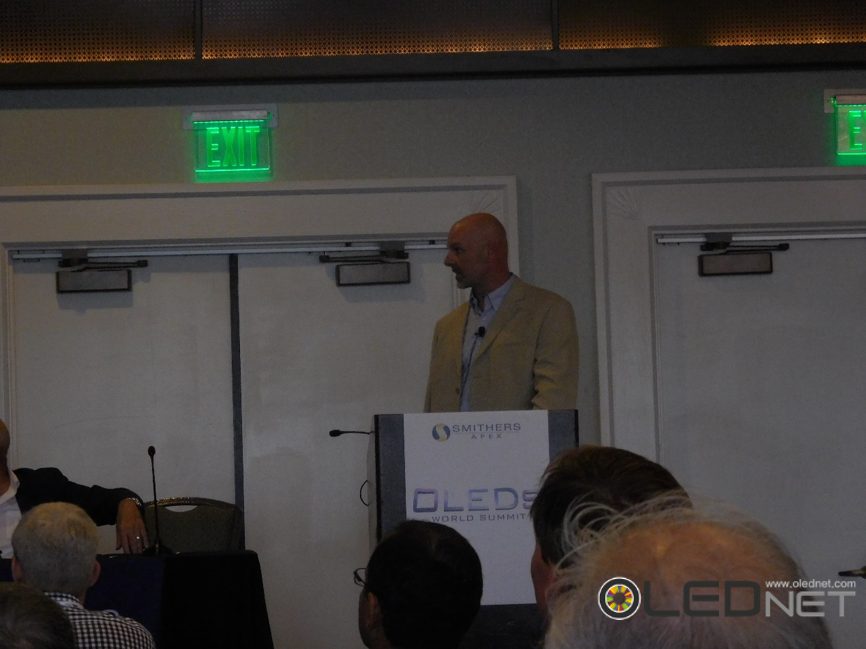
<Intel의 John F. Jacobs>
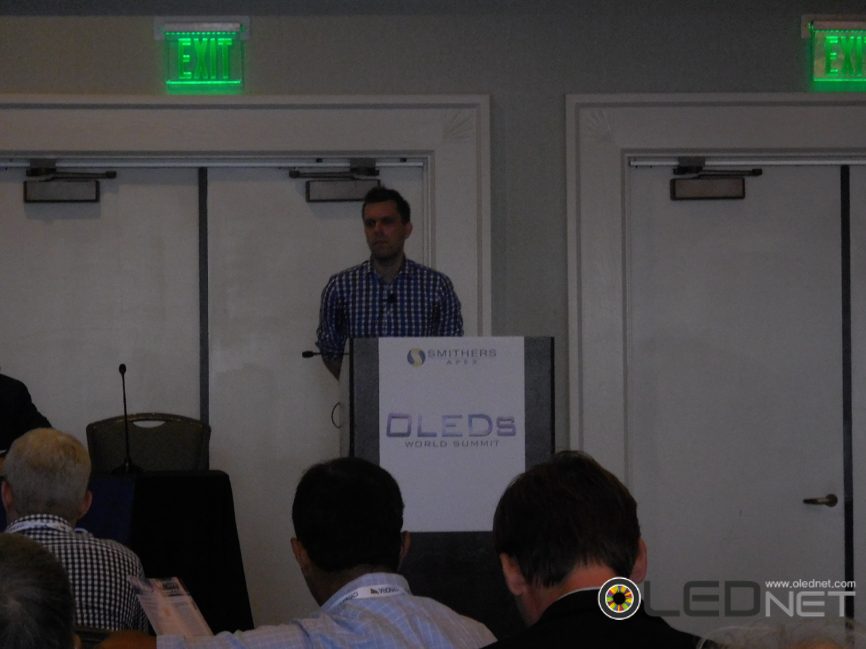
<OTI Lumionics의 Michael G. Helander>
In OLED summit 2016 held in San Diego, USA on 21st(local time), general manager of LG Display Joosu Im gave presentation on “Going forward with pOLED & future challenges” which is about 5 core technology that must-be developed in pOLED and the next pOLED.
As 5 types of core technology of pOLED, dream picture quality, design freedom, process simplication, cost innovation, a diversity of pOLED products were selected.
The presentation focused on topics such as, in dream picture quality, HDR and BT-2020 are applied in high resolution, and in design freedom, new TSP sensor development such as low stress TFT and metal mesh, and durability improvement of flexible window cover.
Also, he emphasized the process development for reducing the panel layer such as low temperature process and touch integration for process simplification, and the need for cost innovation through it. Lastly, he suggested material development (such as phosphorescence, TADF blue) in low power for diversity of pOLED products such as monitor for VR and PC, and automobile diversity of pOLED products, and also suggested changes of pixel design for enhancing the open ratio.
As a new opportunity for pOLED, he pointed out applications on foldable, automotive, and VR devices, and mentioned transparent display as the next pOLED.
This LG Display presentation is very much similar to Samsung’s previous presentation about Samsung Display in IMID 2016, and it looks like the development process and roadmap of the two companies are identical in pOLED (flexible OLED).
Especially, seeing that BT2020 application in AMOLED panel for mobile is previously mentioned by Samsung Display early this year, and now also mentioned by LG Display, it is expected that BT2020 application will become another main issue.
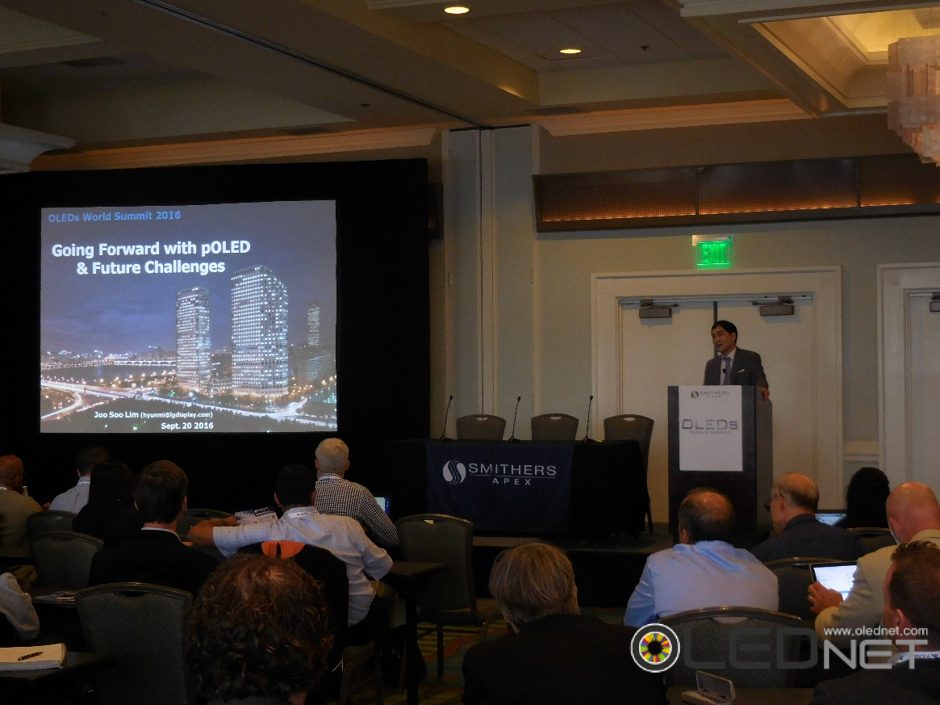
< LG Display general manager Joosu Im >
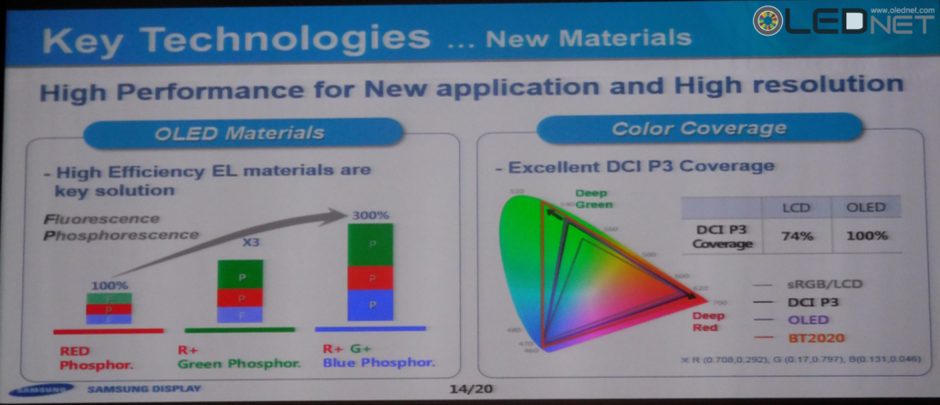
< Samsung Display presentation contents, IMID 2016 >
미국 샌디에고에서 개최중인 OLED Summit 2016에서 LG Display가 동급 최고모델인 65ich UHD OLED TV와 65inch Curved QD-LCD TV를 비교해 참석자들의 큰 관심을 끌었다.
비교 모델의 스펙은 아래와 같다.
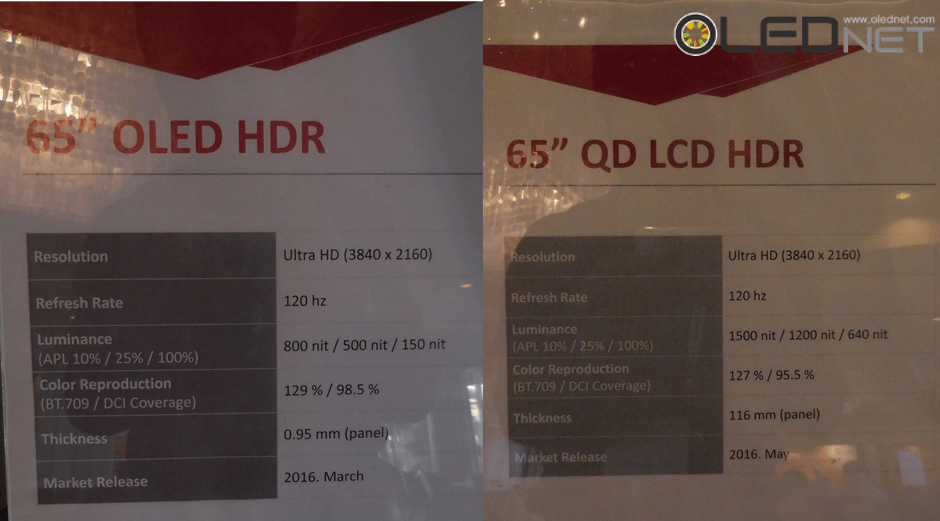
일반 TV 프로그램, 영화 등의 다양한 영상과 패턴을 통해 OLED TV와 QD-LCD TV의 다양한 화질을 비교할 수 있도록 전시하였다.
LG Display 관계자는 “OLED TV와 QD-LCD TV를 UHD Alliance 표준인 white 색온도 6500K를 표현할 수 있는 모드로 설정을 하게 되면 OLED TV가 QD-LCD TV에 비해 압도적으로 black를 잘 표현하고 있음을 볼 수 있다. 기본적으로 QD LCD TV가 휘도는 OLED TV보다 높지만 기본은 LCD이기 떄문에 OLED TV의 색감보다 white 톤이 더 가해져 왜곡되는 느낌을 받는다. 또한 시야각에서도 OLED TV는 왜곡이 거의 없이 표현할 수 있지만 QD-LCD는 색이 왜곡된다.” 라며 OLED TV가 QD-LCD TV보다 우수한 화질을 강조하였다.
실제 전시장에서 상영된 영상을 비교해보면 아래 사진과 같이 우주영상에서 OLED TV는 별 하나하나를 선명하게 표현하는 반면 QD-LCD TV는 별을 희미하게 구분할 수 있을 정도로만 표현되었다. 시야각 측면에서도 OLED TV의 좌 우 색변화는 거의 없었지만 QD-LCD TV는 색이 변하는 것을 확인할 수 있었다.
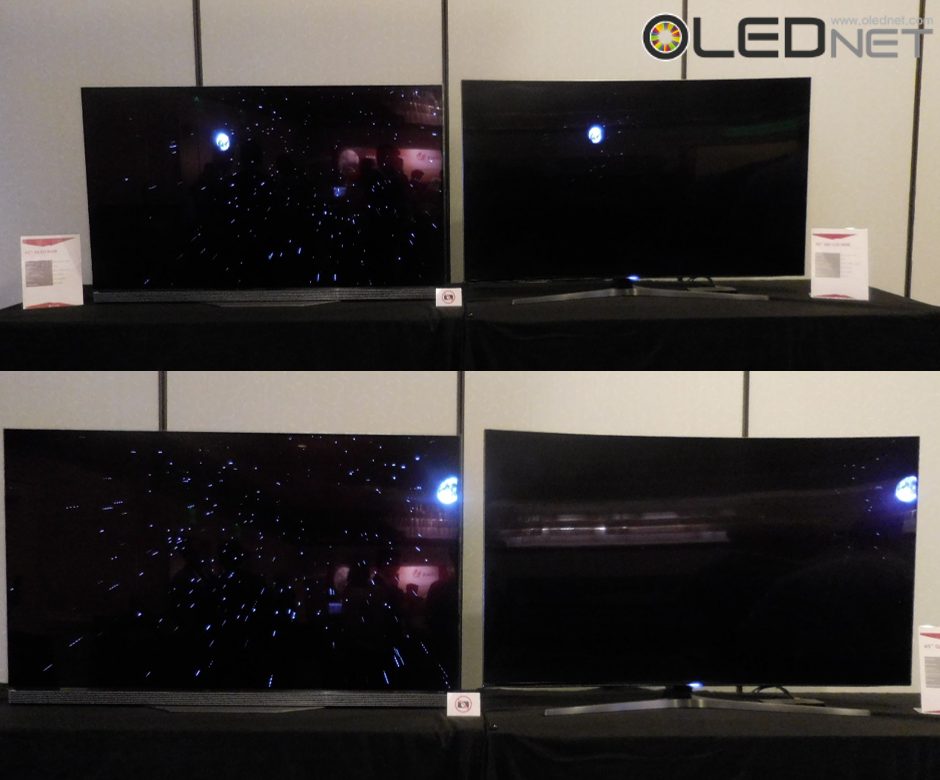
<65inch OLED TV(좌)와 65inch curved QD-LCD TV의 Black 표현력 비교>
지난번 SID2016의 나노시스와 QD비젼이, IFA 2016에서 삼성전자와 하이센스가 QD-LCD TV가 OLED TV보다 우수함을 강조하였지만, 이번 OLED Summit 2016에서는 LG Display가 QD-LCD TV보다 OLED TV가 훨씬 뛰어남을 보여주었다.
이처럼 QD-LCD TV진영과 OLED TV진영간의 화질 경쟁이 더욱 치열해 지고 있으며, 앞으로의 TV시장에서 어떤 TV가 소비자들에게 인정을 받을 수 있을 지 업계의 관심이 주목되고 있다.
삼성디스플레이 OLED 패널로 만든 Mirror OLED TV
Galaxy Gear S3, smart watch
더 밝아진 삼성전자 SUHD TV
21일(현지시간) 미국 샌디에이고에서 개최된 OLED summit 2016에서 LG Display의 임주수 부장은 “Going forward with pOLED & future challenges” 라는 주제로 pOLED에서 반드시 개발되어야 할 5가지 core technology와 next pOLED에 대해 발표하였다.
pOLED의 5가지 core technology로서 dream picture quality와 design freedom, process simplication, cost innovation, a diversity of pOLED products를 꼽았다.
Dream picture quality에서는 고해상도에서의 HDR과 BT2020 적용을, design freedom에서는 low stress TFT와 metal mesh등의 신규 TSP sensor개발, flexible window cover의 내구성 향상을 핵심 과제로 발표하였다.
또한 process simplication을 위한 저온 공정과 터치 일체화처럼 panel의 layer를 감소시킬 수 있는 공정 개발과, 이를 통한 cost innovation이 필요함을 강조하였다. 마지막으로 VR과 PC용 모니터, 차량용 등 diversity of pOLED products를 위해서 저전력을 위한 재료개발(인광블루, TADF 블루 등), 개구율을 높이기 위한 pixel design 변경을 제안하였다.
pOLED의 새로운 기회로서는 foldable과 automotive, VR 기기에 적용을 꼽았으며, next pOLED로서 transparent display를 언급하였다.
이번 LG Display의 발표는 지난 IMID 2016에서의 Samsung Display의 발표와 굉장히 유사하며, pOLED (flexible OLED)에 대한 두 회사의 개발 방향과 로드맵이 일치하고 있는 것으로 분석된다.
특히 mobile 기기용 AMOLED panel에서 BT2020 적용은 Samsung Display에서 올해 처음 언급한데 이어 LG Display에서도 언급하여, 모바일 기기의 BT2020 적용이 또 하나의 핵심 이슈가 될 것으로 예상된다.

<LG Display의 임주수 부장>
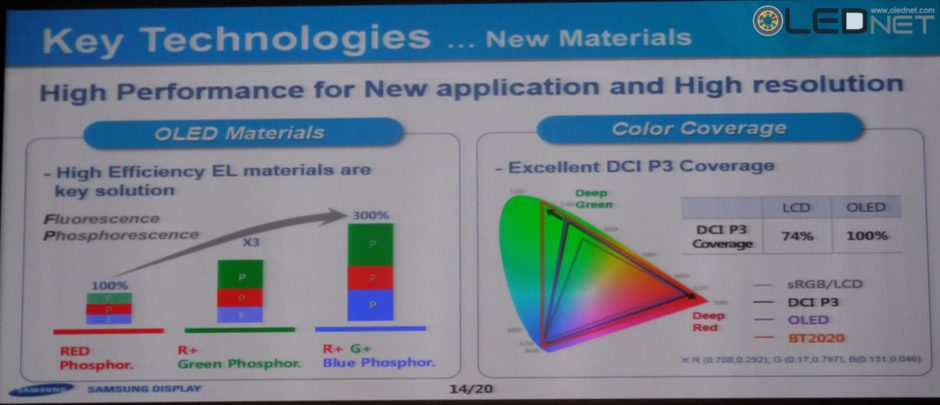
<Samsung Display 발표내용, IMID 2016>
[IFA2016] 삼성전자 Inorgnic TV 가상 색 특성
quantum dot 기술로서 만들어질 차세대 삼성전자 LCD TV의 상상 성능
OLED TV 진영에 합류한 Philips OLED TV 부스
OLED TV로서 만든 동굴
OLED TV가 유리 1장에 불과한 얇은 두께
It is expected that we may be able to meet flights with OLED technology soon.
In existing OLED market, display is applied in mobile field and lighting is applied in indoor lighting field, and it was known several companies seem to be proceeding projects to apply it at either rear lamp or dash board area of the automobile.
However, in IFA 2016 held in Berlin Germany, LG vice president of HE Bongseok Kwon had reporter meeting where he said “we are currently in negotiation with two global airlines to install OLED display at front monitor and window, and the period of application must be discussed for not only seats but also including all parts such as windows.
Especially, several companies including Lumiotech, OSRAM, and LG Inotech already introduced technologies for applying OLED in indoor purposes as well as other fields, and third panel companies are known to be developing technologies for engrafting airline industry, so there is much attention of the outcome of new application.
OLED is designed with thin and light characteristics as well as flexibility where it is good at utilizing space without taking up large volume. Due to its characteristics, the installation is easy without location or space restrictions. So if OLED is applied in window then the flight crew can control the light penetration without having to check the window, and also people will be able to check the flight information they desire through display, and diversify the size and shape of the main display and dashboard.
Aside from these visual effect, it is expected to lower the fuel usage by decreasing the total weight of the flight. According to the contents presented in UK governmental emerging institution CPI (Centre for Process Innovation) in 2014, the fixed fuel usage is expected to decrease by applying OLED due to decreased weight of the flight fuselage and fuel, and the fuel consumed by air-conditioning can also be reduced due to low power consumption and heat, as well as the exhaustion of greenhouse gas is expected to be minimized.
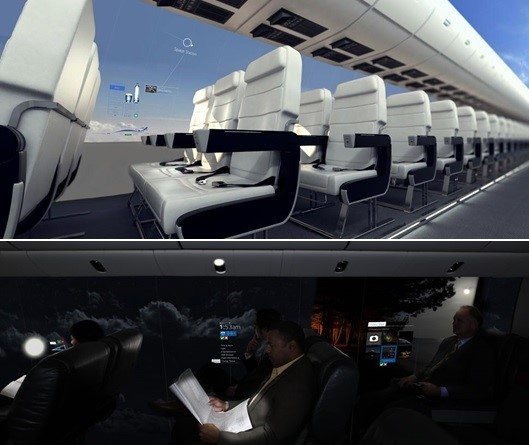
<Concept picture of flight’s interior with CPI’s OLED display applied>
Along with this, OLED related application and its industry is expected to develop continuously. According to 2016 OLED Display Annual Report published by the market research company Ubi industry research, AMOLED market is expected to be worth 14,800 million USD in 2016, and approximately 71,705 million USD in 2020 where the average yearly growth of about 49%. Also, starting from 2019 where companies’ investments actually begin, the profit for OLED lighting will also largely increase which it is expected to reach above 7,500 million USD by 2025. Therefore, it is expected to see various types of applications with OLED display or lighting in the near future.
유기발광다이오드(OLED) 기술이 접목 된 비행기를 곧 만날 수 있을 것으로 보인다.
기존의 OLED 시장에서 display는 모바일 분야에, lighting은 실내조명 분야에 적용 되었고, 몇몇 업체에서는 차량의 rear lamp나 dash board쪽에 이를 적용하기 위한 프로젝트를 진행 중인 것으로 알려졌었다.
하지만 국제 가전전시회(IFA) 2016이 열렸던 독일 베를린에서 LG 권봉석 HE사업본부장(부사장)이 기자 간담회를 갖고, “해외 항공사 2곳과 항공기용 정면 모니터와 창문 등에 OLED 디스플레이를 설치하는 방안을 협의 중이며, 이는 좌석용 뿐만 아니라 창문 등을 모두 포함하는 것으로 적용 시점은 논의해야 할 것”이라 말하며 OLED 산업이 본격적으로 확대 되는 것을 밝혔다.
특히나 루미오텍이나 오스람, 그리고 LG이노텍 등을 비롯한 몇몇 업체가 실내용 OLED 실내 조명 및 타 분야에 OLED를 적용하기 위한 기술을 선보이기도 하였으며, 타 패널 업체도 항공 산업 접목을 위해 기술개발 중인 것으로 알려져 새로운 application 창출에 대한 귀추가 주목되고 있다.
OLED는 얇고 가벼운 특성과 함께 휘어지도록 설계가 가능하여 큰 부피를 차지하지 않고 공간활용 측면에서 유리하다. 이러한 특성으로 위치나 공간의 제약없이 쉬운 설치가 가능하기에 창문에 OLED가 탑재된다면 투과율 조절을 통해 승무원이 창문을 확인 할 필요 없이 자동으로 빛의 투과를 조절하는 것은 물론, 디스플레이를 통해 승객들이 원하는 비행 정보 등을 확인 할 수 있을 것이며, 중앙 디스플레이와 계기판 등의 크기와 모양을 다양화 할 수 있을 것이다.
이러한 시각적 효과 외에도 비행기의 총 중량을 낮춰 연료 절감에 기여할 것으로 기대된다. 2014년 영국 정부 출현기관 프로세스혁신센터(CPI, Centre For Process Innovation)에서 발표한 내용에 따르면, OLED 적용 시 기존 대비 항공기 동체 및 연료 중량이 감소되어 고정적인 연료 소비 절감효과를 가질 것으로 예측하였으며, 추가적으로 소비전력과 발열 또한 낮아 냉방으로 소비되는 연료 또한 절감하고 온실가스 배출 또한 최소화 할 수 있을 것으로 기대하고 있다.

<CPI의 OLED display가 적용 된 비행기 내부 컨셉 사진>
이와 더불어 OLED 관련 application과 시장도 꾸준히 성장할 것으로 보인다. 시장조사업체 유비산업 리서치에서 발간한 2016 OLED Display Annual Report에 따르면, 2016년 AMOLED 시장이 14,800 million USD 규모로 형성될 것으로 예측하였으며, 2020에는 약 71,705 million USD로 약 49%의 연평균 성장률이 예측하고 있다. 또한 OLED lighting 역시, 업체들의 투자가 본격적으로 시작되는 2019년부터 매출액이 큰 폭으로 증가해 2025년에는 7,500 million USD 이상의 시장이 형성 될 것으로 전망하기에, 앞으로 다양한 형태로 OLED display 혹은 lighting이 접목 된 application을 만나게 될 수 있을 것으로 기대 된다.
The Apple Watch Series 2 has been officially unveil with iPhone 7 and iPhone 7 so it is expected that the battle between Samsung Gear S3 and the Apple Watch Series 2 can not be avoided even if the official release day of Samsung Gear S3 is undecided.
Apple Watch Series 2 has an improved water resistance rating of 50 meters and includes GPS unit for utilizing location information and tracking movements. Especially, the watch works with Pocketmon Go from Niantic INC which has been very sensational game all over the world. It was announced that the product has four models including Stainless steel, Hermès which Apple produced teaming up with Hermès, and Nike+ which Apple produced teaming up with Nike.
Samsung Gear S3 also includes GPS so it can make various useful functions altitude available for leisure activities and exercising with the sensors for altitude, atmospheric pressure and speed. Samsung Pay function also increases a variety of useful functions. In addition, with saving battery power ability improved, ADO (Always On Display) which is packed so that major alarms are always shown can make the watch is faithful to the original watch function. And the rotating bezel of Samsung Gear S3 attracts public gaze with its sophisticated design presenting the sensitivity traditional watch gave and its intuitive UI built up much better than before.
Both of the smart watches are packing an OLED display which can boast 1,000 Nits peak brightness so it is expected that a great deal of information can be shown on the clear display in bright sunlight. In particular, Apple enhanced the brightness of the display more than doubled than that of the prior product of 450 Nits and Samsung also enhanced the brightness 400 Nits more than that of the prior product.
It has been known that the AMOLED panel for Samsung smart watch is provided by SAMSUNG DISPLAY while Flexible AMOLED panel for Apple Watch Series 2 is supplied by SAMSUNG DISPLAY and LG DISPLAY.
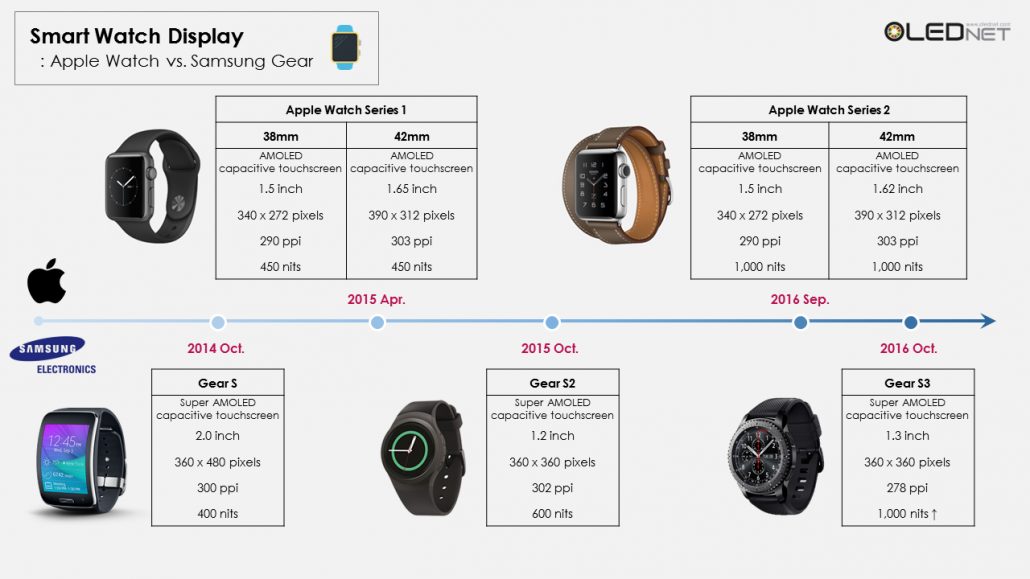
According to UBI research, the market of Smart Watch AMOLED panel is expected to be worth close to one hundred million in 2020 with average annual growth rate of 14%.
It is expected that large area OLED panel pixel formation technology, which is possible only using solution based and SMS(Small mask scanning) so far, gets possible using FMM process.
DAWONSIS developed the technology downward deposition method by joule heating, to make mass production of large area display panel possible and to enhance efficiency of material usage more than two times.
Joule heating deposition is the technology that if one induces voltage in conductive film, due to resistance, it can increase surface temperature rapidly only with low energy, so evaporate organic materials films formed on conductive film rapidly only with low energy.
DAWONSIS evaporation technology key concept is followed by:
One forms organic material films on source substrates, and deposits the organic material films on panel positioned at down side whole at a time by using Joule heating.
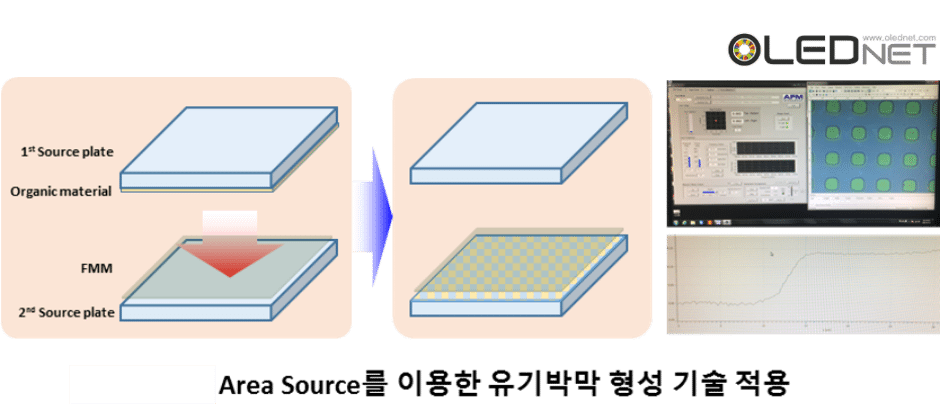
According to DAWONSIS, it is said that
“Compared to point source or linear source, used in conventional deposition process, Joule heating deposition process is very fast deposition rate, more than 100 A/s, due to the use of area source. The efficiency of material usage is about 70~80%, more than two times efficient than conventional method, also downward deposition is applicable to large area FMM process, verification experiment results show that shadow effect dimension is 4um, which enables high resolution process. Therefore JIES evaporation equipment can be an innovative solution to fabricate large area OLED panel. ”
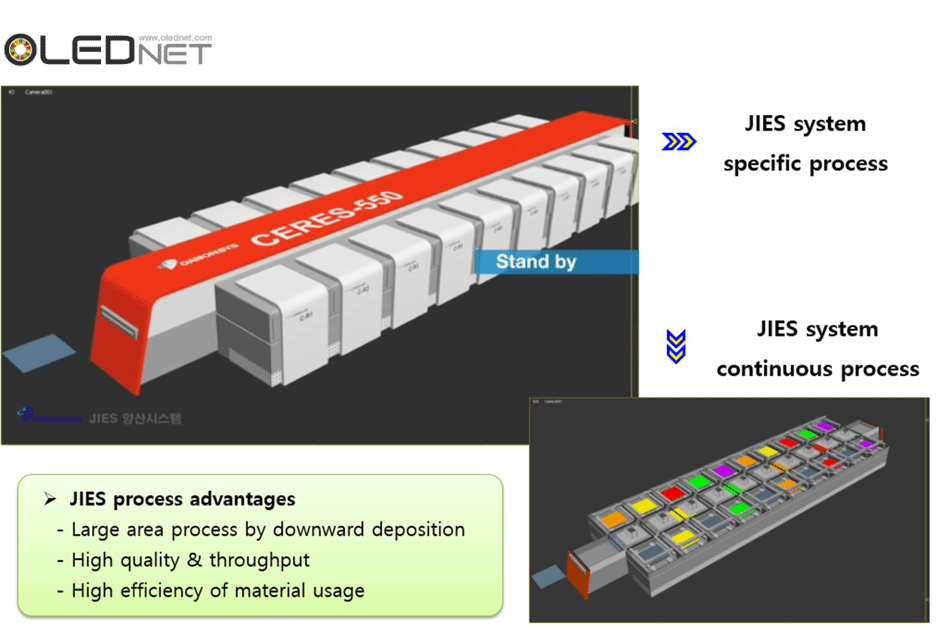
In conventional OLED TV, due to FMM’s deflection, it has had a problem to fabricate it as RGB method. So OLED TV panel on production line, adopts white OLED + color filter method using open mask
In order to make OLED TV by using RGB method, solution process can be also strong candidate.
But lack of efficiency of soluble luminous material and its life time, it cannot be applicable to mass production.
If one adopts the deposition technology that DAWONSIS developed, real RGB structure can be realized in OLED TV panel by using FMM process, since it uses conventional deposition materials as it is, efficiency and life time can be guaranteed. We expect that DAWONSIS’s new deposition technology can make an impact on large area OLED panel fabrication technology.
애플이 7일(현지시간) 아이폰 7과 7플러스와 함께 애플워치2를 공개하며 지난 31일(현지시간) 공개된 삼성의 기어 S3와 전면전을 펼치게 되었다. 기어 S3는 출시일이 미정이지만 애플워치2와의 전면전을 피할 수 없게 되었다.
애플워치2는 수심 50미터까지 방수가 되는 방수 기능을 강화했고, GPS 유닛이 추가되어 위치 정보 이용 및 운동 추적 기능도 강화되었다. 특히 전세계적으로 돌풍을 이르킨 나이앤틱의 인기 모바일 게임 ‘포켓몬 고’ 앱이 기본 탑재된다.
스테인레스 소재의 애플워치, 에르메스와 함께 만든 ‘애플워치 에르메스’, 나이키와의 협력제품인 ‘애플워치 나이키+’ 등 4종의 애플워치2를 발표했다.
삼성의 기어 S3는 GPS가 탑재되어 고도, 기압, 속도계로 다양한 레저활동과 운동을 할 때 유용한 기능들이 추가되었고, 삼성페이도 추가 탑재됨에 따라 다양한 편의성이 증가 되었다. 또한 배터리 소모를 최소화하며 주요내용을 화면에 표시하는 ‘올웨이즈온디스플레이(AOD)’도 갖춰 시계 본연의 기능에 충실할 수 있게 되었다.
또한, 전통 시계의 감성을 담은 세련된 디자인과 전작보다 더 강화된 회전 베젤의 직관적인 UI로 시선을 모으고 있다.
두 스마트워치 모두 OLED 디스플레이를 탑재하며 1,000 nits 이상의 최대 밝기를 구현하여 밝은 야외에서도 다양한 정보를 선명한 화면으로 확인할 수 있도록 구현하였다. 특히 애플워치2는 전작의 450 nits에서 두배 이상, 기어3도 전작대비 400nit 이상 밝기를 강화하였다.
현재 스마트워치용 AMOLED 패널은 삼성전자의 스마트워치용 flexible AMOLED panel은 삼성디스플레이 단독으로 공급하고 있으며, 애플워치2용 flexible AMOLED panel은 삼성디스플레이와 LG디스플레이에서 공급하는 것으로 알려져 있다.

한편 유비산업리서치에 따르면 스마트워치용 AMOLED 패널 시장은 2020년까지 연평균 약 14%로 성장하여 1억 대 이상의 시장을 형성할 것으로 전망했다.
용액공정과 SMS(Small mask scanning)방식으로만 접근되었던 RGB 방식의 대면적 OLED panel용 화소형성 기술이 FMM으로도 가능해 질 것으로 기대된다.
다원시스는 대면적 디스플레이 패널 양산에 적용이 용이하고 재료사용효율을 기존 보다 2배 이상 향상시킨 주울 가열 증착 공정 방식의 하향식 증착 기술을 개발하였다.
주울 가열 증착 이란 도전성 박막에 전압을 가하면 저항으로 인하여 짧은 시간 안에 적은 에너지로 표면 온도만 빠르게 높여 도전성 박막 위에 형성된 organic material 막을 적은 에너지로 빠르게 증발 시킬 수 있는 기술이다.
다원시스에서 개발한 증착 기술 컨셉은 다음과 같다. 소스기판 위에 organic materials 박막을 형성하고 주울 가열을 사용하여 소스기판 표면의 organic materials을 전부 한번에 하부에 위치한 panel로 증착 시키는 방식이다.

다원시스 관계자에 따르면 “기존 증착 공정에서 사용하는 point source 나 Linear source에 비해 주울 가열 증착 공정은 Area source를 이용하기 때문에 증착 속도가 약 100 A/s 이상으로 굉장히 빠르다. 또한 재료사용 효율이 70~80%로 기존 증착공정대비 2배 이상 향상되며 하향식 증착으로 대면적에 FMM 방식이 적용 가능하고, 검증 실험 결과 shadow effect dimension이 4 μm 로서 고해상도 구현이 가능하다. 따라서 JIES 증착 장비는 대면적 OLED의 새로운 solution이 될 수 있을 것” 이라고 밝혔다.

기존의 대면적 OLED TV는 FMM의 처짐 현상으로 인하여 RGB 방식으로의 제조에 어려움을 겪고 있었다. 따라서 현재 양산중인 OLED TV용 panel은 open mask를 적용한 white OLED + color filter 방식을 적용하고 있다.
또한 대면적 OLED TV를 RGB 방식으로 제조하기 위해 solution process도 적극적으로 개발 중이지만 soluble 발광재료의 효율과 수명 이슈로 아직까지 양산에 적용되고 있지 못하는 상황이다.
하지만 다원시스에서 개발한 증착 기술을 적용하면 FMM을 적용한 진정한 RGB 구조의 OLED TV용 panel 제조가 가능해지며, 기존 사용되고 있는 증착 재료를 그대로 적용 가능하기 때문에 효율과 수명도 확보할 수 있다.
이번 다원시스의 새로운 증착 기술이 앞으로의 대면적 OLED panel 제조 기술에 어떤 영향을 미칠지 기대된다.
Below is the interview of Philips when displaying large scale OLED TV in IFA 2016.
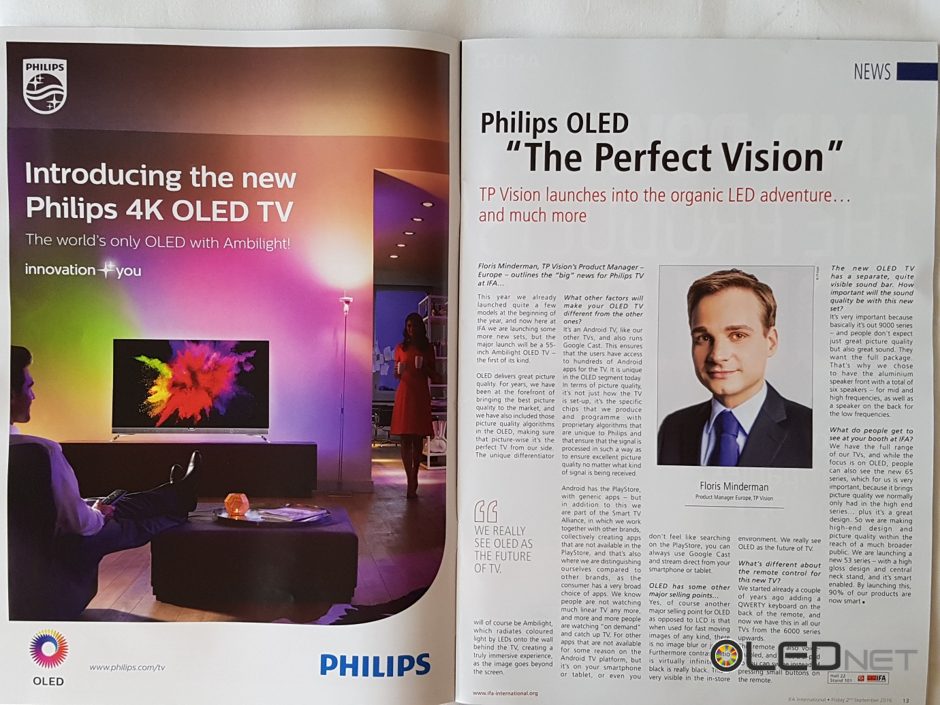
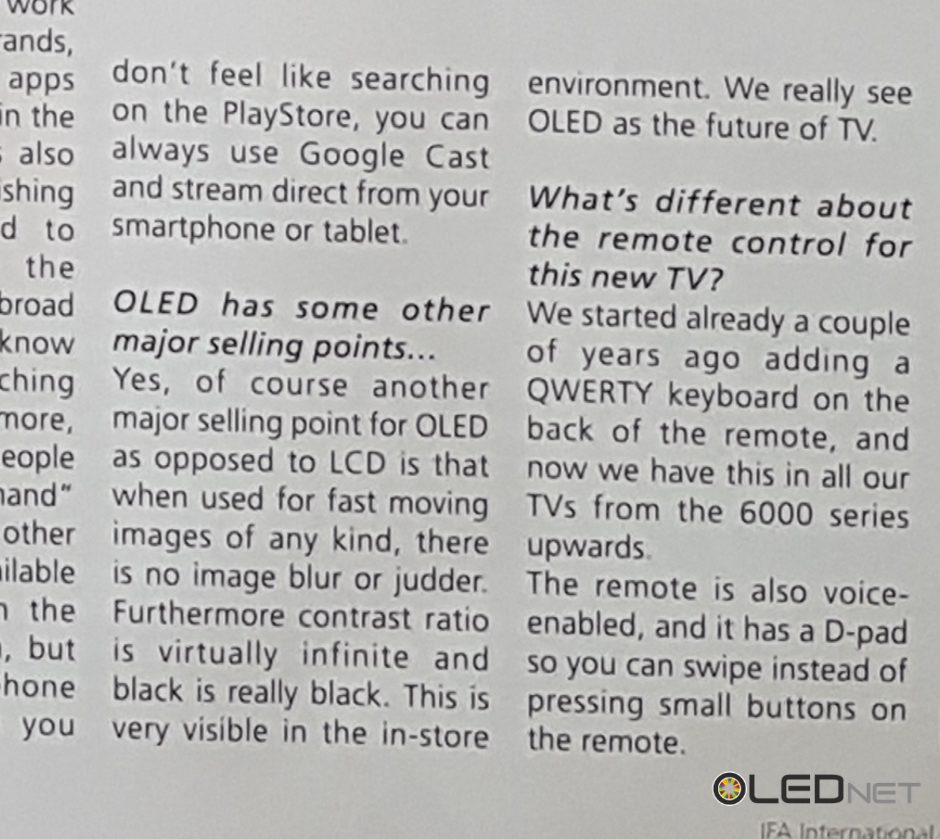
The future of TV viewed by Philips is OLED TV.
“We really see OLED as the future of TV”
Samsung Electronics TV Booth displayed in IFA2016 is very different from before. There are two types of LCD TVs in the market currently: the existing TV using LED BLU, and SUHD TV that uses quantum dot sheet. However, the product that was introduced and occupied a lot of booth exhibition space was the inorganic TV that uses quantum dot display, a product with unclear release date.
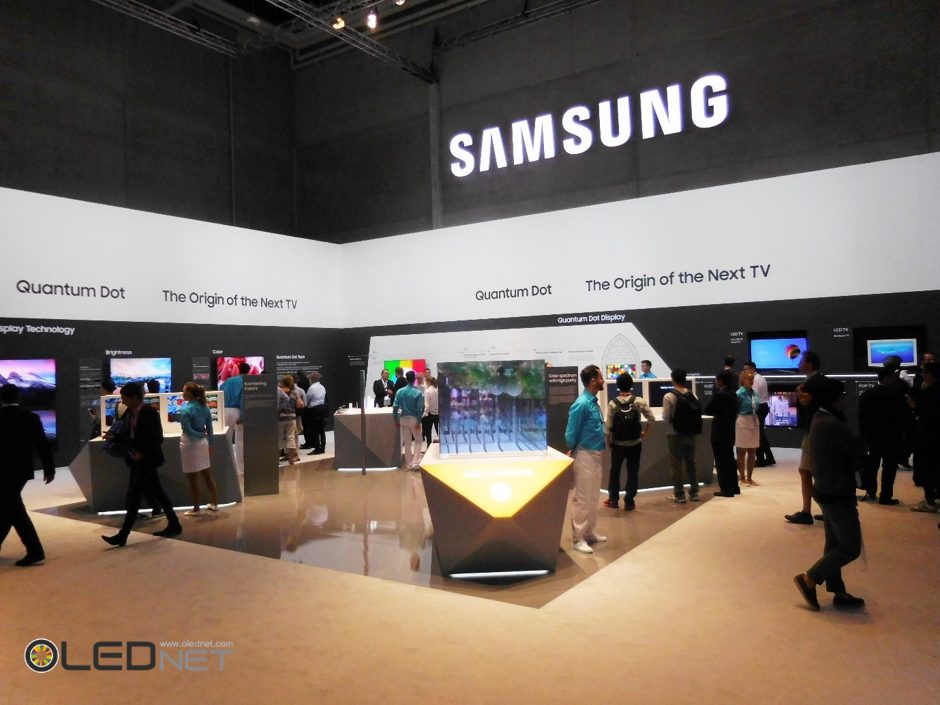
The conceptual inorganic TV that Samsung Electronics introduced instead of actual TV product is a product that displays far superior performance to OLED TV. As time goes by, the “organic” that represents OLED TV loses its function as a TV due to its rapidly decreasing brightness, whereas “inorganic” does not undergo such changes. If this is true, it is an excellent product that may well be used forever.
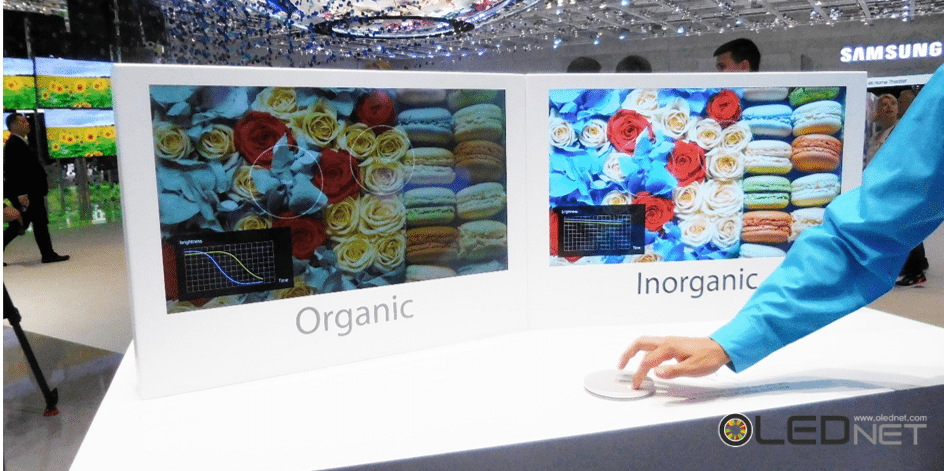
In another concept exhibition, Samsung Electronics introduced the superior color purity of Inorganic TV.
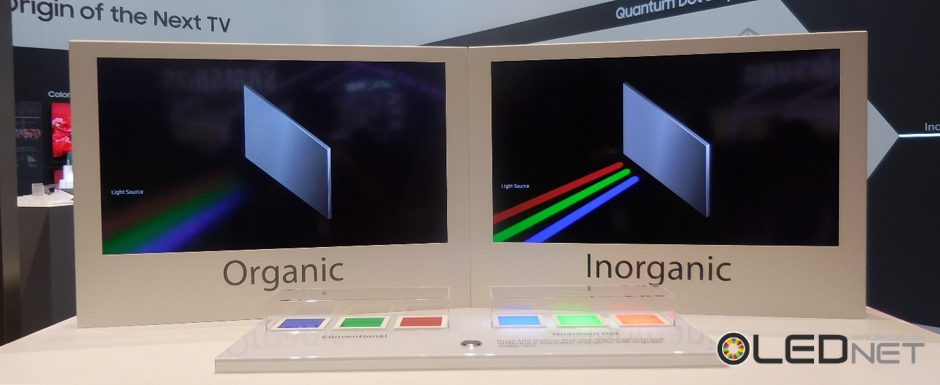
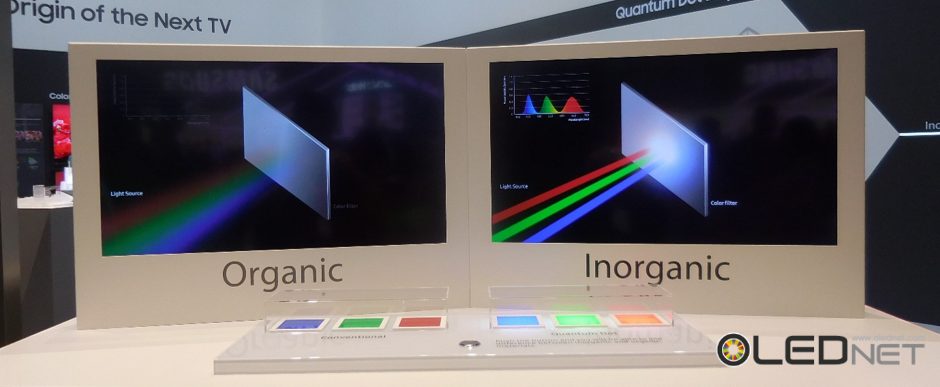
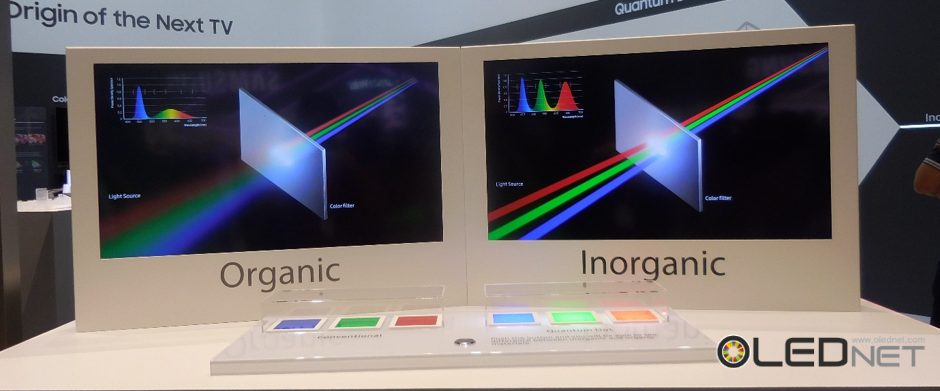
The light coming from the Organic TV light source has very vague RGB. In contrast, inorganic TV originates from clear RGB. Inorganic creates independent wavelength and intensity even before this light arrives at the color filter, whereas organic still displays a vague light with separated color.
The structure of inorganic TV seen from this is assumed to be a form in which a quantum dot substance is inserted between the screen and the color filter.
Finally, the light of organic, which goes through the color filter, lacks color purity of the three primary colors because it converts two-wavelength light with blue and green-red to three-wavelength.
However, even before arriving at the color filter, the light with superior color purity is emitted outside in inorganic.
If these two exhibitions are true, Samsung Electronics is preparing an incredible next-generation TV.
The problem pointed out by the participants is that this technology has not been born yet, and it is merely a concept. Samsung Electronics has described the unknown world with confidence, which is ironically viewed as if they are utterly unprepared for the future TV.
Moreover, by comparing OLED TV with a TV technology of the future instead of the SUHD TV currently in the market, they have indirectly admitted that OLED TV is better than the SUHD TV that uses quantum dot.
In IFA2016, Samsung Electronics wanted to show that SUHD TV will continue to grow and that OLED TV will disappear eventually. However, they have admitted that they are in an urgent situation in which, due to the superiority of OLED TV to the current SUHD TV, it cannot avoid being compared to the inorganic TV of the future.
Finally, whatever is done to LCD TV, black should be avoided, because it is LCD.
Philips가 IFA2016에서 대규모 OLED TV를 전시하며 인터뷰한 내용을 간단히 소개한다.


Philips가 보는 TV의 미래는 바로 OLED TV이다.
“We really see OLED as the future of TV”
IFA2016에서 보인 삼성전자의 TV 부스는 이전과 매우 다른 점이 있다. 현재 시판 중인 LCD TV에는 LED BLU를 사용하는 기존 TV와 quantum dot sheet를 사용하는 SUHD TV 2종류이다. 그런데 부스 전시 공간 중 매우 넓게 차지하며 소개된 제품은 언제 나올지 알 수 없는 quantum dot display를 사용한다는 inorganic TV이다.

심성전자가 실제 TV 제품 대신 소개한 개념적인 inorganic TV는 OLED TV 보다 월등히 성능이 우수한 제품이다. OLED TV를 나타내는 “organic”은 시간이 지남에 따라 휘도가 급격히 떨어져 TV의 기능을 완전히 상실하지만 “inorganic”은 변화가 거의 없다. 이 내용이 사실이라면 영원히 사용할 수 있을 것 같은 우수한 제품이다.

또 다른 개념 전시 내용에서 삼성전자는 Inorganic TV의 색순도가 월등히 우수함을 알렸다.



Organic TV 광원에서 나오는 빛은 RGB가 아주 애매하다. 이에 비해 inorganic TV는 태생부터가 확실한 RGB로 시작한다. 이 빛이 칼라필터에 도착하기 전에 이미 inorganic은 독립적인 파장과 세기를 형성하였으나 organic은 여전히 색이 분리되지 않는 애매한 빛이다. 여기서 볼 수 있는 inorganic TV 구조는 액정과 칼라필터 사이에 quantum dot 물질이 삽입되는 형태일 것으로 추정된다. 마지막으로 칼라필터를 통과한 organic의 빛은 청색과 녹적이 섞여 있는 2파장 빛을 3파장으로 변환 시킨 것이어서 삼원색 색순도가 떨어진다는 것이다. 이에 비해 inorganic은 칼라필터 도달 전보다 훨씬 색순가 뛰어난 빛이 더 강하게 외부로 나가고 있다.
이 두가지 전시 내용이 사실이라면 삼성전자는 정말 엄청난 차세대 TV를 준비하고 있다.
문제는 이 기술은 태어나지도 않았고 엄마 뱃속에도 없는 완전 개념에 불과하다는 것이 전시장 참석자들의 지적이다. 뭐가 나올지 알 수 없는 미지의 세계를 너무 정확히 자신 있게 묘사한 삼성전자에 대해서는 역설적으로 미래 TV에 대한 준비가 전혀 되어 있지 않는 상황으로 보여지고 있다.
더욱이 OLED TV를 현재 시판 중인 SUHD TV와 비교하지 않고 미래의 TV 기술과 비교 함으로서 quantum dot을 사용하는 SUHD TV 보다 OLED TV가 우수하다는 것을 간접적으로 시인하고 말았다.
삼성전자는 IFA2016에서 SUHD TV가 지속 성장할 것임을 알리고 싶어 했고 OLED TV는 조만간 사라질 것이라고 표현하였으나, 오히려 OLED TV가 현재의 SUHD TV 보다 우수하기 때문에 미래에 만들어질 inorganic TV와 비교하지 않을 수 없는 급박한 상황인 것을 자인해 버렸다.
마지막으로 LCD TV에 무슨 짓을 해도 black은 안된다. LCD이기 때문에
It is expected that AUO will begin mass-producing AMOLED panel for VR.
AUO displayed AMOLED panels for 1.2-1.6 inch smart watch, 12.3 inch vehicles, and 3.8 inch VR in Touch Taiwan 2016.
In particular, the AMOLED panel for VR is composed of 2 sets of 3.8 inch, and each AMOLED panel’s resolution is 423 ppi of 1080×1200. Using 2 AMOLED panels, 2K (2160×1200) resolution has been realized.
According to a staff from AUO, “there are plans to intensively mass-produce AMOLED panels for wearables and VRs; and in particular AMOLED panel for VR are being produced and supplied to Razer and OSV. From Q4 2016, mass-production will be initiated in earnest to ship over 100,000 units.”
AUO’s AMOLED panels for VR are being sold as modules to a company called Vitrolight technology. According to Vitrolight technology’s website AUO’s AMOLED panel module for VR is US$240-350 for 1 piece and 2,000 pieces can be supplied per month.
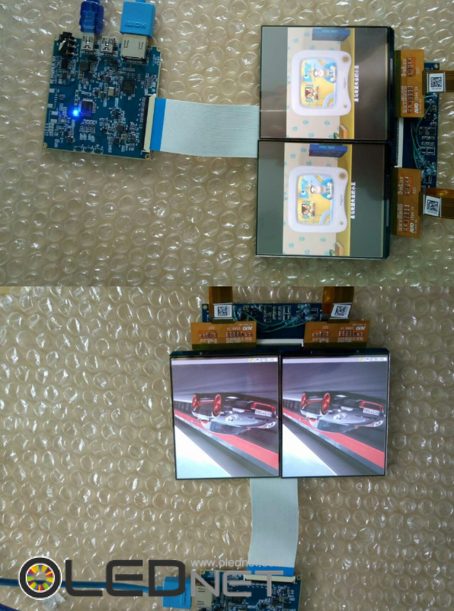
<AMOLED panel of AUO for VR, Vitrolight technology>
AUO에서도 VR용 AMOLED panel을 본격적으로 양산할 것으로 기대된다.
AUO는 Touch Taiwan 2016에서 1.2~1.6inch smart watch용 AMOLED panel과 12.3inch 차량용 AMOLED panel, 그리고 3.8inch VR용 AMOLED panel을 전시하였다.
특히 VR용 AMOLED panel은 3.8inch 2set로 구성되었으며, 각 AMOLED panel의 해상도는 1080×1200의 423 ppi이다. 2개의 AMOLED panel을 사용하여 2K 해상도(2160×1200)을 구현하였다.
AUO 관계자는 “Wearable과 VR용 AMOLED panel을 집중적으로 양산할 계획이며, 특히 VR용 AMOLED panel은 일부 생산하여 Razer과 OSV에 공급하고 있다. 2016년 Q4부터 본격적으로 양산하여 분기별 100,000대 이상 출하할 예정이다.” 라고 밝혔다.
AUO의 VR용 AMOLED panel은 Vitrolight technology라는 업체에서 현재 모듈로 판매중에 있다. Vitrolight technology 홈페이지에 따르면 AUO의 VR용 AMOLED panel 모듈 가격은 1 piece당 US$ 240~350으로 월 2,000 pieces까지 공급 가능한 것으로 나타났다.

<AUO의 VR용 AMOLED panel, Vitrolight technology>
After two and a half years have passed since the CES 2014, where Samsung Electronics expressed that it would need about three more years to develop OLED TV due to its insufficient technology at the time, in IFA 2016t it has strongly emphasized that it will not be engaging in OLED TV business.
Recently, in an interview with a local press, Samsung Electronics stated that there were still problems with the definition of the OLED TV and that it will continue engaging in the TV business with QLED TV within the near future.
In IFA2016, it revealed Samsung Electronics’ thoughts on the past, present, and future of TVs.
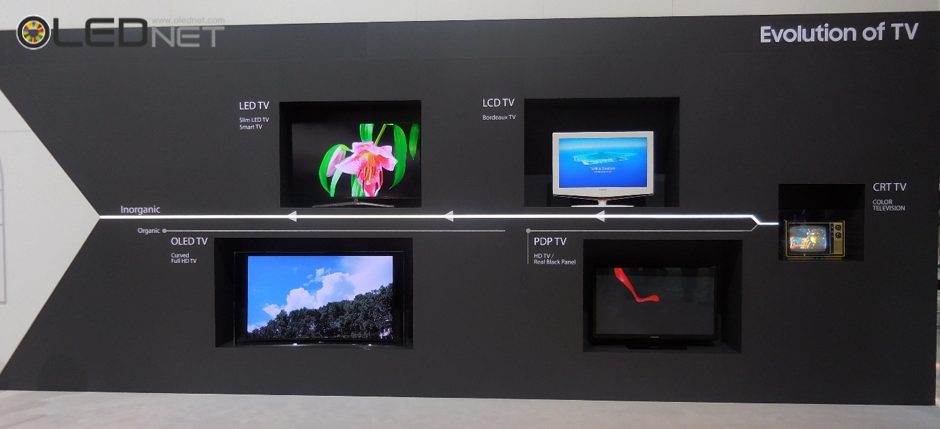
Based on the materials provided at Samsung’s booth, LCT TVs of the past have extended their legacies into LED TVs, and in the future they will evolve into quantum dot TVs that use inorganic materials. Moreover, in the same manner as PDP TVs which have disappeared from the TV market OLED TVs will disappear after having reached the level of curved FHD TV.
Looking at this material, it seems like Samsung Electronics is not paying attention to other LCD TV sets but only LG Electronics’ OLED TVs.
As a matter of fact, it is natural for Samsung Electronics’, the no.1 market leader of TV market, to be disturbed by LG Electronics’ OLED TV which is expanding its market share in the premium TV market. However, at this point where 55-inch and 65-inch UHD OLED TVs are selling well, whether Samsung Electronics’ display contents were legitimate is questionable.
Presenting negative views regarding competitors is acceptable in terms of marketing, but at this display it seemed to be excessive. Also, Samsung Electronics even provided durability comparisons between inorganic TVs (Quantum dot TV) and OLED when inorganic TVs do not even exist.
The main point of the comparison was that the colors of OLED TVs change severely according to the passing of time whereas inorganic TVs do not.
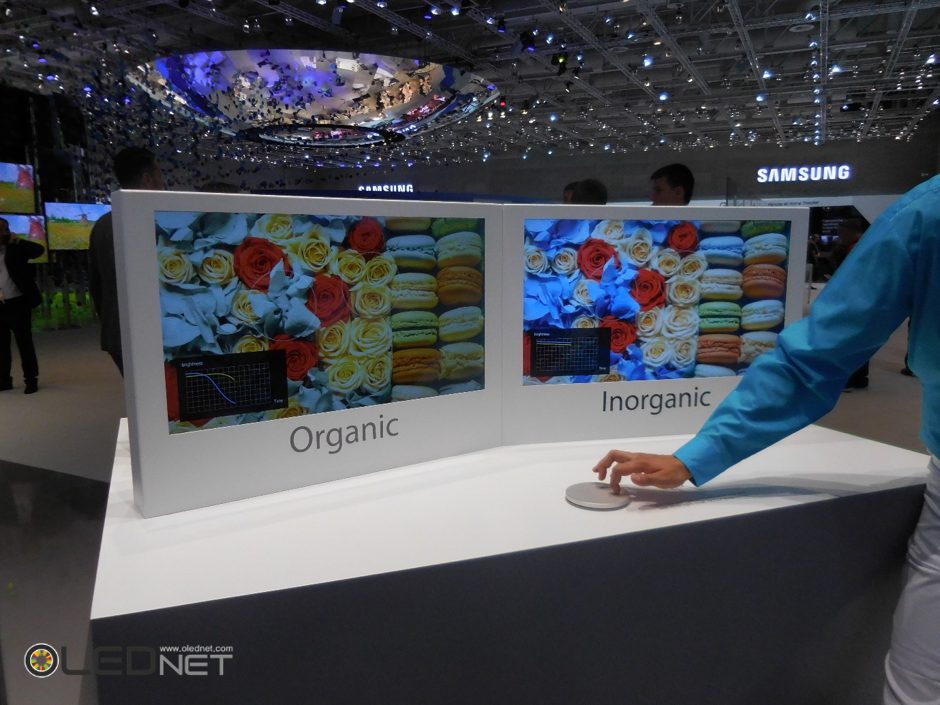
Contents from a U.S. consumer report website were still being displayed as follows. In the “best TV 5” of 2015, there are three LG Electronics’ OLED TVs, and no.1 was the 65-inch UHD OLED TV.
The end of OLED TVs is not likely to come as fast as what Samsung Electronics predict. It is just the beginning for OLED TVs.
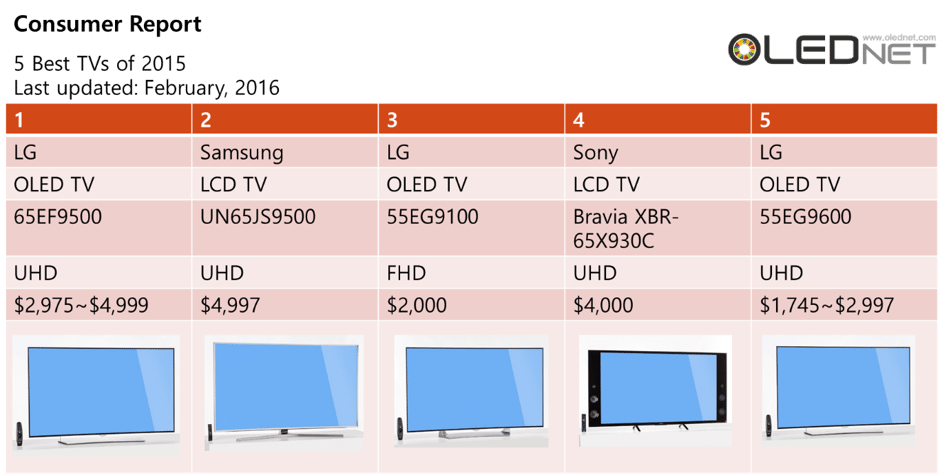
In IFA2016, there were 11 companies that displayed OLED TVs, including LG Electronics. These companies were Vestel, Skyworth, Loewe, Philips, Grundig, Seiki, Metz, Changhong, Panasonic, and Condor, in the order of display scale.
In IFA2016 there were 6 companies, but this time 5 more companies joined the league. This is almost a double growth rate. At this exhibition, 1 company, Haier, did not return to participate and the new participants are Loewe, Philips, Seiki, Metz, and Condor.
Among these participants, Loewe stands out in particular.
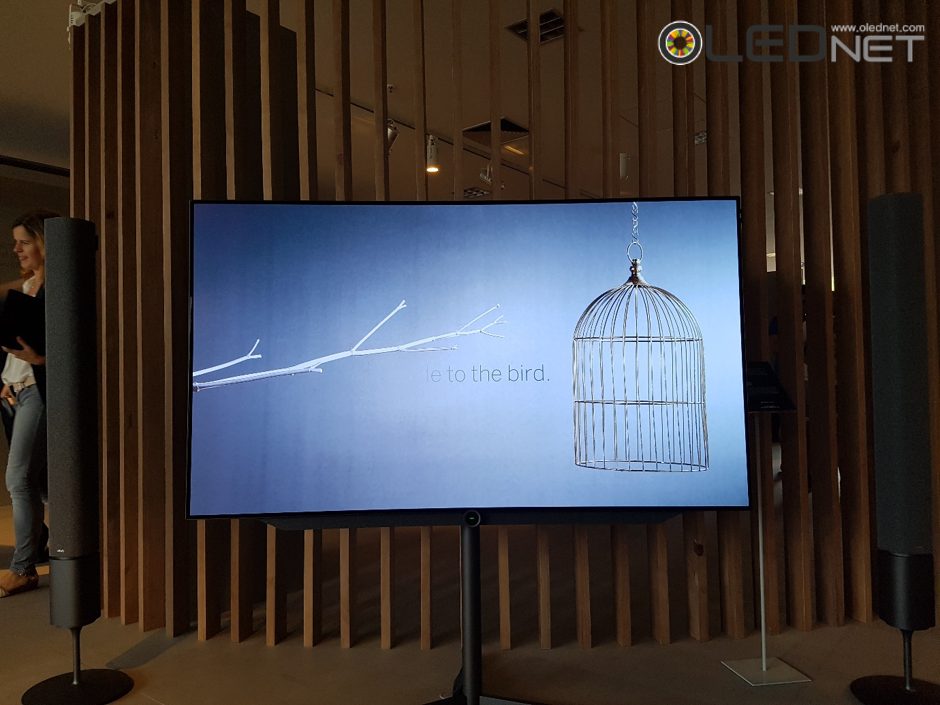
Furthermore, in the Loewe OLED TV PR panel it is written as follows. “OLED display thinner than a smartphone” and “The most beautiful OLED TV in the world”.
Philips used the entire space for displaying TVs to present OLED TVs aside from the walls. On the walls there were LCD TVs, but OLED TVs were presented at the center so that participants can view the space three-dimensionally.
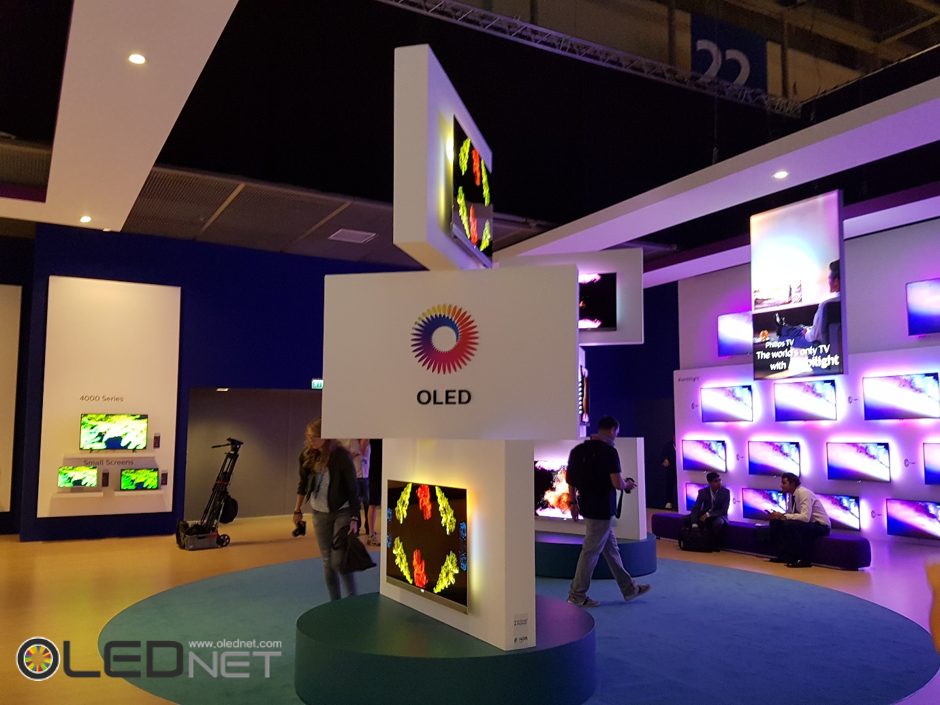
Hence, this was a display that showed that LCD TVs will be replaced by OLED TVs.
The most dynamic display of LG Electronics is the Skyworth indeed. It is a car racing game video that informs the high-speed response speed of OLED TV that has been presented since IFA2015. The difference with the previous display was that the products’ OLED panels have all been applied with HDR. They became brighter than last year.
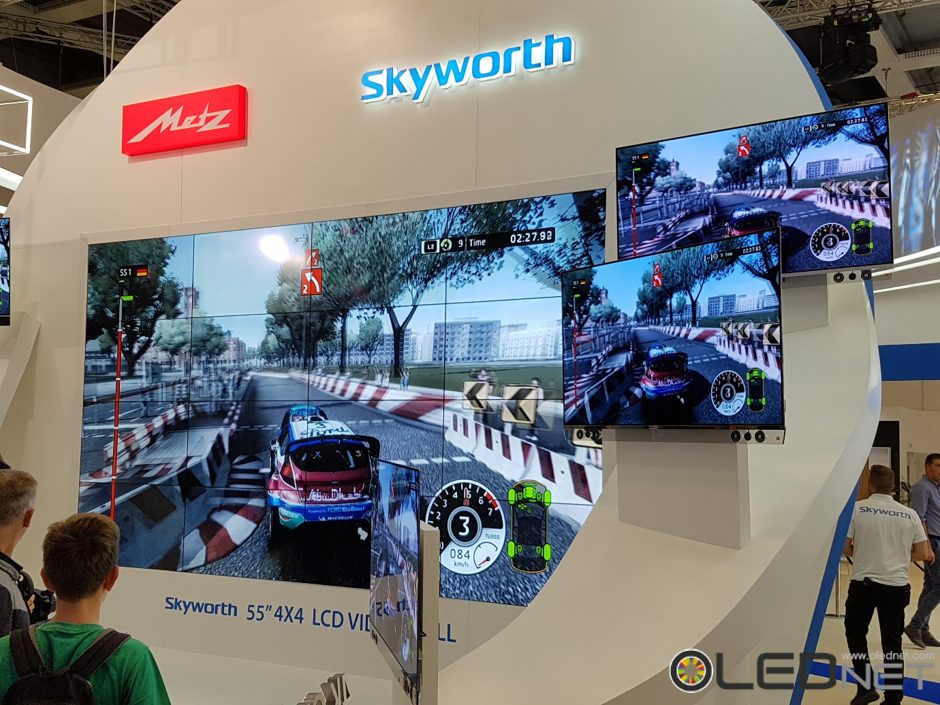
Hisense was company that showed displays, although not selling OLED TVs. So, including Hisense, there were 12 companies in total. In a bid to promote the ULED TV’s superiority, which it is currently selling, Hisense presented a display that compared ULED TV with the OLED TV. The product that has been used in this exhibition was an OLED product from last year. When actually observed, it was darker than the ULED TV. However, at Skyworth, of which the booth was right next to it, the super high-definition OLED TVs are displayed. The booth location was badly selected for Hisense.
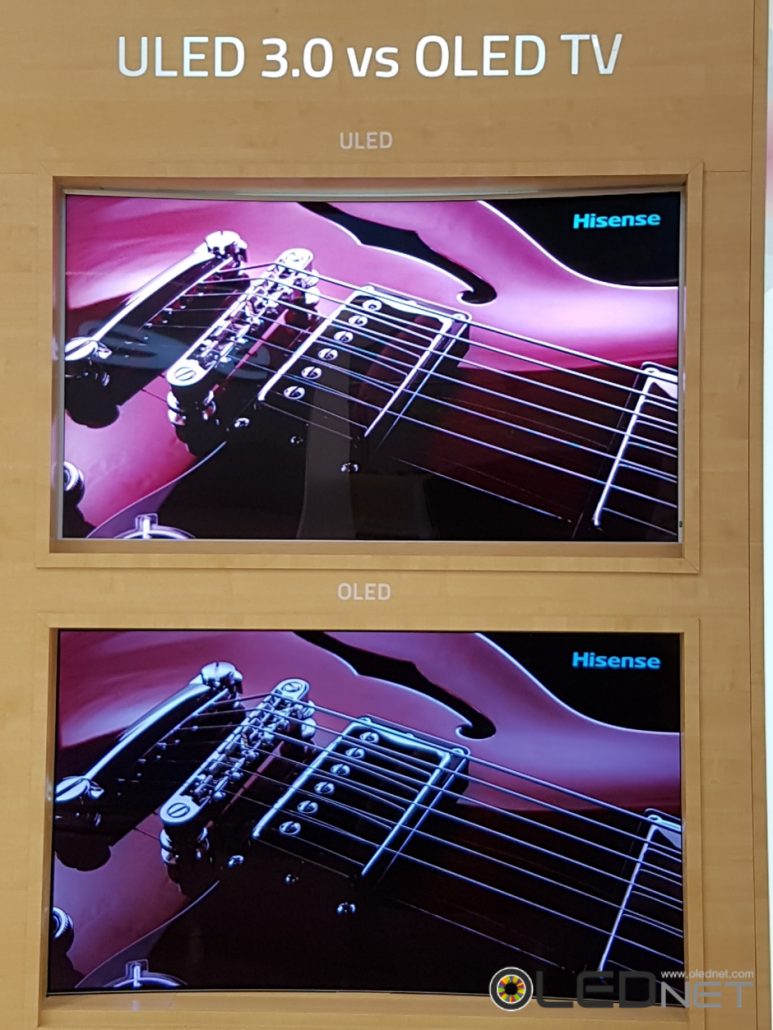
IFA2016에서 OLED TV를 전시한 업체는 LG전자를 포함해서 11업체이다. OLED TV 전시 규모 순서대로 명기하면 Vestel, Skyworth, Loewe, Philips, Grundig, Seiki, Metz, Changhong, Panasonic, Condor이다,
IFA2015에서는 6업체였으나 이번에는 5업체가 늘어났다. 거의 배가 증가 했다. 이번에 빠진 업체는 Haier 1개 업체이며 새로 합류한 업체들로서는 Loewe, Philips, Seiki, Metz, Condor이다.
이중에서 눈에 띄는 업체는 Loewe이다.

그리고 Loewe OLED TV 홍보 패널에는 다음과 같이 쓰여져 있다. “OLED display thinner than a smartphone”와 “The most beautiful OLED TV in the world”.
Philips에서는 TV 전시 공간 중 벽면을 제외한 곳은 OLED TV 만을 위한 장소로 배려했다. 벽면에는 LCD TV를 전시하였으나 OLED TV는 가운데 공간에서 참가자들이 입체적으로 볼 수 있도록 배치 하였다.

Philips가 LCD TV에서 OLED TV로 바뀔 것임을 확연히 드러낸 전시이다.
LG전자 다음으로 가장 역동적인 전시는 단연 Skyworth이다. IFA2015부터 OLED TV의 고속 응답속도를 알리는 car racing 게임 영상이다. 이전 전시와 달라진 점은 OLED 패널이 모두 HDR이 적용된 제품이다. 작년에 비해 매우 밝아졌다.

OLED TV를 판매하지 않지만 같이 전시한 업체로서는 Hisense가 있다. Hisense도 포함 시키면 12업체가 된다. Hisense는 자사가 판매중인 ULED TV의 우수성을 홍보하기 위해 OLED TV를 비교 전시하였다. 이 전시에 사용된 패널은 작년 OLED 제품이다. 실제로 보면 ULED TV 보다 어둡게 보였다. 하지만 바로 옆 부스인 Skyworth에서는 초고화질의 OLED TV가 전시되어 있다. 부스 장소를 잘 못 잡았다.

2014년 CES2014에서 OLED TV는 아직 미흡한 기술이기 때문에 3년 정도의 개발 기간이 더 필요할 것이라는 언급이 있은 후 2년 반 뒤, IFA2016에서 삼성전자가 OLED TV 사업은 하지 않을 것이라고 강하게 피력했다.
최근 삼성전자는 한국 언론과의 인터뷰에서 OLED TV는 아직 화질에 문제가 많아 삼성전자는 수년 이내에 QLED TV로서 TV 사업을 지속할 것이라고 밝힌 바 있다.
IFA2016에서 TV의 과거와 현재, 미래가 어떻게 될 것인지 삼성전자의 속내를 공개했다.

삼성전자 부스에 공개된 자료에 의하면 과거 LCD TV는 현재 LED TV로서 맥을 있고 있으며, 미래에는 inorganic 재료가 사용되는 quantum dot TV로 진화할 것이라고 밝혔다. 더불어 TV 시장에서 사라진 PDP TV와 마찬가지로 OLED TV는 curved FHD TV 수준에서 사라질 것이라고 표시했다.
이 자료로 볼 때 삼성전자는 타 LCD TV 세트 업체는 신경 써지 않고 오로지 LG전자의 OLED TV에만 모든 초점을 맞추고 있는 것으로 분석된다.
실제로 TV 시장 점유율 1위를 지키고 있는 삼성전자 입장에서는 premium TV 시장에서 세력을 확장하고 있는 LG전자의 OLED TV는 눈에 가시일 수 밖에 없다. 하지만 55인치와 65인치 UHD OLED TV가 잘 팔리고 있는 현 시점에서 볼 때 삼성전자의 전시 내용은 너무 나간 감이 없지 않다.
경쟁 업체에 대한 네거티브 공세는 마케팅 차원에서 허용 될 수 있지만 이번 전시에서는 도가 지나쳤다. 급기야 삼성전자는 아직 존재 하지도 않는 inorganic TV (Quantum dot TV)와 OLED의 내구성도 충실하게 비교 전시까지 하였다.
OLED TV는 시간이 지나면 색이 심각하게 변하지만 inorganic TV는 색 변화가 거의 없다는 내용이다.

미국의 consumer report 사이트에는 하기와 같은 내용이 아직도 공개되어 있다. 2015년 “best TV 5”에는 LG전자의 OLED TV가 3종이나 있으며, 1위는 65인치 UHD OLED TV이다.
OLED TV의 종말이 삼성전자가 생각하는 만큼 빨리 오지는 않을 것 같다. OLED TV는 지금부터 시작이다.

LG Electronics has displayed OLED TV on about half of the entire IFA2016 exhibition’s space, overwhelming the whole area.
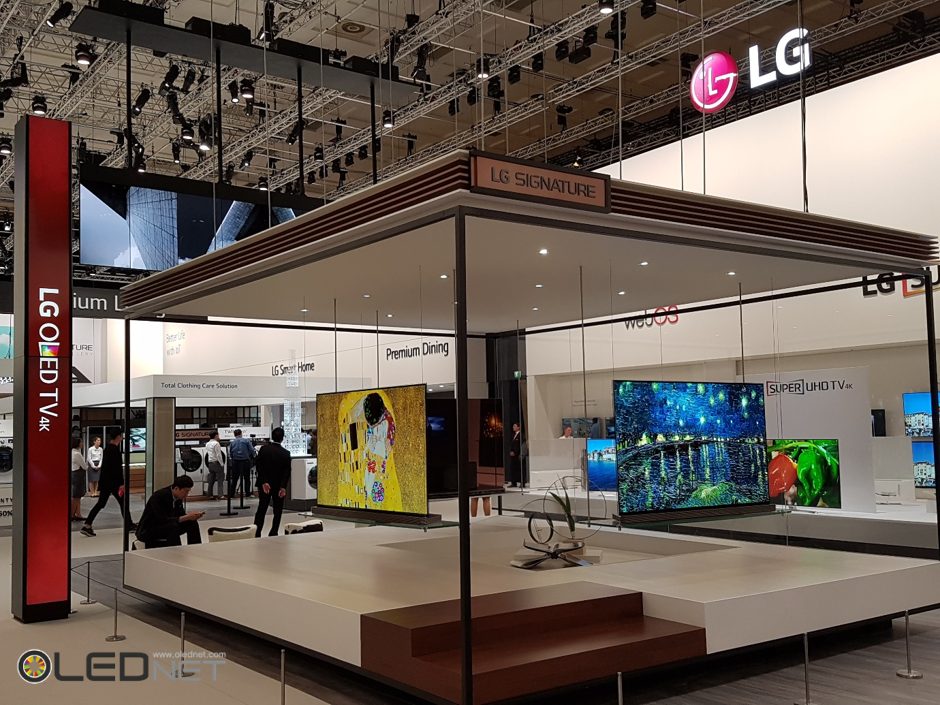
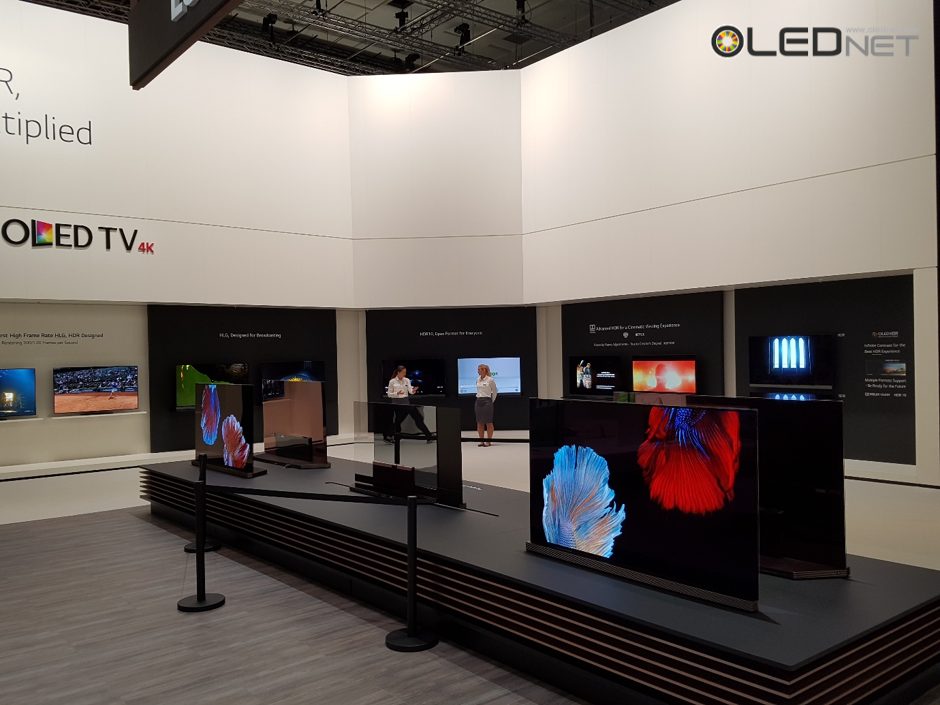
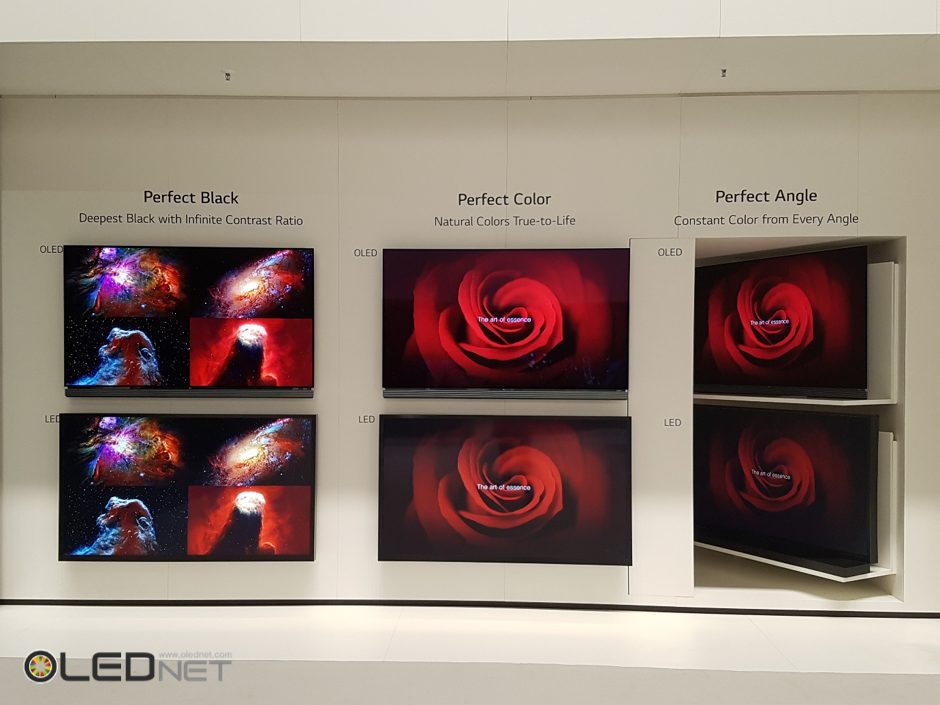
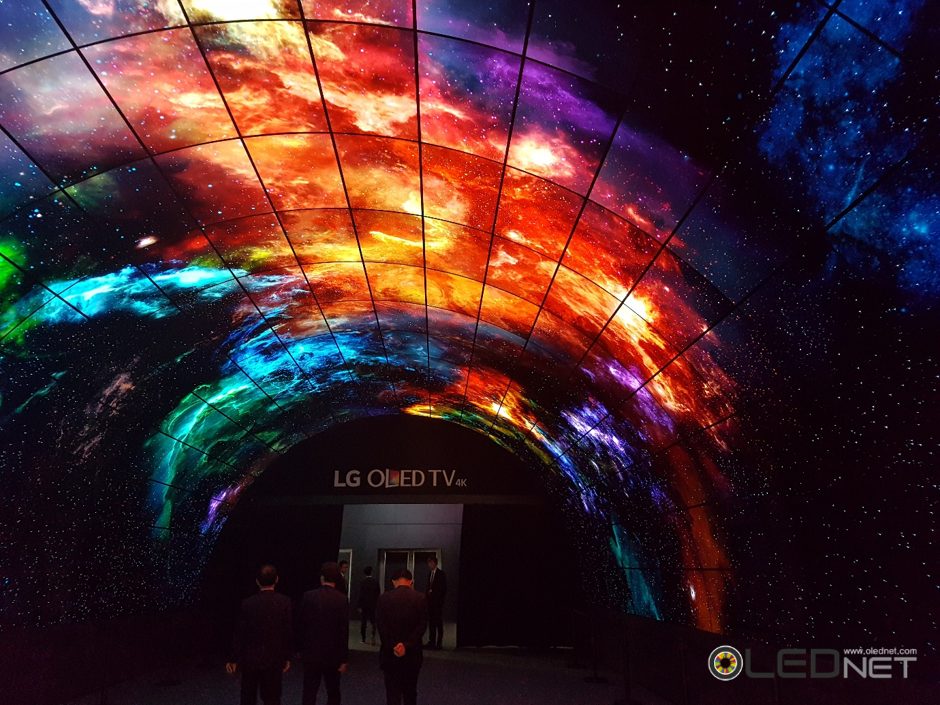
There is no need for words. You just have to enjoy the exhibition with your eyes.
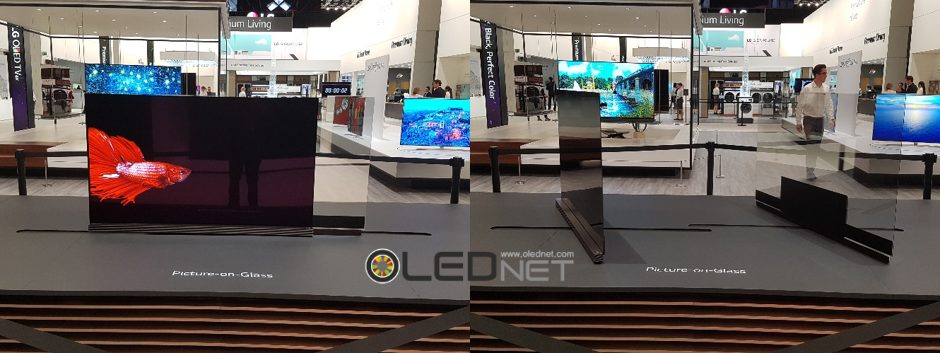
Apart from the image quality, LG promoted its slim product design by the expression “Picture on glass.”
There is no need for words. Exhibition is enough to show why OLED TV is better than LCD TV.
In the previous CES2016, LG Electronics booth was as dark as a movie theater. Presumably, it wanted to show the strength of OLED TV, “black”, well but it could rather be seen as a product that functions properly only in the dark.
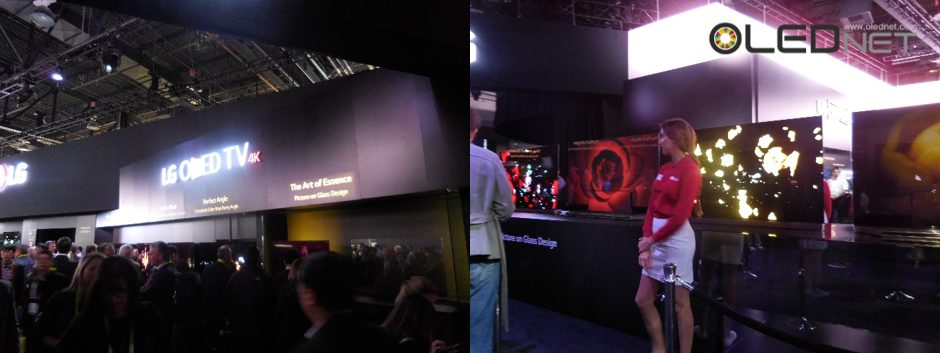
CES2016 LG Electronics Booth: The light was as dark as a movie theater
However, the difference becomes definite when we compare the ceiling light of CES2016 and the light of IFA2016. It became brighter indeed. LG Electronics has changed.
It became confident enough to highlight merits of OLED TV even in a bright area. OLED panel structure of TV produced by LG Display has changed from bicolor structure laminated with three layers of B (blue) and YG (yellow-green) to a three-layers structure that uses B, R, and G to realize three colors. The efficiency and brightness of the colors have become overwhelmingly outstanding.
LG is not the son of darkness anymore. Through the exhibition, it expressed its confidence to have secured the quality to contend with LCD TV.
Of course, it also indicated to continue LCD TV business. It displayed LCD TV, which applied QD technology, in one side so that it’s not compared with numerous OLED TVs. The exhibition of LCD TV, positioned in the corner after losing power, shows that the time is getting closer for competitors to wake up from the illusion that LCD TV will last forever.
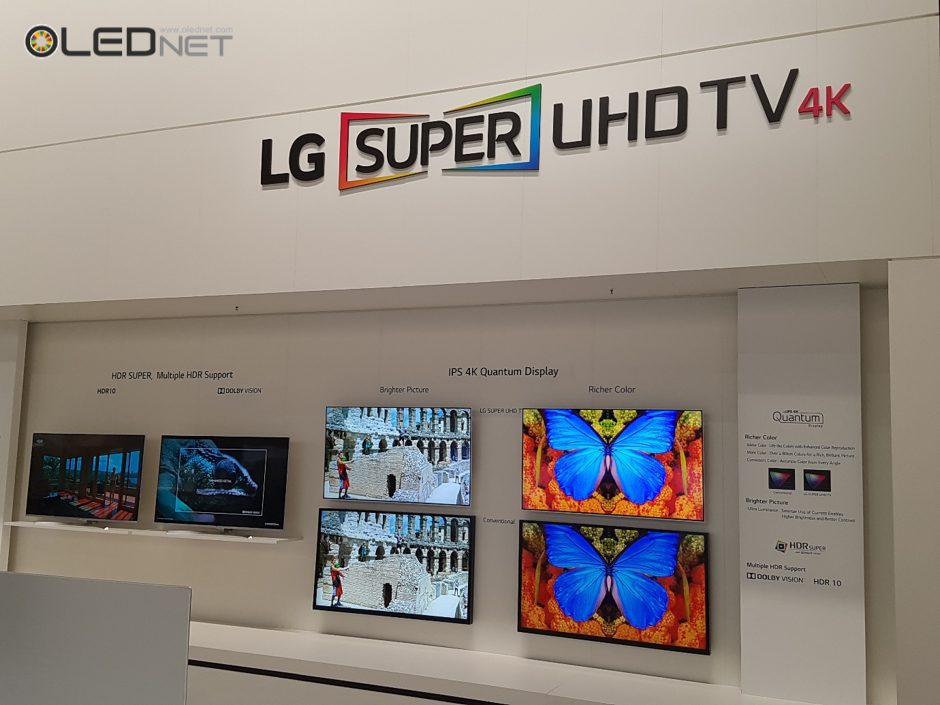
OLED TV is rising to be sensational in IFA2016, the largest consumer electronics show in Europe. In the development of the initial OLED TV market, LG Electronics is in the lead followed by Chinese companies. LG Electronics and Samsung Electronics, the two major companies in TV market, simultaneously launched OLED TV in 2013 and led OLED TV market until IFA2014. However, Samsung lost confidence to produce quality OLED TV and completely withdrew from CES in 2015. Since then, it has been focusing only on penetrating LCD TV market grafted on to QD technology.
Recently, Samsung Electronics stated that its OLED TV technology is still unsatisfactory due to the burning problem and thus, it is going to launch QLED TV, which uses QD technology, as the next product after LCD TV as soon as possible. Hence, there were many concerns over contraction of OLED TV market.
However, the on-going exhibition in IFA2016 is dispelling such negative concerns over Samsung OLED TV by the title, to be specific, “LCD TV, not anymore!”
Philips, the leader of consumer electronics in Europe, penetrated IFA2016 exhibition center with its newly developed OLED TV.

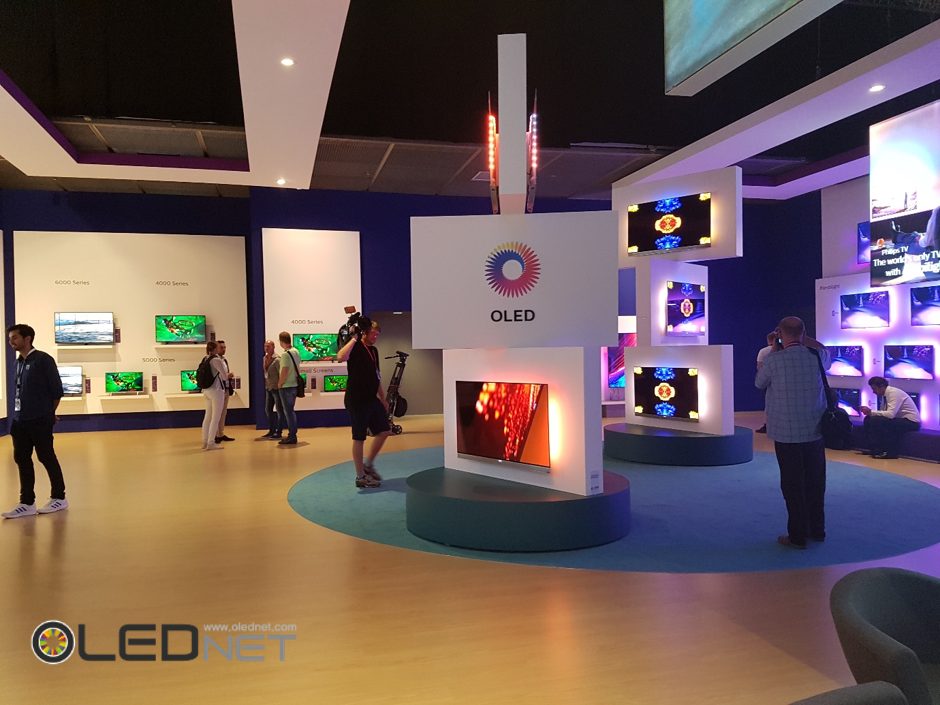
Philips planned the exhibition concept very delicately to highlight its OLED TV. First of all, it arranged lots of LCD TVs in three different sides to show that its main product is still LCD TV. It also placed OLED TV vertically in the middle of a space large enough to exhibit dozens of TV and made it to rotate to be displayed and seen well by visitors from any angle. Put differently, it designed the room for people to observe OLED TV in three dimensions. Through space arrangement rather than display of words, Philips declared its intention to change portfolio to OLED TV.
Moreover, the exhibition is designed so that visitors can easily compare superior OLED TV with LCD TV.
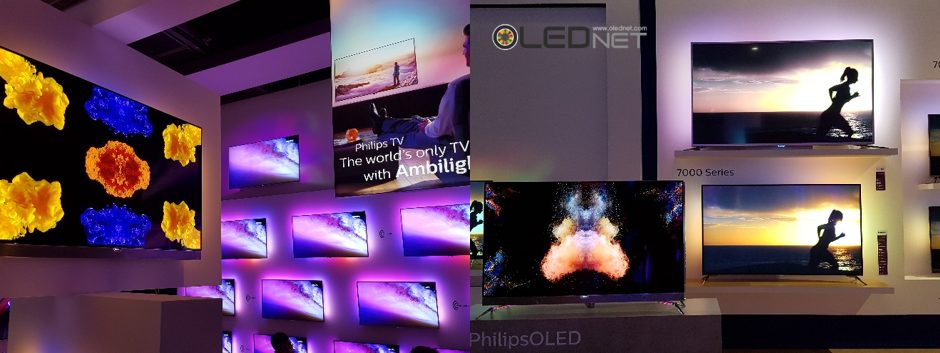
At the back of OLED TV, which displays vivid colors and clear contrast range, there is LCD TV where colors run as a result of ghost effect which blur and demolish the boundary of objects in the image. Such problem does not surface when one only sees LCD TV screen. However, it becomes clear when watched together with OLED TV.
Philips exhibited OLED TV in the middle of LCD TV to maximize the superiority of OLED TV.
Vestel, the leading power of TV in the Middle East, has also used the same strategy. It displayed LCD TV on the wall and arranged 12 OLED TVs in the middle, facing one another. By doing so, visitors can watch LCD TV through the back of OLED TV, too.
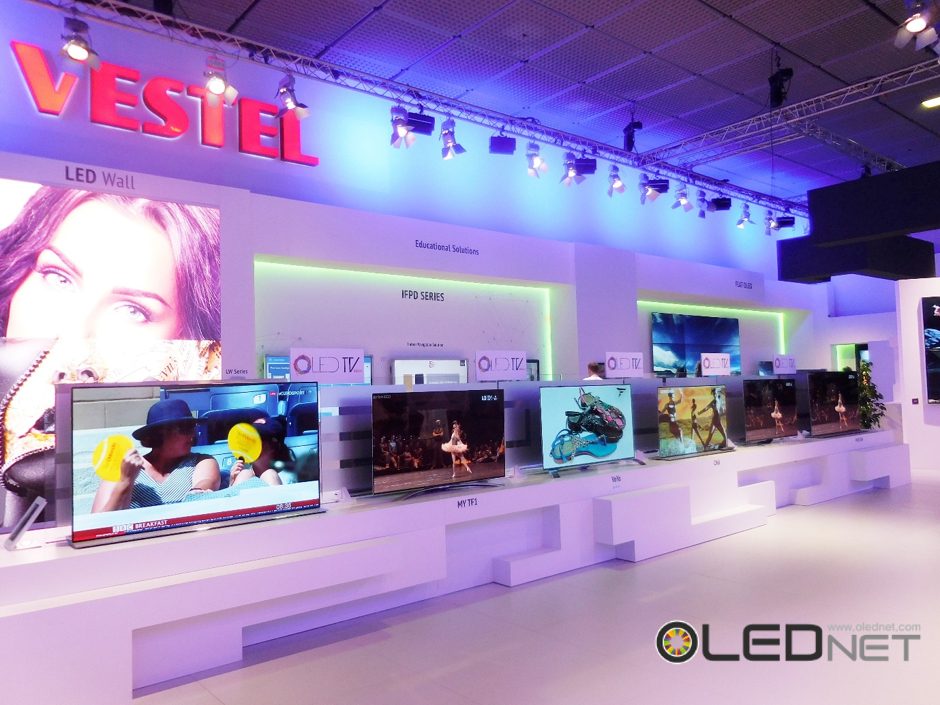
Futuremore, Vestel displayed the largest OLED TV in the world, made of 9 OLED TVs, at the end of exhibition, and showed that “this is OLED TV!
Although Samsung Electronics will continuously bring up negative concerns over OLED TV, more and more worldwide TV companies are still entering OLED TV market. Now the time is getting nearer for LCD TV to disappear and OLED TV to dominate the premium TV market.
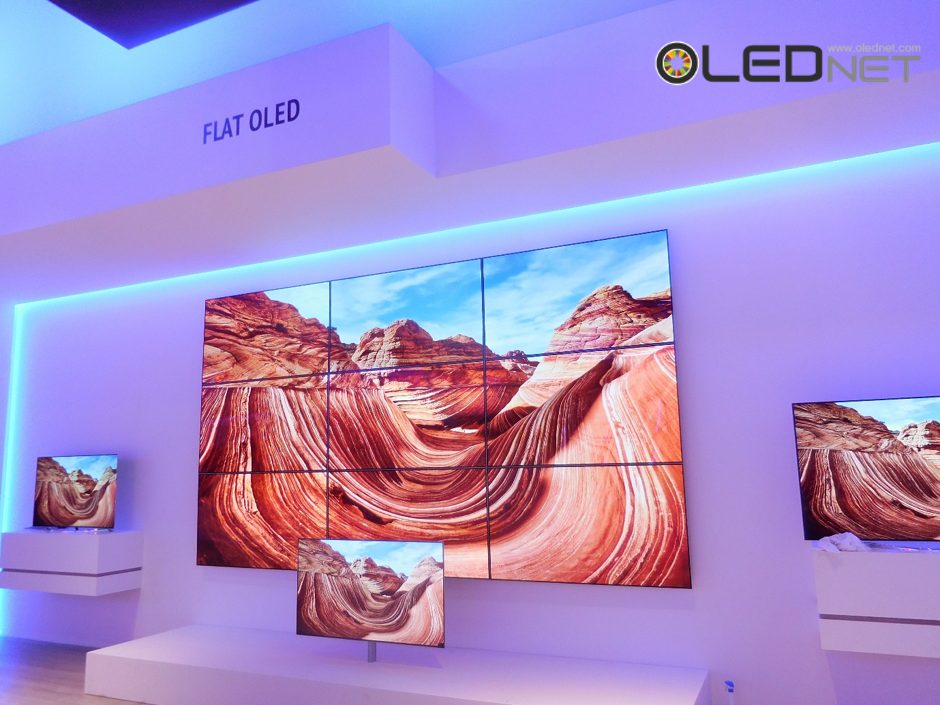
LG전자가 IFA2016 전시 공간의 약50%에 OLED TV를 깔아 놓았다. 전시장을 OLED TV로 도배하였다.



말이 필요 없는 전시이다. 그냥 눈으로 즐기기만 하면 된다.

화질 뿐만 아니라 디자인 측면에서 유리 한 장 두께임을 “Picture on glass”라는 표현으로 퍼포먼스하였다.
OLED TV가 LCD TV에 비해 무엇이 좋은지는 더 이상 말이 필요 없다. 그냥 보여주기만 하면 된다.
지난 CES2016에서 LG전자 부스는 영화관처럼 어두웠다. OLED TV의 장점인 “black”을 잘 표현하고자 했을 것으로 추정되나 오히려 OLED TV는 어두운 곳에서만 제대로 볼 수 있는 반쪽자리 제품으로 비춰질 수 있었다.

CES2016 LG전자 부스: 조명이 매우 어두워 흡사 영화관 같다
하지만 CES2016의 천정 조명과 IFA2016의 조명을 비교해 보면 확연히 차이가 난다. 밝은 세상으로 나왔다. LG전자가 달라졌다.
LG전자가 밝은 공간에서도 OLED TV의 장점을 부각 시킬 수 있는 자신감을 얻은 것이다. LG디스플레이가 생산하는 TV용 OLED 패널 구조가 B(blue)과 YG(yellow-green)을 3층 적층한 2색 구조에서 B와 R, G을 모두 사용하여 3색을 구현하는 3층 구조로 바꾼 것이다. 색 효율과 밝기가 압도적으로 우수해진 것이다.
이젠 더 이상 어둠의 자식이 아니다. 당당하게 LCD TV와 경쟁할 수 있는 품질이 확보된 것임을 이번 전시를 통해 LG전자는 자신감을 피력하였다.
물론 LCD TV 사업은 계속하고 있음도 나타내었다. 수 많은 OLED TV와 비교되지 않게 한 면에 QD 기술을 적용한 LCD TV를 전시하였다. 주역 자리를 내 주고 한 켠에 배치된 조촐한 LCD TV 전시는 아직 LCD TV가 영원할 것이라고 믿고 있는 경쟁 업체들에게 겸손해야 할 시대가 다가오고 있음을 가르쳐주고 있다.

유럽의 최대 가전 제품 전시회인 IFA2016에서 OLED TV가 돌풍을 일으킬 기세다. LG전자가 주도하고 있는 OLED TV 시장에 일부 중국 세트 업체들이 가세하여 초기 시장을 형성하고 있다. 2013년 LG전자와 삼성전자가 동시에 OLED TV를 출시하였고 IFA2014까지는 TV 시장의 최대 축인 두 회사가 OLED TV 시장 분위기를 형성하였으나, OLED TV 품질에서 자신을 잃은 삼성전자는 결국 2015년 CES에서부터 완전히 철수하고 QD 기술이 접목된 LCD TV 시장에만 집중하고 있다.
최근 삼성전자가 OLED TV는 burning 현상 때문에 아직 기술이 미흡하여 LCD TV의 차기 제품으로서 QD 기술을 사용하는 QLED TV가 될 것임을 언급하고 빠른 시일내에 이 제품을 출시할 것으로 공언함에 따라 OLED TV 시장의 위축을 우려하는 시각이 매우 많았다.
하지만 IFA2016에서는 삼성전자의 OLED TV에 대한 네거티브 공세를 불식시키는 전시가 개최되고있다. 정확히 표현하자면 “LCD TV, 이젠 아니야!”이다.
유럽의 최대 가전 제품 맹주인 Philips가 OLED TV로 옷을 바꿔 입고 IFA2016 전시장을 화려하게 꾸몄다.


Philips는 OLED TV를 부각시키기 위해 매우 세심한 전시 컨셉을 구상하였다. 우선3면에 많은 수의 LCD TV를 배치하여 현재 주력 제품은 아직 LCD TV임을 나타내었다. 하지만 TV를 수십대 이상 전시할 수 있는 넓은 가운데 공간에 OLED TV를 수직으로 배치하고 회전시켜 어느 각도에서도 Philips의 OLED TV가 잘 보여지도록, 또한 잘 볼 수 있도록 고려하였다. OLED TV에 대해서는 입체적으로 제품을 관찰할 수 있는 공간을 배려한 것이다. Philips는 말이 아닌 공간 배치로서 이제부터는 OLED TV로 포트폴리오를 바꿀 것을 선언한 것이다.
뿐만 아니라 이번 전시에서는 전시자가 OLED TV의 우수성을 LCD TV와 같이 비교하여 볼 수 있도록 고려하였다.

선명한 색상과 명확한 명암비를 나타내는 OLED TV의 뒷편에 자리 잡은 LCD TV는 ghost 효과로서 색이 번져 보이며 영상 속 사물의 경계면이 또렷하지 않아 사물의 윤곽이 허물어져 있음을 알 수 있다. LCD TV만으로 화면을 보면 이러한 LCD TV의 문제점이 나타나지 않으나, OLED TV와 함께 봄으로서 LCD TV의 단점이 명확히 드러나고 있다.
Philips는 OLED TV를 LCD TV 속에 전시하여 OLED TV의 우수성을 극대화 시켰다.
중동의 TV 맹주인 Vestel에서도 OLED TV를 LCD TV 사이에 전시하였다. LCD TV를 벽면에 전시하고 55인치와 65인치 OLED TV 12장을 양면으로 가운데 공간에 배치 시켰다. 역시 OLED TV 뒤로 LCD TV를 같이 볼 수 있게 하였다.

더욱이 TV 전시가 끝나는 마지막 공간에는 OLED TV 9장을 타일링한 세계 최대 크기 OLED TV를 전시하여 “이게 바로 OLED TV야!”로 외치고 있다.

OLED TV에 대한 삼성전자의 네거티브 공세는 앞으로도 계속되겠지만, 전세계 TV업체들은 하나 둘 점점 OLED TV 진영으로 모이고 있다. 프리미엄 TV 시장에서 LCD TV는 사라지고 OLED TV가 지배할 시간이 점점 다가오고 있다.
In Berlin where IFA2016 is held, Samsung Electronics hosted the showcase of Gear3, which is a follow-up model of Galaxy Gear on Aug. 31.
Smart watch is equipped with differentiated characteristics including a sporty sense, communication and simple healthcare function of checking the heart rate and the amount of exercise. Since Galaxy Gear2 and Apple Watch also had no difference with those characteristics, the prospect of smart watch market did not seem bright.
However, Galaxy Gear3 showed how smart watch could be used in human life in an appearance different from previous ones. It has evolved into a product that could absorb the existing watch market instead of seeking differentiation from the existing watches.
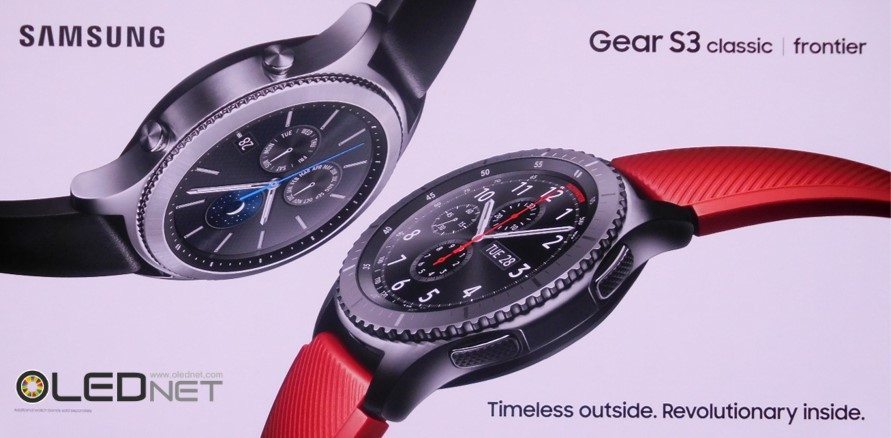
First of all, the appearance has been changed. The case is changed to steel, and it uses Gorilla Glass SR+ in order to prevent impact. Gear is carved in bezel, which was plain and inconvenient in manipulating the display.
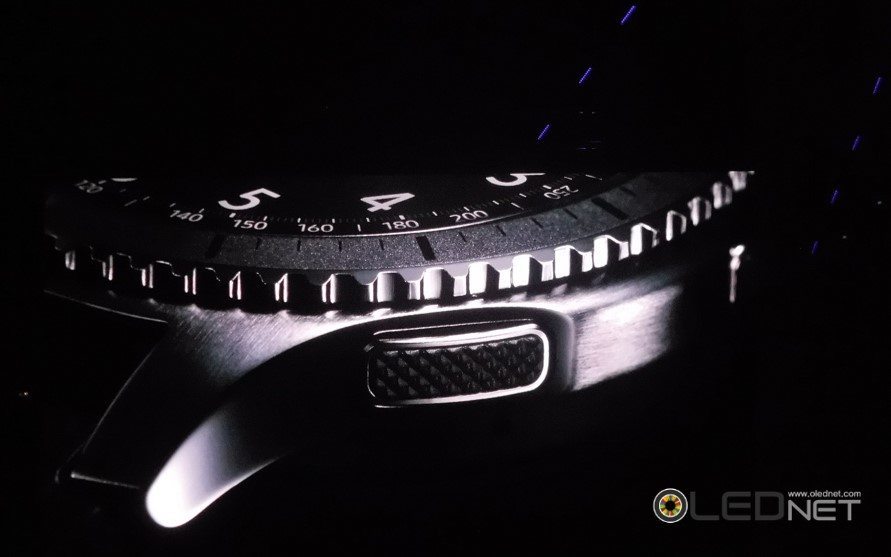
It absorbed the appearance of the best sports watch models.
With its expanded width of 1.5 inch, the exterior has been expressly changed compared to the previous model, Galaxy Gear2.
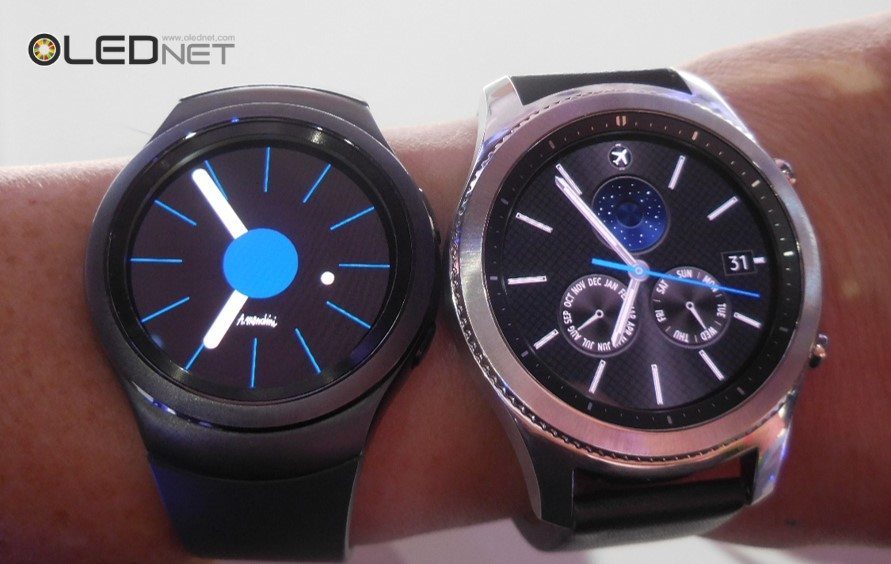
In addition to the exterior change, Galaxy Gear3 has tremendously evolved in its internal software. Firstly, Always on Display function, which is applied to Galaxy S7, is applied. Always on Display is a function that enables you to always check time, and the function is realized by installation of the best flexible OLED only available by Samsung Display. In order to materialize it, it is required to have a display with very low power consumption, the operation technology and a long-life battery.
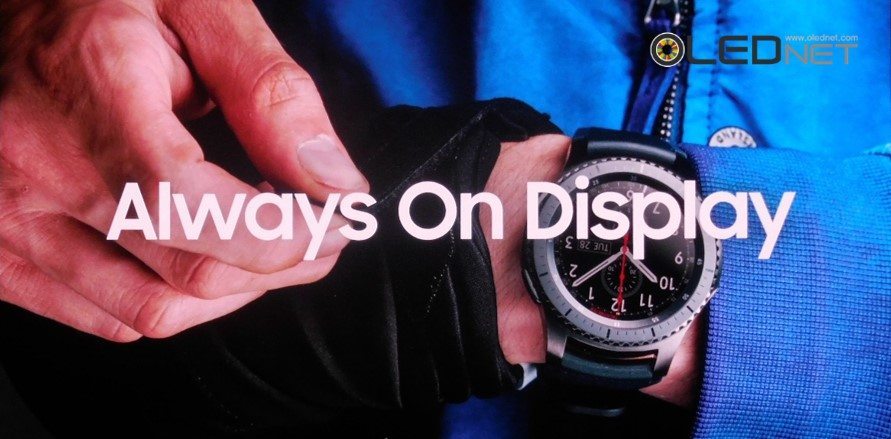
With a built-in GPS function, it is capable of navigation. You can use the smart watch separately since it is designed to be equipped with Alti/Barometer, Speedometer, LTE and built-in Speaker.
In addition to these, it secured safety by installing Knox, the software security system of Samsung. It also contains Connected Car System, which could be linked with an automobile.
In a comprehensive sense, Galaxy Gear3 to be launched soon is the first product that could be independently used without any smart phone. It has evolved to be a “Digital Convergence” product, which absorbed smart phone, rather than being an accessory product of smart phone.
In this event, Galaxy Note7 appeared in assisting the Galaxy Gear3. I have a very strong and good feeling that Galaxy Gear and Galaxy Note might pioneer a new market which divides up the existing smart phone market.
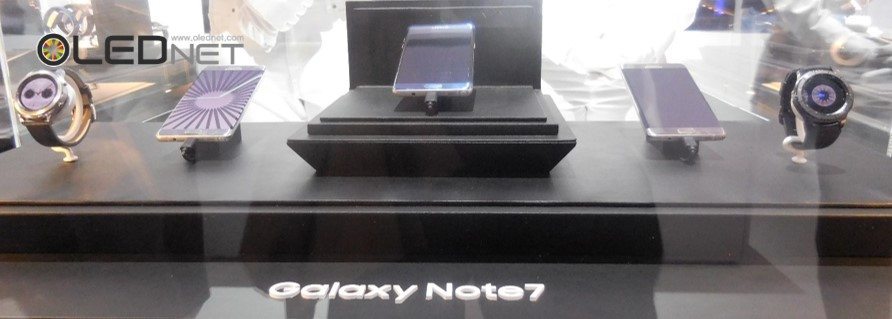
IFA2016이 개최되는 베를린에서 삼성전자는 Galaxy Gear 후속 모델인 Gear3 공개 행사를 8월31일 진행했다.
스마트 워치에는 기존 시계와의 차별화 포인터로서 스포티한 감각과 통신, 심박수와 운동량을 체크할 수 있는 간단한 healthcare 기능이 있었다. Galaxy Gear2와 Apple Watch 역시 이 수준을 벗어나지 못하여 스마트 워치 시장이 밝아 보이지 않았다.
하지만 Galaxy Gear3는 이전과 다른 모습으로 스마트 워치가 인간의 생활에서 어떻게 사용될 수 있는지를 보여주었고, 기존 시계와의 차별화를 모색하는 대신 기존 시계 시장을 흡수 할 수 있는 제품으로 진화하였다.

우선 외관 변화이다. 케이스가 스틸로 바뀌었고 충격 방지를 위해 Gorilla Glass SR+를 사용 하였으며, 화면을 조작에 불편했던 밋밋한 베젤에 기어가 각인되었다.

최고급 스포츠 모델 시계 외형을 모두 흡수하였다.
시계 사이즈는 1.5인치로 확대되어 이전 모델인 Galaxy Gear2에 비하면 확연히 외관이 변화하였다.

Galaxy Gear3는 외관 변모와 더불어 내부 소프트 웨어는 엄청나게 진화하였다. 우선 Galaxy S7에 적용되고 있는 Always On Display 기능이다. Always On Display는 항상 시간을 볼 수 있는 기능으로서 삼성디스플레이만이 만들 수 있는 최상의 flexible OLED가 탑재된 것이다. 소비 전력이 매우 낮은 디스플레이와 구동 기술, 장수명 베터리가 있어야만 가능하다.

GPS 기능을 내장하여 네비게이션이 가능하게 하였으며, 고도 측정계(Alti/Barometer)와 속도계(Speedometer), LTE, 내장 스피커가 있어 스마트 워치 단독으로 사용이 가능하게 설계되었다.
여기에 삼성의 소프트웨어 보안 시스템인 Knox를 탑재하여 안전성을 확보하였고 자동차와 연동되는 Connected Car 시스템도 들어 있다.
종합해서 표현하자면 이번에 출시되는 Galaxy Gear3는 스마트 폰 없이도 단독으로 사용이 가능한 최초의 제품이라는 점이다. 스마트 폰의 부속 제품이라는 변방에서 오히려 스마트 폰을 흡수한 “Digital convergence” 제품으로 진화한 것이다.
이번 행사에 보조 출현한 제품은 Galaxy Note7이다. 어쩌면 Galaxy Gear와 Galaxy Note가 기존 스마트 폰 시장을 나눠 갖는 새로운 시장을 개척 할 수 있을 것 같은 좋은 예감이 매우 강하게 스치고 지나 간다.

Sunic System’s solution for 11K (2,250 ppi) AMOLED production revealed in IMID 2016 held in Jeju ICC, South Korea is receiving much attention.
In the 2nd OLED Korea Conference held earlier this year, Samsung Display’s principal engineer Insun Hwang told the attendees that high resolution is the key in VR, and approximately 2,000 ppi is required for suitable realism. He explained that the resolution of VR falls as the distance between the user and display is short and this is an issue that needs to be solved.
The highest resolution of the current AMOLED panel for mobile device is 806 ppi, revealed by Samsung Display in SID 2016. The technology being applied to AMOLED panel mass production is evaporating OLED emitting materials through heat from linear source, and depositing the OLED emitting materials onto substrate through fine metal mask (FMM).
However, during the deposition stage of the OLED emitting materials, due to the distance between the evaporation source and FMM, thickness of FMM, and distance between FMM and substrate, incidence angle (θ) is produced. Due to the incidence angle, shadow distance (SD) is generated. Because of the SD issues, mask thickness and step height that minimize SD have to be decided, and these are the main reasons for the FMM production difficulty.
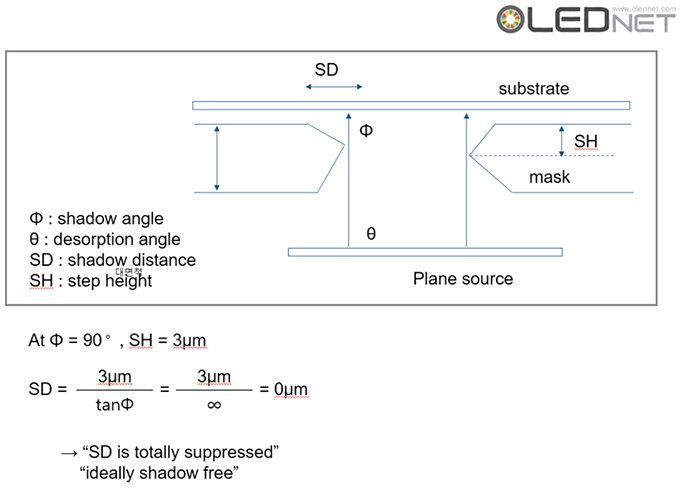
Shadow Distance Principle, Sunic System IMID 2016
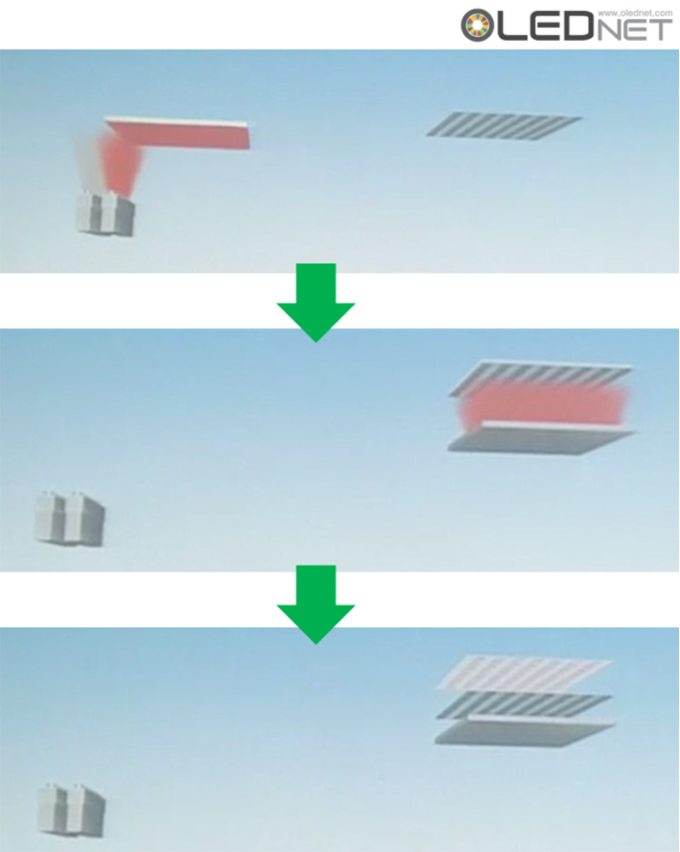
Plane Source Process, Sunic System IMID 2016
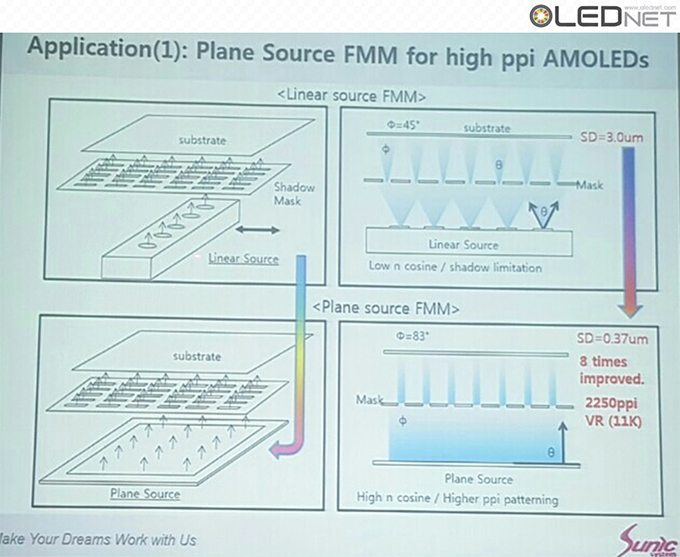
Plane Source Process, Sunic System IMID 2016

Plane Source Application, Sunic System IMID 2016
To solve these issues, Sunic System suggested plane source, instead of linear source, and reported that this will become a key technology for high resolution AMOLED panel. Plane source technology deposits OLED emitting materials on metal plate and vertically evaporates the materials through heat after reversing that metal plate. If OLED emitting material shadow angle (Ф) becomes 90, the SD (shadow distance, step height / tanФ) theoretically becomes 0. This means FMM can be designed to be thin and high resolution, allowing for high resolution AMOLED panel production.
Sunic System’s Dr. Chang Hun Hwang explained that plane source can reduce SD figure up to approximately 8 times compared to existing technology, and 11K (2250 ppi) AMOLED panel for VR use becomes possible. Through this 8K (200 ppi) RGB OLED TV panel production becomes possible in large area SMS evaporation technology.
Particularly, if plane source using SMS evaporation technology can be applied to large area, it is also expected to have significant impact on large area OLED panel production technology.
So far, inkjet printing technology applied solution process method has been mainly developed for RGB large area OLED panel production, but soluble OLED emitting materials’ performance fall short of existing evaporation OLED emitting materials. However, if plane source technology is successfully developed and applied, evaporation OLED emitting materials can be used. Accordingly, this could become large size OLED panel production technology that replaces solution process OLED.
Sunic System supplied Gen6 evaporator to LG Display, a first for a Korean manufacturing equipment company, and active mass production is expected to be possible from 2018.
제주도 ICC 컨벤션 센터에서 열린 IMID2016에서 선익시스템의 11K(2250 ppi) AMOLED 제조를 위한 솔루션이 화제가 되고 있다.
올해 초 개최된 제 2회 OLED Korea Conference에서 삼성디스플레이의 황인선 수석연구원은 “VR에서는 고해상도가 핵심이며 약 2000ppi 정도 되어야 VR 디바이스에서 현장감을 잘 느낄 수 있을 것’이라고 발표하며, VR에서는 디스플레이를 접하는 거리가 가깝기 때문에 해상도가 떨어진다는 점을 해결해야할 과제로 꼽았다.
하지만 현재 mobile 기기용 AMOLED panel의 최고 해상도는 삼성디스플레이가 SID2016에서 공개한 806 ppi가 최고 해상도이다.
현재 AMOLED panel 양산에 적용중인 기술은 선형소스에서 OLED 발광재료를 열로 증발시키고 증발된 OLED 발광재료가 FMM(fine metal mask)를 통과하여 기판에 증착되는 원리이다.
하지만 OLED 발광재료의 증착과정에서 증착 소스와 FMM 사이의 거리와 FMM의 두께, FMM과 기판 사이의 거리로 인하여 OLED 발광재료가 FMM을 통과할 시 입사각(θ)이 생기게 되며, 입사각으로 인하여 SD(shadow distance)가 발생하게 된다. SD이슈로 인해 FMM을 설계시 SD를 최소화 하는 mask의 두께와 step hight를 결정해야 하며 이는 고해상도 FMM 제조를 어렵게 하는 주요 원인이다.

Shadow distance 원리, 선익시스템 IMID2016

Plane Source Process, 선익시스템 IMID2016

Plane source의 적용 application, 선익시스템 IMID2016

Plane source의 적용 application, 선익시스템 IMID2016
선익시스템에서는 이러한 문제점을 해결하기 위해 linear source가 아닌 plane source를 제안하였으며, 이는 고해상도 AMOLED panel의 핵심 기술이 될 것으로 발표했다. Plane source기술은 metal plate에 OLED 발광재료를 증착하고 뒤집은 후 metal plate에 열을 가함으로써 OLED 발광재료를 수직으로 증착시키는 기술이다. OLED 발광재료 shadow angle(Ф)이 90도가 되면 이론적으로 SD(Shadow distance, step hight / tanФ) 값이 0이 되기 때문에 FMM의 두께를 얇고 고해상도로 설계할 수 있어 고해상도 AMOLED panel 제조가 가능해 진다.
선익시스템의 황창훈 박사는 “plane source를 이용하면 SD값을 기존대비 약 8배 까지 줄일 수 있어 VR용 11K(2250 ppi) AMOLED panel 구현이 가능해지며, 대면적 SMS 증착기술에서도 8K(200 ppi) RGB OLED TV용 panel 제조가 가능해진다.”라고 설명 하였다.
특히 plane source를 적용한 SMS 증착기술이 대면적에 적용이 가능해지면, 대면적 OLED panel 제조 기술에도 큰 파장을 일으킬 수 있을 것으로 예상된다.
현재까지는 RGB 방식으로 대면적 OLED panel 제조를 위한 기술로는 inkjet printing을 적용한 solution process이 중점적으로 개발되고 있지만, soluble OLED 발광재료의 성능이 기존 증착용 OLED 발광재료보다 낮은 이슈가 있었다. 하지만 plane source 기술이 성공적으로 개발, 적용가능해 진다면, 증착용 OLED 발광재료를 그대로 사용할 수 있기 때문에 solution process OLED를 대체하는 대면적 OLED Panel제조기술이 될 수 있을 것으로 기대된다.
한편 선익시스템은 LG Display에 국내 장비업체 최초로 Gen6 증착장비를 납품하였으며, 2018년부터 본격적인 양산이 가능할 것으로 예상된다.
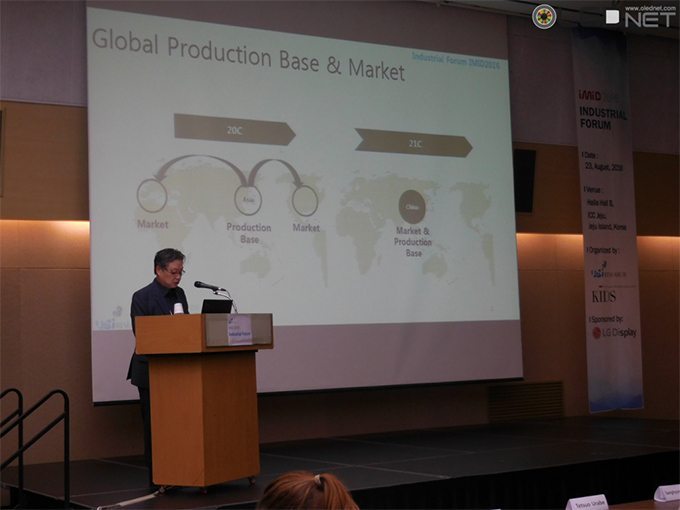
The president of UBI Research Choong Hoon Yi
Hyunjoo Kang / jjoo@olednet.com
Phone when Folded, Tablet when Opened… President of UBI Research ‘Flexible OLED Opens New Digital Convergence’
Combining smartphone and tablet PC, flexible OLED is expected to be a key player in opening the new digital convergence era.
During the Industrial Forum IMID 2016, held on 23 August in Jeju ICC in South Korea, the president of UBI Research Choong Hoon Yi gave a keynote speech and suggested the changes to the industry that flexible OLED will bring.
Yi discussed diverse applications for flexible OLED and emphasized that digital convergence where tablet PC is absorbed into smartphone will occur. He explained that flexible OLED will open the foldable phone era where the screen can be completely folded, and innovative product which will become a 5 inch smartphone when folded and a tablet PC when opened will be developed.
Yi explained that using the flexible OLED’s characteristics of thinness, lightness, flexibility, and spatial efficiency, it will be widely used. He estimated that not only will flexible OLED be used in automotive screen, lighting, flexible signage, and foldable game device, it will be utilized in diverse areas from wearable products such as smart helmet to smart fashion.
Referencing UBI Research’s analysis, Yi forecast that in 2020, 60% of the total smartphone will be OLED smartphone, and in 2021, 70% of OLED smartphone will be equipped with flexible OLED.

유비산업리서치 이충훈 대표가 기조연설을 하고 있다.
강현주 / jjoo@olednet.com
플렉서블 OLED가 스마트폰과 태블릿 PC를 융합시킴으로써 새로운 ‘디지털 컨버전스’ 시대를 여는 주역이 될 것으로 점쳐진다.
8월 23일, 제주도 ICC 제주에서 개최된 ‘인더스트리얼 포럼’에서 유비산업리서치 이충훈 대표는 기조연설을 통해 플렉서블 OLED가 가져다 줄 산업의 변화를 제시했다.
이충훈 대표는 플렉서블 OLED의 다양한 응용분야들을 살펴보면서 태블릿 PC가 스마트폰에 흡수되는 디지털 컨버전스가 일어날 것이라고 강조했다.
그는 “플렉서블 OLED는 화면을 완전히 접을 수 있는 폴더블폰 시대를 열 것”이라며 “접으면 5인치대 스마트폰이 되고 펼치면 태블릿 PC가 되는 혁신적인 제품이 나타난다”고 설명했다.
플렉서블 OLED는 얇고 가벼우며 잘 깨지지 않는 특성과 유연하고 공간효율적인 장점을 앞세워 다양하게 활용될 것이라는 게 이충훈 대표의 설명이다.
그는 “플렉서블 OLED는 자동차 스크린 및 조명, 플렉서블 사이니지, 폴더블 게임 기기 뿐 아니라 스마트 헬멧 등 웨어러블 제품에서 스마트 패션에 이르기까지 광범위한 분야에 응용될 것”이라고 전망했다.
한편 이 대표는 유비산업리서치의 자료를 인용해 “2020년이면 전체 스마트폰의 60%를 OLED 스마트폰이 차지할 것이며, 2021년에는 OLED 스마트폰 중 70%가 플렉서블 OLED를 탑재할 것”이라고 내다봤다.
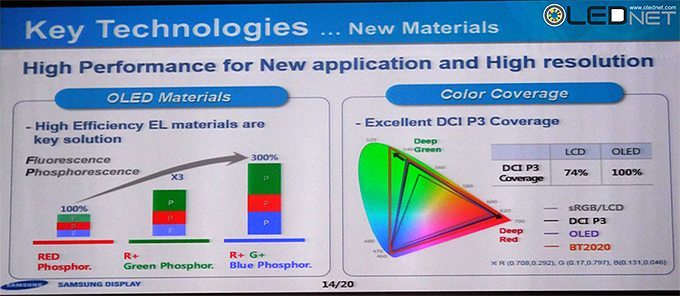
Source: Samsung Display Keynote, IMID 2016

Color Coordinates Development Direction for Each Color to Satisfy BT2020, Source: AMOLED Characteristics Analysis Report of Galaxy S Series
Samsung Display’s Dr. Sung-Chul Kim gave a keynote speech during IMID 2016 being held in Jeju ICC in South Korea. He emphasized that AMOLED is the suitable display for the current trend and discussed the issues to be solved for AMOLED.
Kim gave several talks this year on similar topics but this is the first time he mentioned BT2020 as AMOLED’s color space. Accordingly, concerns of OLED emitting materials companies are expected to increase.
Until now, Kim has been discussing phosphorescent blue materials as the key issue; only OLED phosphorescent materials are red and green, and development and application of phosphorescent blue materials are urgently needed, which will lead to 300% increase in efficiency. However, during this keynote speech, he emphasized BT2020 for the first time with the phosphorescent blue application.
BT2020 is color space with red, green, and blue wavelengths of 630nm, 532nm, and 467nm respectively. In CES 2016, it was selected by UHD Alliance as the color space applied to UHD TV.
According to AMOLED Characteristics Analysis Report of Galaxy S Series, published by UB Research in May 2016, Galaxy series’ color space needs to meet BT2020. In order to meet this, for u’, red needs to increase, green decrease, and blue to decrease. For v’, red needs to decrease, green to increase, and blue to increase in terms of color coordinate movement.
Resolution and color coordinates of mobile device panel tends to follow TV development direction. As UHD Alliance selected BT2020 as the standard, AMOLED panel for mobile that meets this requirement needs to be produced. Accordingly, OLED emitting materials companies’ development focus, which is currently on lifetime and efficiency, is expected to be required to change.

IMID 2016 Keynote Samsung Display 발표

BT 2020을 만족시키기 위한 각 color 별 색좌표 개발 방향, Source: Galaxy S Series의 AMOLED 특성 분석 보고서
제주도 ICC 컨벤션 센터에 열리고 있는 IMID 2016 행사의 keynote session에서 Samsung Display의 김성철 부사장은 디스플레이의 트렌드와 이에 적합한 디스플레이는 AMOLED라고 강조하며 AMOLED가 해결해야 할 이슈에 대해 발표하였다.
김성철 부사장은 올해 여러 번 비슷한 주제로 발표를 가졌지만 이번 발표에서는 AMOLED의 색좌표도 BT2020으로 가야할 것이라 언급하여 OLED 발광재료 업체들의 고심이 깊어질 것으로 예상된다.
지금까지 김성철 부사장의 발표에서는 OLED 발광재료는 red와 green만 인광이 적용 중이고 blue의 인광 개발과 적용이 시급하며 blue 인광이 적용될 경우 기존 대비 300%의 효율 향상을 가져올 수 있다며, 인광 blue 적용을 핵심 이슈로 발표했었다.
하지만 이번 IMID 2016 keynote에서는 인광 blue 적용과 함께 BT2020에 대해서 최초로 강조했다.
BT2020은 각 color 별 R, G, B의 파장이 630nm, 532nm, 467nm인 색공간으로 CES 2016에서 UHD Alliance에 의해 UHD TV에 적용되는 색공간으로 채택되었다.
유비산업리서치에서 2016년 5월 발간한 ‘Galaxy S Series의 AMOLED 특성 분석 보고서’에 따르면 Galaxy 시리즈의 색좌표는 BT2020을 만족해야 할 필요가 있으며 이를 위해 u’의 경우 red에서 증가, green에서 감소, blue에서 감소해야 하며 v’의 경우 red에서 감소, green에서 증가, blue에서 증가하는 방향으로 색좌표의 이동이 되어야한다고 분석했다.
Mobile 기기의 panel의 해상도와 색좌표는 TV의 개발 방향을 따라가는 경향이 있다. UHD Alliance에서 BT2020을 표준으로 채택한 만큼 이를 만족하는 mobile용 AMOLED panel이 만들어지기 위해서 수명과 효율에 중점을 두고 있는 OLED 발광재료업체들의 개발 초점이 바뀌어야 할 것으로 전망된다.
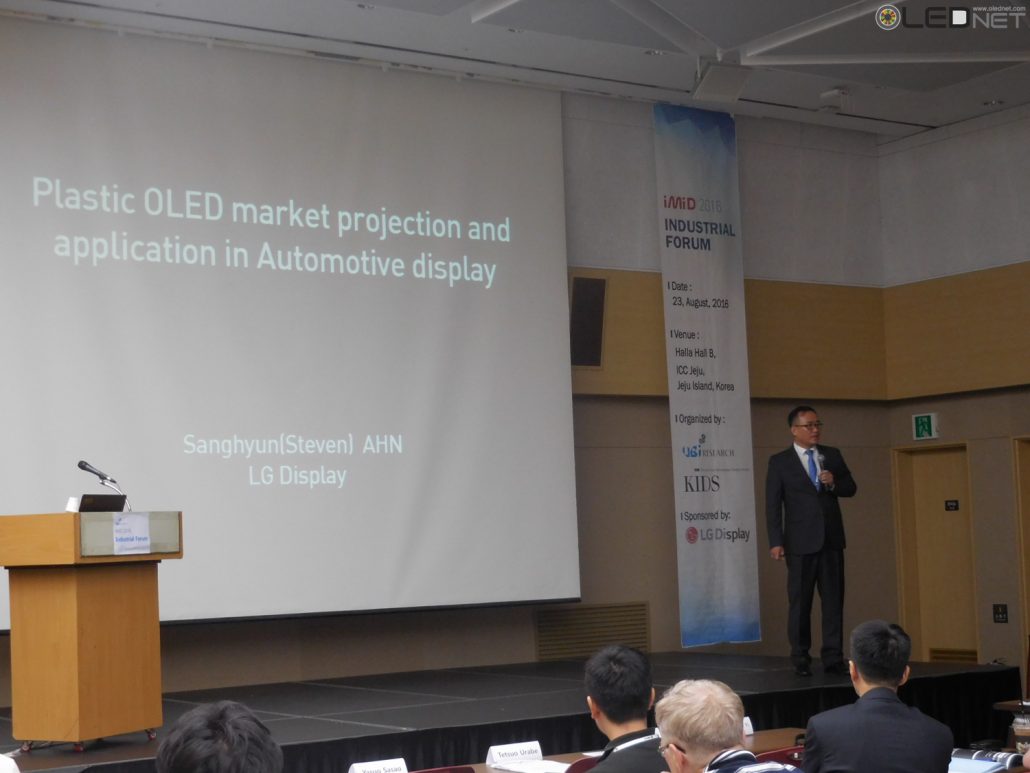
LG Display’s Automotive Sales and Marketing director Sanghyun Ahn
Hyunjoo Kang / jjoo@olednet.com
LG Display emphasized that the automotive industry can differentiate design through plastic OLED (POLED).
During the Industrial Forum IMID 2016 held on 23 August in Jeju ICC of South Korea, LG Display’s Automotive Sales and Marketing director Sanghyun Ahn gave a key note presentation titled ‘Plastic-OLED Market Projection and Application in Automotive Display’, and explained advantages that POLED brings to automotive interior design. In particular, Ahn emphasized that POLED allows design freedom for automotive cluster and CID (center information display).
Ahn told the audience that cluster and CID related design differentiation and large size actualization is possible in the automotive market and requires unbreakable panel. POLED allows for integration of CID and cluster, a large size CID, and unconstrained cluster design, and can become a differentiation point in the automotive industry.
Compared to LCD, OLED is thinner and superior in contrast ratio, color gamut, and response speed. However, Ahn added that OLED’s lifetime and burn issues remain to be solved. He explained that POLED’s lifetime at 25°C LT80 is expected to increase to 15,000 in 2020 from 10.000 and reliability is estimated to improve from 2016’s 240 hours to 2018’s 500 hours.
Ahn revealed that regarding POLED for cluster and CID use LG Display is planning to release 13 inch FHD curved POLED in 2018, and curved and freeform 25 inch POLED in 2019.

LG디스플레이 안상현 부장이 기조연설을 하고 있다.
강현주 / jjoo@olednet.com
LG디스플레이가 플라스틱 OLED(POLED)를 통해 자동차 업계가 ‘디자인 차별력’을 가질 수 있다고 강조하고 나섰다.
8월 23일 제주도 제주ICC에서 열린 ‘인더스트리얼 포럼 IMID 2016’에서 LG디스플레이 안상현 부장은 ‘자동차 시장에서의 플라스틱 OLED의 전망과 애플리케이션’이라는 제목의 기조연설을 통해 POLED가 자동차 내부 디자인에 가져다주는 장점들을 설명했다.
POLED는 특히 차량 내 클러스터와 CID(center information display) 디자인을 자유롭게 할 수 있다고 안 부장은 강조했다.
안상현 부장은 “자동차 시장에서는 클러스터와 CID 관련 디자인 차별화 및 큰 사이즈 구현이 가능하며 깨지지 않는 패널을 필요로 한다”며 “POLED를 통해 CID와 클러스터를 통합하거나, 큰 사이즈의 CID, 자유로운 형태의 클러스터 디자인이 가능해 자동차 업체의 차별화 포인트가 될 수 있다”고 말했다.
OLED는 LCD에 비해 명암비, 색역, 응답속도, 얇은 두께 구현 등은 더 뛰어나다. 하지만 life time과 burn in 부문은 뒤쳐진다는 게 해결과제라는 게 안 부장의 설명이다.
그는 “POLED는 라이프타임이 25도C 환경에서 LT80 기준 10000에서 2020년 15000까지 올라가며, Reliability는 2016년 240hrs에서 2018년 500hrs까지 개선될 것으로 예상된다”고 했다.
안 부장은 “LG디스플레이는 클러스터 및 CID용 POLED 관련해 2018년 13인치 FHD 커브드, 2019년 25인치 커브드 및 프리폼의 POLED를 낼 예정”이라고 밝혔다.
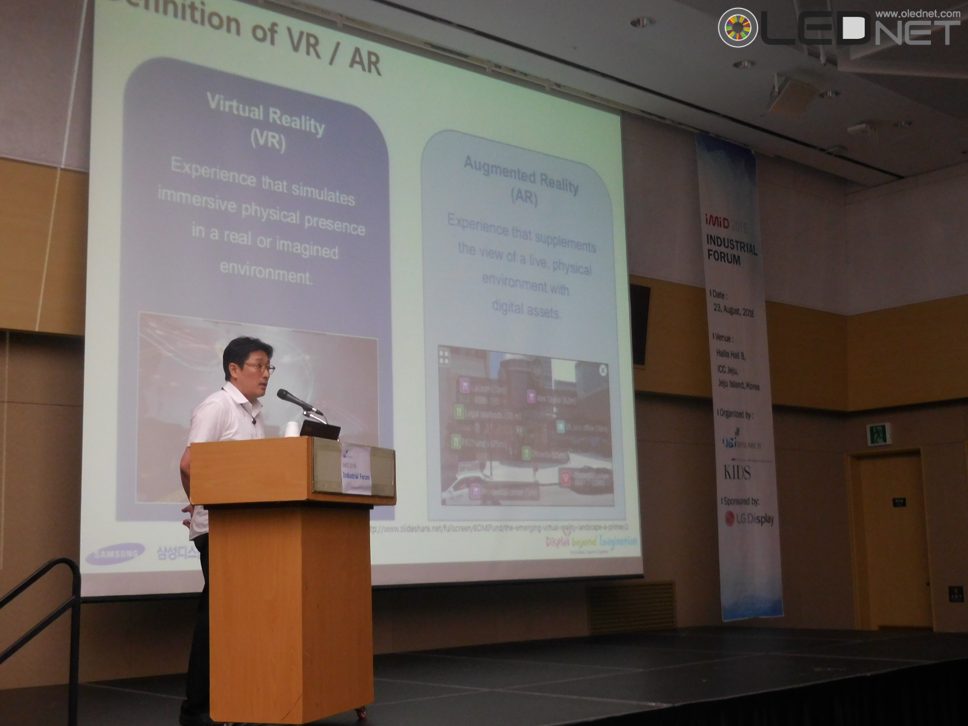
Samsung Display’s R&D Center principal engineer JongSeo Lee
Hyunjoo Kang / jjoo@olednet.com
Samsung Display’s R&D Center principal engineer JongSeo Lee suggested that VR∙AR market is an optimistic one unlike the 3D TV market of the past.
During the Industrial Forum held in ICC Jeju of South Korea, Lee gave a presentation titled ‘Introduction of Display Technology for VR/AR’, and mentioned concern from some sectors that the VR∙AR market will walk the same path as the 3D TV market.
Lee explained that the 3D TV market did not become vitalized due to the limits on contents production and 3D conversion technology, low quality of 3D display, lack of standards, etc. However, for VR∙AR market, contents and hardware such as Pokemon Go and HoloLens have arried, and many companies are active in this sector. Lee’s explanation is that leading companies including Apple, Microsoft, Intel, and Facebook are actively investing for VR∙AR sector and ecosystem is forming.
Using the Goldman Sachs materials, Lee emphasized that VR∙AR market will record USD 85,000 million by 2025. Furthermore, he explained technical characteristics of OLED, suitable for VR and AR, pointing out that transparent OLED is the key solution for AR technology actualization. He explained AR as the digital experience added to the actual physical environment or live screen, and transparent display actualizes this.
Compared to LCD, OLED has higher transmittance, and is considered the optimized solution for transparent display. For transparent OLED actualization, Lee told the audience that cathode with high transmittance and low resistance is needed and substrate should be able to withstand heat and be flexible. Metal types can be applied to the transparent area of the transparent display to produce mirror display. With this, AR can be experienced even using the form similar to mirrors. For this Lee added that high reflectance level and high color gamut are required.

삼성디스플레이 이종서 수석 연구원이 기조연설을 하고 있다.
강현주 / jjoo@olednet.com
삼성디스플레이의 이종서 수석연구원이“VR·AR 시장은 과거 3DTV 시장과 달리 긍정적이라는 관점을 제시했다.
8월 23일 제주도 제주ICC에서 열린 ‘인더스트리얼 포럼에서 이종서 수석연구원은 ‘VR/AR을 위한 디스플레이 기술’이라는 제목의 기조연설에서 VR·AR 시장이 과거 3DTV 시장과 비슷한 길을 걸을 것이라는 일각의 우려에 대해 언급했다.
이종서 수석연구원은 “3DTV 시장은 콘텐츠 생산 및 3D 전환 기술의 한계, 3D 디스플레이의 낮은 품질, 표준의 부재 등으로 활성화 되지 못했다”라며 “하지만 VR·AR 시장은 포켓몬고, 홀로렌즈 등 이미 콘텐츠와 하드웨어들이 등장했으며 수많은 업체들이 이 분야에 참여하고 있다”고 말했다.
애플, 마이크로소프트, 인텔, 페이스북 등 굴지의 기업들이 VR·AR 분야를 위해 적극 투자하고 있으며 생태계가 형성되고 있다는 게 그의 설명이다.
이 연구원은 골드만삭스의 자료를 인용해 “VR·AR 시장은 2025년까지 850억달러 규모를 형성할 것”이라고 강조했다.
이 연구원은 이어 가상현실(VR)과 증강현실(AR) 분야에 유용한 OLED의 기술적 특징들을 설명했다. 특히 투명 OLED가 증강현실(AR) 기술 구현을 위한 핵심 솔루션이라고 강조했다.
그는 AR에 대해 “실제 물리적 환경이나 실시간 화면에 더해지는 디지털 경험”이라고 설명하며 “투명디스플레이가 이를 구현해준다”고 말했다.
OLED는 LCD에 비해 투과율이 높아 투명 디스플레이를 만들기 위한 최적의 솔루션으로 여겨지고 있다. 이 연구원은 “투명 OLED 구현을 위해서는 높은 투과율 및 낮은 저항의 캐소드(cathode)가 필요하며 기판(substrate)이 열을 잘 견디며 플렉서블이 가능해야 한다”고 설명했다.
또 투명 디스플레이의 투명 영역에 메탈류를 적용, 미러(mirror) 디스플레이로 구현해 거울 같은 형태로도 AR을 즐길 수 있다. 이를 위해서는 높은 반사율과 고도의 색역(high color gamut)이 필요하다는 게 이종서 수석연구원의 설명이다.
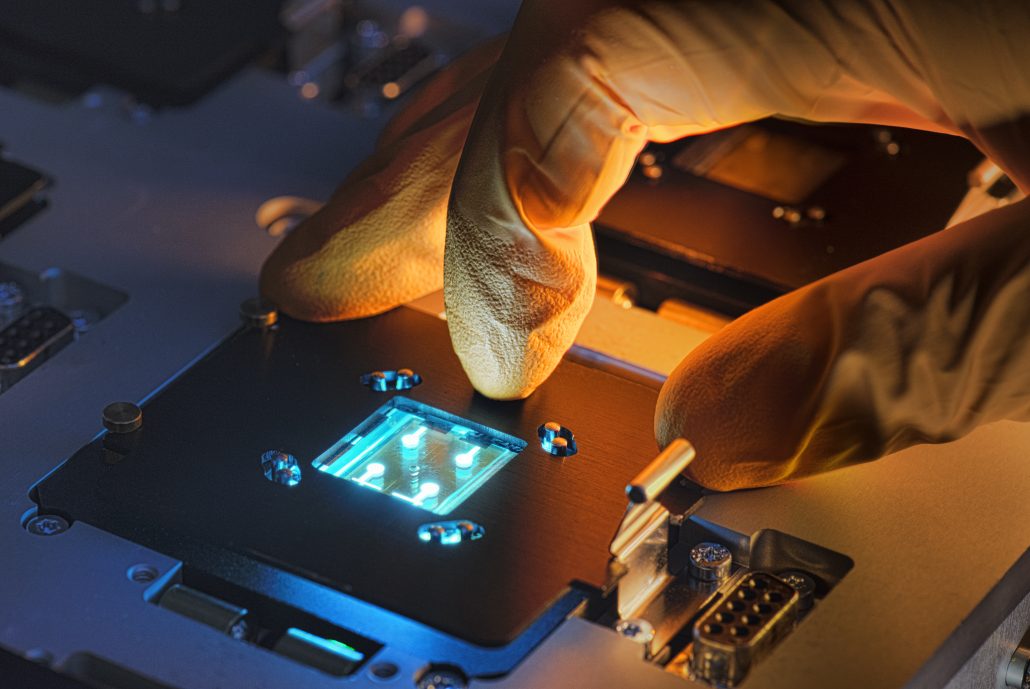
TADF is one of hot issues in OLED industry. (Picture Source : CYNORA)
Hyunjoo Kang / jjoo@olednet.com
Starting with IMID in Jeju, South Korea, numerous OLED conferences are to be held one after another, with TADF (thermally activated delayed fluorescence) technology expected to be a hot issue. The leaders in this sector such as Cynora are planning to actively discuss the technical skills through the events in fall.
Due to low efficiency of blue emitting materials, the current OLED equipped products in the market have limits on display’s energy efficiency. As a main solution for this important issue, TADF technology is receiving much attention as the main method for improving blue emitting materials efficiency between key display companies.
The importance of TADF technology is expected to be heightened in IMID in Jeju (23-28 August), and SPIE Conference (28 August – 1 September) in San Diego. Cynora, blue emitting materials related TADF technology leading company, is expected to discuss the technology. In May, Cynora announced that they developed deep blue material reaching an EQE of 16.3% (at 100 cd/m2).
Furthermore, Korea’s Sungkyunkwan University, Japan’s Kyushu University, and China’s Tsinghua University will share TADF related academic knowledge through coming conferences. Technology to improve OLED application products’ power consumption is expected to be a key topic also in OLED World Summit to be held in San Diego in September.
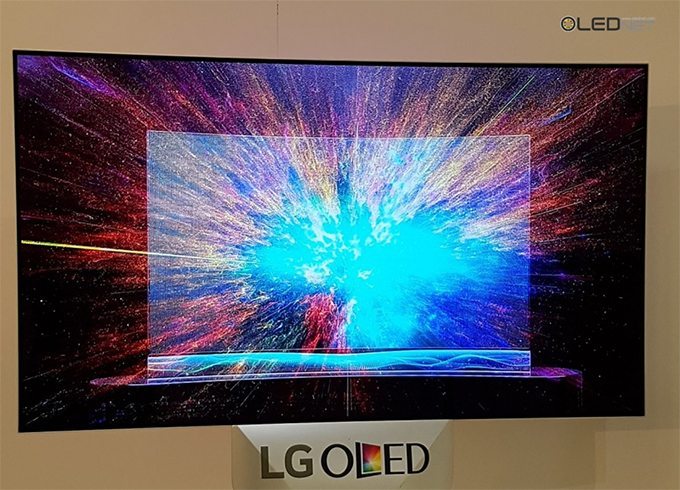
55inch LG OLED TV

TADF is one of hot issues in OLED industry. (Picture Source : CYNORA)
강현주 / jjoo@olednet.com
제주도 IMID 2016을 시작으로 앞으로 OLED 관련 컨퍼런스들이 본격적으로 열릴 예정인 가운데, 열활성화지연형광(TADF) 기술이 이번 가을 시즌 OLED 행사들의 뜨거운 관심사 중 하나가 될 것으로 예상된다.
Cynora 같은 이 분야 선도 업체는 올 가을 OLED 관련 행사들을 통해 자사의 기술력을 적극 알릴 계획이다.
현재 시중에 있는 OLED 탑재 제품들은 블루 발광 재료의 낮은 효율 탓에 디스플레이의 에너지 효율에 한계가 있다는 게 문제점으로 지목되고 있다.
핵심 디스플레이 업체들 사이에서 TADF 기술은 블루 발광 재료의 효율을 높이기 위한 대표적인 방법으로 각광 받고 있다.
오는 8월 23일부터 제주도에서 열리는 IMID와 28일부터 샌디에고에서 열리는 SPIE 컨퍼런스에서도 이 기술에 대한 중요성이 부각될 예정이다.
블루 재료 관련 TADF 선도 업체인 CYNORA GmbH는 이번 두 행사에서 업계를 대표해 이 기술 관련 정보를 전달할 계획이다. 재료 개발부터 정밀한 기계 공학에 이르는 내용이 마련된다. 이 회사는 지난 5월 외부양자효율 (EQE) 이 16.3% (100 cd/m2 조건) 에 이르는 진청색 재료를 개발했다고 발표하기도 했다.
이와 함께 한국의 성균관대, 일본 규슈대, 중국 칭화대도 올 가을 컨퍼런스들을 통해 이 기술 관련 학술 정보를 공유할 계획이다.
한편 오는 9월 말 샌디에고에서 열리는 OLED World Summit 에서도 OLED 응용 제품의 전력 소모를 개선해주는 기술이 핵심 주제 중 하나가 될 것으로 예상된다.
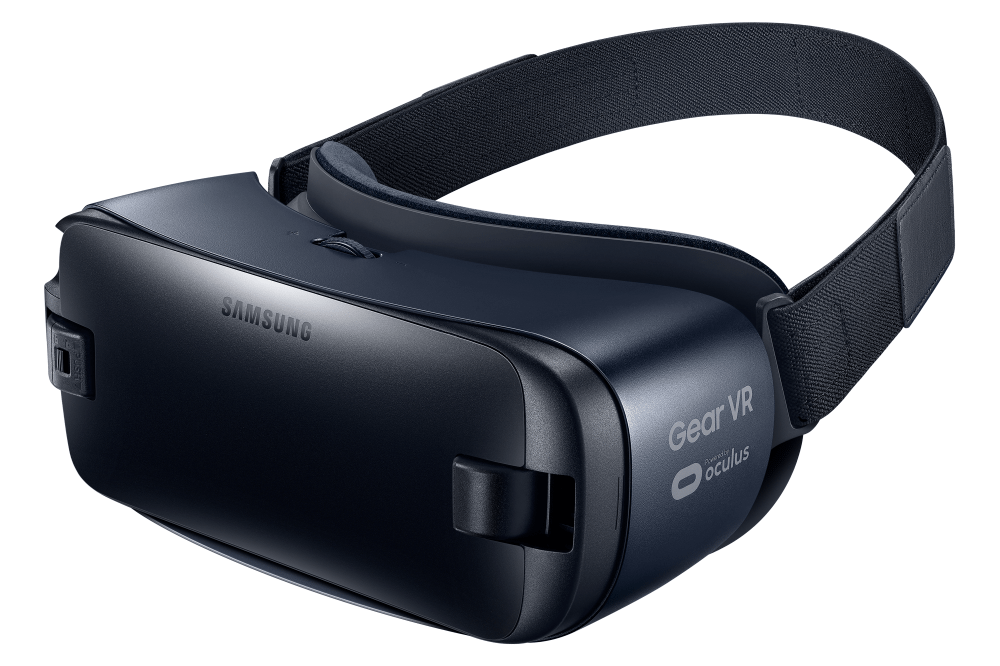
Gear VR (Source = Samsung)
삼성전자가 시야각과 사용성을 개선하고 호환성을 넓힌 가상현실 헤드셋 ‘기어 VR( Gear VR )’을 19일 국내 출시한다.
이번 신제품 ‘기어 VR’은 렌즈의 지름이 기존 38mm에서 42mm로 확대됐다.
시야각이 96도에서 101도로 넓어져 더 생생하고 몰입도 높은 가상현실을 즐길 수 있으며, 눈의 피로 현상도 개선될 것이라는 게 삼성전자의 설명이다.
‘기어 VR’은 갤럭시 노트7과 호환되는 USB타입-C포트를 채용했다.
함께 제공되는 micro USB 포트용 젠더를 활용해 갤럭시 노트5, 갤럭시 S7 엣지, 갤럭시 S7, 갤럭시 S6 엣지+, 갤럭시 S6, 갤럭시 S6 엣지도 연결해 사용할 수 있다.
기존 ‘기어 VR’에 충전 기능만 제공하던 외부 USB 허브는 외장 메모리나 외부 입력 기기와 연결도 가능해졌다.
기어 VR의 내ㆍ외부를 세련된 블루블랙 색상으로 변경하여 VR콘텐츠를 시청 할 때 빛 반사를 개선했다.
기기 조작도 더 편리해졌다.
기존의 ‘뒤로 가기’ 버튼 옆에 ‘홈 버튼’이 추가돼 VR 콘텐츠 감상 중에도 메인 화면인 오큘러스 홈 화면으로 간편하게 이동할 수 있다.
새로워진 ‘기어 VR’은 디지털프라자, 하이마트, 전자랜드, 이마트 등 전국 1,100여개 매장과 삼성WA닷컴은 물론 오픈마켓 포함 온라인에서도 구매할 수 있다.
출고가는 기존 기어 VR 모델과 동일한 12만 9,800원이다.
삼성전자는 ‘기어 VR’을 더욱 풍부하게 즐길 수 있는 콘텐츠 인프라도 지속 확대해 나가고 있다.
오큘러스 스토어에서 게임, 교육, 소셜 등 다양한 카테고리의 300여종 콘텐츠를 즐길 수 있다.
특히 ‘리우 VR’ 앱으로 리우 올림픽 9종 경기의 주요 VR 영상을 안방에서 즐길 수 있으며, 22일 폐막식 역시 VR 생중계로 기어 VR 고객에게 제공한다.
개막식 주요 장면은 디지털프라자 매장에서도 기어 VR로 시청 할 수 있도록 할 예정이다.
삼성전자는 다음 달 360도 동영상 콘텐츠 서비스 ‘Samsung VR’ 앱을 오픈해 ‘기어 VR’ 사용자들에게 다양한 가상현실 콘텐츠를 제공할 예정이다.
삼성전자 관계자는 “이번에 선보이는 ‘기어 VR’의 강화된 하드웨어와 소프트웨어를 통해 이용자에게 뛰어난 몰입감과 함께 최상의 가상현실 경험을 제공할 것”이라며 “앞으로도 콘텐츠 연계 서비스를 더욱 강화해 가상현실 생태계 확장에 주력해나갈 것”이라고 말했다.
‘기어 VR’에 대한 자세한 정보는 삼성전자 온라인 사이트(http://www.samsung.com/sec/gear)에서 확인할 수 있다.
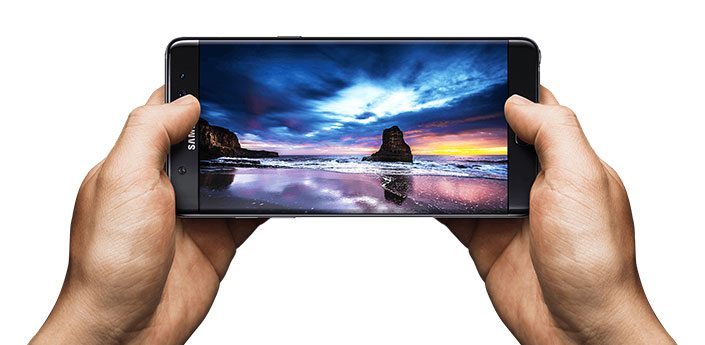
OLED Smartphone Galaxy Note7(Source = Samsung)
Hyunjoo Kang / jjoo@olednet.com
OLED smartphone market is growing prominently in the global market. Q2 2016 global 4~6 inch OLED panel shipment increased by 72% compared to the same period in 2015.
According to investigation by UBI Research, the shipment of OLED panel for smartphone in Q2 2016 is 88 million units, an increase of 72% compared to 51.2 million units in Q2 2015. This rapid growth of 4~6 inch OLED panel is led by key smartphone companies in Korea and China.
Samsung Electronics, a leading representative of OLED smartphone market, is expanding OLED smartphone products. The company recently announced flexible OLED panel equipped Galaxy Note 7, a first for a Galaxy Note series.
Not only Samsung, but Chinese companies are leading the market growth expanding the OLED application. In particular, Huawei’s smartphone business growth is significantly affecting OLED market. According to a market research company IDC, the global smartphone sales of the same period is only 3%. However, the sales of Huawei, possessing numerous OLED smartphone products, increased by 25% in H1 compared to the same period in 2015.
According to UBI Research, the total revenue of Q2 2016 global smartphone OLED panel market is USD 3,160 million, approximately 27% increase compared to the same period in 2015.
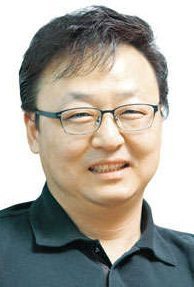
LGD IP 담당 오정훈 상무
강현주 / jjoo@olednet.com
LG디스플레이(대표이사 부회장 한상범, 韓相範 / www.lgdisplay.com)는 한국지식재산협회(KINPA, Korea Intellectual Property Association) 총회 결과 LG디스플레이 IP (Intellectual Property) 담당 오정훈 상무가 제 3대 회장으로 선임되었다고 18일 밝혔다.
한국지식재산협회는 기업의 지식재산 경쟁력 강화를 위해 2008년 설립된 우리나라의 대표적인 지식재산 민간단체로서 LG전자와 삼성전자 등 약 120여개 기업을 회원으로 두고 있다.
한국지식재산협회는 또한 각종 컨퍼런스 및 교육을 통해 지식재산의 중요성을 알리는데 앞장서는 한편, 지식재산 이슈의 대응방안 논의를 위해 회원사간 협력을 도모하고 있으며, 이를 통해 국가 지식재산 역량 강화에 기여하고 있다.
오정훈 신임 회장은 “한국지식재산협회가 지식재산 분야의 전문성을 보유한 독립적인 기업 협의체로서 활동 저변을 확대하고 성장할 수 있도록 최선을 다할 것”이라며 “특히, 대•중소기업간 협력을 통해서 유용한 지식재산 노하우의 공유 등 회원사에 실질적 혜택이 돌아갈 수 있도록 할 것”이라고 포부를 밝혔다.

55inch LG OLED TV
강현주 / jjoo@olednet.com
유비산업리서치가 2016~2020년까지 55인치 이상 OLED TV 패널 출하량이 당초 전망치보다 약 20~30% 가량 줄어들 것으로 내다봤다.
이는 65인치 이상 TV 시장이 커지고 있는 것을 감안한 것이다.
올해 초 유비산업리서치는 55인치 이상 OLED 패널의 글로벌 출하량이 2016년 120만개, 2020년에는 810만개까지 성장할 것으로 전망했다.
하지만 마더글래스 당 생산량이 적은 65인치 패널 양산 비중이 높아지면서 전망치를 20~30%로 하향했다. 이에 따라 2016년 약 80~90만개, 2020년 약 600만개 안팎이 될 것으로 예상했다.
이는 LG디스플레이의 대형 OLED 패널 양산라인인 파주의 E3, E4 공장을 기준으로 산정한 수치다.
E3 공장은 55인치 패널 생산 위주로 가동된다. E4 공장 역시 55인치 생산 비중이 높지만 65인치 패널도 동시에 양산한다.
현재 대형 TV는 55인치가 주류지만 65인치 TV 시장도 빠르게 성장 중이다. 이에 LG디스플레이는 65인치 패널의 비중을 늘리고 있다.
유비산업리서치의 시장조사 결과 LG디스플레이는 2016년 2분기 약 2만8000개의 65인치 OLED 패널을 출하했다. 이는 전분기 대비 약 2배 늘어난 수치다.
E4 라인의 Gen8 마더글래스 한장 당 55인치 OLED 패널은 6장이 만들어지지만 65인치 패널은 3장이 나온다.
LG디스플레이가 65인치의 비중을 늘릴수록 같은 기간 생산량은 줄어든다는 얘기다. 이를 감안하면 55인치 이상 OLED 패널 출하량이 약 20~30% 낮아질 것이라는 게 유비산업리서치의 전망이다.
한편 또 다른 시장조사 업체 IHS도 얼마전 글로벌 OLED TV 시장 전망치를 32% 하향했다. 이에 따라 올해 약 83만대, 2020년 580만대가 될 것으로 내다봤다.

OLED Smartphone Galaxy Note7 (Source = Samsung)
강현주 / jjoo@olednet.com
전세계 시장에서 OLED 스마트폰 시장이 눈에 띄게 성장하고 있다. 2016년 2분기 글로벌 스마트폰용 OLED 패널 출하량은 전년동기 대비 72% 늘어난 것으로 나타났다.
유비산업리서치의 조사에 따르면 지난 2분기 전세계에 출하된 스마트폰용 OLED 패널은 8800만개다. 이는 2015년 2분기 5120만개보다 72% 상승한 수치다.
OLED 스마트폰 시장의 급성장을 주도 하는 것은 한국과 중국의 주요 스마트폰 업체들이다.
OLED 스마트폰 시장 대표주자인 삼성전자는 OLED 스마트폰 제품을 확대하고 있다. 최근 이 회사는 갤럭시노트 시리즈로는 처음으로 플렉서블 OLED 패널이 탑재된 갤럭시노트7을 발표하기도 했다.
삼성 뿐 아니라 중국 스마트폰 업체들도 OLED 채용을 늘리며 이 시장 성장을 이끌고 있다.
특히 화웨이의 스마트폰 사업 성장이 OLED 시장에 적지 않은 영향을 주고 있다. 시장조사업체 IDC에 따르면 올해 상반기 전세계 스마트폰 판매량 증가는 3%에 불과하다. 하지만 다수의 OLED 스마트폰 제품을 보유한 화웨이의 올해 상반기 스마트폰 판매량은 전년동기 대비 25%가 늘었다.
한편 유비산업리서치에 따르면 2016년 2분기 글로벌 스마트폰용 OLED 패널 시장 총 매출은 31억6000만 달러로 전년동기에 비해 약 27% 상승했다.
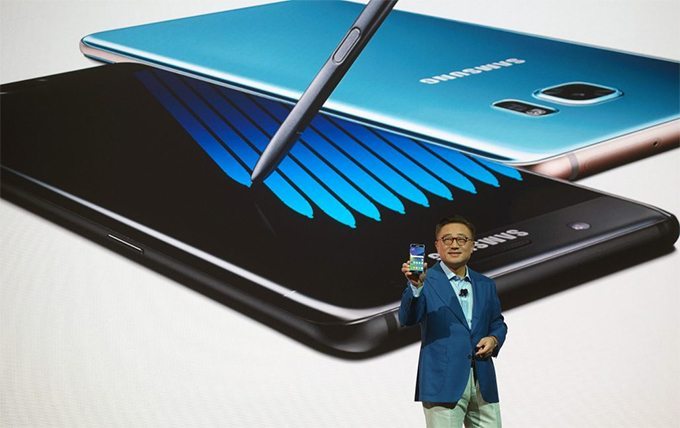
Flexible OLED Equipped Smartphone Galaxy note 7
Hyunjoo Kang / jjoo@olednet.com
Global smartphone OLED panel shipment is expected to exceed 300 million units for the first time in 2016, and exceed 1,000 million units in 2019.
On 16 August, UBI Research forecast that the global shipment for 4-6 inch OLED panel for smart phone is expected to be 318.8 million units, approximately 27% increase from 2015.
From then on, 2017 is estimated to record 505.3 million units, 902.5 million units in 2018, 1,170.2 million units in 2019, and 1,379 million units in 2020.
UBI Research forecast that rapid growth of flexible OLED for smart phone in particular will lead the total smart phone OLED shipment increase. According to UBI Research’s investigation, rigid type of smart phone OLED shipment is expected to dominate the total smartphone OLED shipment in 2016 with 78%.
However, in 2018, flexible OLED panel is estimated to record 56% and exceed rigid. The market share of flexible is expected to increase to 62.3% in 2019, and 67% in 2020; it is forecast to be the main force within the smartphone OLED market.
IHS, another market research company, also forecast that the smart phone OLED panel shipment will exceed 300 million units for the first time in 2016. IHS estimated the smartphone OLED shipment to be 366.88 million units in 2016 and 663.66 million in 2019, and showed some difference from UBI Research.

삼성전자의 flexible OLED 탑재 Smartphone 갤럭시노트7
강현주 / jjoo@olednet.com
글로벌 smartphone 용 OLED 패널 출하량이 2016년 사상 처음으로 3억개를 넘고 오는 2019년에는 10억개를 넘을 것이라는 전망이 나왔다.
16일 유비산업리서치는 2016년 스마트폰용에 해당하는 4인치~6인치 OLED 패널 전세계 출하량이 2015년대비 약 27% 증가한 3억1880만개가 될 것이라고 예상했다. 이어 2017년 5억530만개, 2018년 9억250만개, 2019년 11억7020만개를 거쳐 2020년에는 13억7900만개에 이를 것으로 전망했다.
유비산업리서치는 특히 스마트폰 시장에서 flexible OLED의 급성장이 전체 스마트폰 OLED 출하량 급증을 주도할 것으로 내다봤다.
유비산업리서치의 조사에 따르면 스마트폰용 OLED 중 rigid 타입 출하량은 2016년 전체 스마트폰용 OLED 출하량의 78%의 압도적인 점유율을 차지할 전망이다. 하지만 2018년이면 flexible이 56%를 차지, rigid를 넘어설 것으로 예상된다.
이어 2019년에는 flexible이 62.3%, 2020년에는 67%까지 비중이 높아져 스마트폰 OLED 시장의 명백한 주류로 자리잡을 것으로 예측된다.
한편 또 다른 시장조사업체 IHS도 2016년 스마트폰용 OLED 패널 출하량이 처음으로 3억개를 넘을 것으로 예측했다. IHS는 올해 스마트폰 OLED 출하량은 3억6688만개, 2019년 6억6366만개로 전망해 유비산업리서치와는 다소 차이를 보였다.
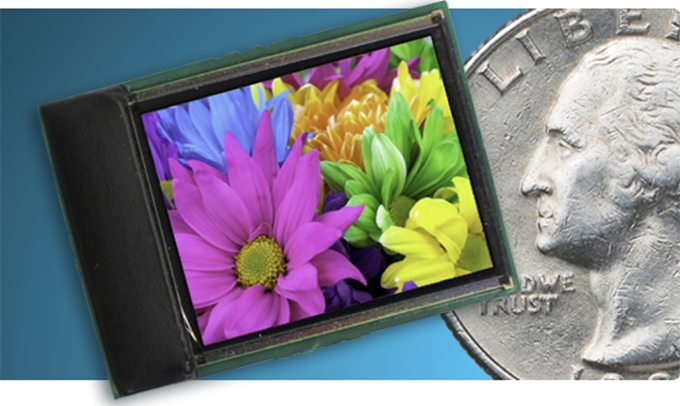
eMagin`s Microdisplay (Source = eMagin)
Hyunjoo Kang / jjoo@olednet.com
eMagin, an OLED microdisplay company which is a technology that is needed for VR device, AR device, medical device, etc., showed 3.8% fall in H1 2016 sales compared to the same period last year with net loss of USD 2.404 million.
According to eMagin’s Q2 2016 performance results announced on 11 August, the company recorded sales of USD 5.5 million in sales, a decrease of approximately 11% compared to the same period in 2015.
As such, eMagin’s total sales in H1 is USD 12.534 million, approximately 3.8% less than H1 2015. While the product sales did not significantly differ, the government contracts suffered compared to the same period last year. However, the company recorded profit of USD 1 million in licensing revenue which did not occur in H1 2015. eMagin holds VR headset related intellectual property rights.
eMagin recorded a net loss of USD 2.164 million in Q2 2016, and a net loss of USD 2.15 million in H1 2016. Compared to the net profit of USD 0.254 million in the same period last year, this is a fall of USD 2.404 million. Andrew G. Sculley, CEO of eMagin, explained that the government contract volume was low and there were some manufacturing equipment downtime. He emphasized that eMagin is the only company that can satisfy the resolution and luminance demanded by the expanding VR and AR market.

eMagin `s Microdisplay ( Source = eMagin )
강현주 / jjoo@olednet.com
가상 현실 (VR) 기기, 증강 현실 (AR) 기기 및 의료용 기기 등을 위한 OLED 마이크로디스플레이( Microdisplay ) 기술 업체인 eMagin 이 2016년 상반기 매출이 전년동기보다 3.8% 하락하고 미화 240만4000달러의 순 손실을 낸 것으로 나타났다.
11일 (현지시간) eMagin 이 발표한 2016년 2분기 실적자료에 따르면 이 회사는 지난 2분기에 전년 동기 대비 약 11% 하락한 550만 달러의 매출을 기록했다.
이로써 이 회사는 상반기 총 매출은 전년 동기보다 약 3.8% 떨어진 1253만 4000달러다. 상반이 제품 판매 매출은 큰 차이 없지만 정부로부터의 계약 수주가 지난해 같은 기간보다 부진했다.
하지만 전년 동기에는 없었던 라이선스 매출이 올해 상반기에는 100만 달러 발생했다. 이 회사는 VR 헤드셋 기술 관련 지적 재산권을 가지고 있다.
올해 2분기 이 회사는 216만 4000달러의 순손실을 기록, 상반기 순손실은 총 215만 달러다. 전년동기 25만 4000달러의 순이익에 비해 240만 4000달러가 하락했다.
이 회사의 CEO인 Andrew G. Sculley 는 “올해 2분기에는 정부로부터의 계약 규모가 작았고 우리 제조 기기에 다운타임이 있었다”고 설명했다.
Sculley CEO는 “우리는 소비자들의 수요가 확대되고 있는 VR, AR 시장에서 요구하는 해상도와 밝기를 충족할 수 있는 기술을 가지고 있는 유일한 업체라고 믿는다”라고 강조했다.
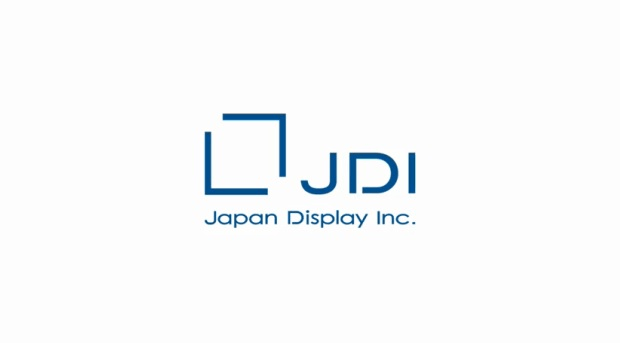
Source = JDI
Hyunjoo Kang / jjoo@olednet.com
Japan Display, which recently drew attention when it became known that they sought financial help from the government, recorded JPY 10,600 million operating loss in H1 2016.
This company recently announced that in Q1 2016, a fiscal year that ended on 30 June, they recorded JPY 174,300 million in sales, a decrease of 29.2% compared to the same period last year, and operating loss of JPY 3,400 million, a fall of 5,600 million compared to the same period in 2015.
As such in H1 2016, JDI showed JPY 350,600 million in sales and JPY 10,700 million operating loss. It explained that the shipment in the last quarter fell short of expectations, and operating profit was poor due to China’s ASP fall, etc. In particular, it is analyzed that the poor sales of Apple’s iPhone, which has been occupying 50% of JDI sales, affected JDI’s business.
On 10 August, Japanese media reported that Mitsuru Honma, CEO of JDI, revealed that INCJ promised support. The financial support is analyzed to be for the smooth installation of OLED mass production line as well as the loss recovery.
JDI is carrying out mobile OLED mass production line and anticipated to be one of the strong candidates as OLED panel suppliers for Apple’s future new iPhone. Through this performance announcement, JDI emphasized they are planning to mass produce OLED from H1 2018.
The company forecast that they will show JPY 210,000 million in sales and JPY 1,000 million operating profit in Q2 2016 in fiscal year that ends in 30 September.
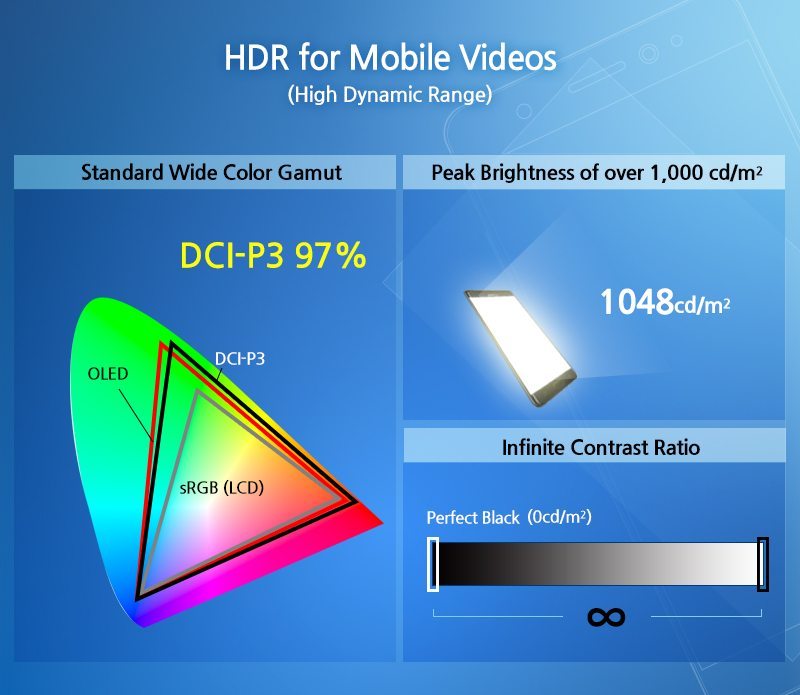
Galaxy Note 7 Records High Peak Brightness of 1,048 nit
Hyunjoo Kang / jjoo@olednet.com
DisplayMate Technologies, the leading evaluator of video screens, announced the results of a new series of comprehensive lab tests on the Galaxy Note 7 ’s display.
As the first smartphone to incorporate High Dynamic Range(HDR) technology for mobile video streaming, the Galaxy Note7 provides a cinema-like viewing experience. HDR, the newest performance enhancement feature developed for the latest 4K Ultra HDTVs, expands the color, contrast and brightness of video content through special image processing.
To display the latest high-end video content, the Galaxy Note7 was equipped with the newest standard Wide Color Gamut called DCI-P3 for Digital Cinema Initiative. The measured color gamut of the AMOLED Cinema screen mode is a very accurate 97 percent of the standard DCI-P3 color gamut. It also received a very accurate Absolute Color Accuracy measurement of 2.8 JNCD.
The Galaxy Note7 boasts a record high peak brightness (automatic brightness) of 1,048 nits in high ambient light conditions and a screen reflectance level of 4.6 percent. This means that the screen of the Galaxy Note7 can easily be viewed or read, even under relatively high ambient lighting, such as bright sunlight, which washes out the image color saturation and contrast, decreasing picture quality.
In line with its automatic brightness improvements, the Galaxy Note7 received praise from DisplayMate for being the first of its kind to incorporate a second, rear ambient light sensor. This sensor measures surrounding ambient light and then uses the measured value, along with that of the front ambient light sensor, to alter the display brightness accordingly. The additional sensor helps the device to obtain an accurate reading of the true ambient light level, even when the phone is held in the user’s shadow.
DisplayMate also made note of the Galaxy Note7’s new Blue Light Filter that allows the user to adjust and reduce the amount of blue light from the display for better night viewing, “which some recent research indicates can affect how well users sleep afterwards.”
Featuring curved screen OLED display, the Galaxy Note7 will be available for purchase starting August 19.

Source = JDI
강현주 / jjoo@olednet.com
최근 일본 정부에 재정지원을 요청한 것이 알려져 눈길을 끌었던 재팬디스플레이( JDI )는 올해 상반기 106억 엔(한화 약 1149억 원)의 영업손실을 기록했다.
JDI는 최근 실적발표를 통해 지난 6월30일에 마감한 회계연도 2016년 1분기에 전년동기보다 29.2% 하락한 1743억 엔의 매출과 전년동기대비 영업이익이 56억 엔 하락한 34억 엔의 영업손실을 냈다고 발표했다.
이로써 JDI는 올해 상반기 총 매출 3506억 엔(한화 약 3조 8000억 원)과 107억의 영업손실을 기록했다. JDI는 지난 분기 출하량이 예상치에 미치지 못했으며 중국에서의 ASP 하락 등으로 영업이익이 부진했다고 설명했다.
특히 JDI 매출의 50%를 차지해온 애플의 아이폰 판매부진이 JDI의 사업에 타격을 준 것으로 분석되고 있다.
10일 일본 언론들은 JDI 혼마 미츠루 CEO가 “일본산업혁신기구(INCJ)가 지원을 약속했다”고 밝혔다고 보도했다. JDI의 이번 자금지원은 손실을 만회하는 한편 OLED 양산라인 구축을 차질없이 진행하기 위한 것이라는 분석이 나오고 있다.
한편 JDI는 모바일 OLED 양산라인 구축을 진행하고 있어 애플의 차기 아이폰 신제품에 OLED 패널을 공급할 유력한 후보 중 하나가 될 것으로 기대되는 업체다. JDI는 이번 실적발표를 통해 “2018년 상반기부터 OLED 양산을 시작할 계획”이라고 강조했다.
이 회사는 오는 9월 30일 마감되는 회계연도 2016년 2분기에 2100억 엔의 매출과 10억엔의 영업이익을 낼 것으로 전망했다.
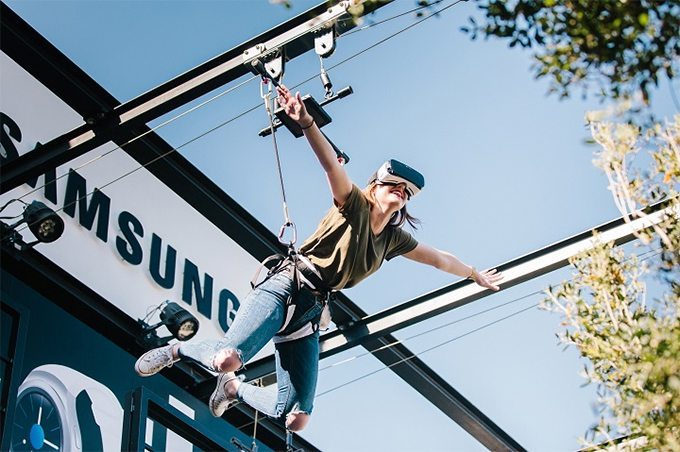
bungee jump with Gear VR (Source = Samsung)
Hyunjoo Kang / jjoo@olednet.com
Unlike the same period last year, H1 2016 showed quiet smartwatch sector while VR (virtual reality) device and smartband became popular.
According to UBI Research, of OLED wearable device revealed in H1 2016, 6 are VR devices (OLED display is either directly equipped to the device or OLED smartphone can be connected) and 4 are smartbands. In H1 2015, there were 5 OLED smartwatches and 3 OLED smartbands. The difference between almost no smartwatches in H1 2016 is evident.
In VR sector, Oculus began the announcements with Samsung Display’s OLED equipped Oculus Rift in January. Following this, other companies such as Sony, HTC, and DeePoon revealed new products in international exhibitions. Samsung Electronics recently showed Gear VR that can be paired with Galaxy Note 7 in New York, and VR is expected to maintain its popularity in Q3.
In H1 2016, smartband stimulated the market with Samsung Electronics’ Gear Fit 2, Xiaomi’s Mi Band 2, and Fitbit’s Alta.
However, the only new OLED smartwatch product announced in H1 2016 was China’s GEAK’s GEAK Watch 3, and it was not even released in the market. The reason for the slump in the smartwatch market has been noted to be short battery life, and lack of useful applications. However, as Samsung Electronics and Apple are expected to announce new smartwatch products in Q3, renewed enthusiasm is anticipated.
Samsung’s Gear 3 is expected to be revealed in IFA 2016 in Berlin in September. Apple is also rumored to be announcing Apple Watch in September. Apple has already revealed smartwatch operating system Watch OS3 with improved speed and function in June.

리스본 락 페스티발에 마련된 갤럭시 어드벤쳐 파크에서 삼성전자 모델이 VR 번지점프를 하고 있다. (출처 = 삼성전자)
강현주 / jjoo@olednet.com
올해 상반기 OLED 웨어러블 기기 시장은 전년동기와 달리 스마트 워치 부문은 조용했던 반면 가상현실( VR ) 기기와 스마트 밴드가 대세를 이뤘다.
유비산업리서치의 조사에 따르면 올해 상반기 공개된 OLED 웨어러블 기기 중 VR기기 (OLED 디스플레이를 직접 탑재하거나 OLED 스마트폰을 끼워 쓸 수 있는 VR 기기) 는 6종, 스마트 밴드는 4종이다.
2015년 상반기 공개된 OLED 웨어러블 기기는 스마트 워치 5종과 스마트 밴드 3종이다. 이는 스마트 워치 신제품이 거의 나오지 않은 올해 상반기와 대조적인 모습이다.
VR 부문은 오큘러스가 지난 1월 삼성디스플레이의 OLED를 탑재한 VR 기기인 ‘오큘러스 리프트’를 발표한 것을 시작으로 소니, HTC, DeePoon 등이 소비자 가전 전시회 (CES) 같은 국제 전시회에서 신제품을 속속 공개했다. 최근 삼성전자는 뉴욕 갤럭시 노트 7 언팩 행사에서 갤럭시 노트 7과 연동되는 새 ‘기어 VR’ 제품을 발표, 이에 힘입어 3분기에도 VR 열기가 지속될 예정이다.
지난 상반기 스마트밴드 부문은 삼성전자의 ‘기어 핏2’, 샤오미의 ‘미 밴드2’, Fitbit의 ‘알타’ 등이 출시되며 시장을 달궜다.
올해 상반기 발표된 OLED 스마트 워치 신제품은 중국 GEAK이 지난 5월 ‘CES 아시아 2016’에서 전시한 OLED와 E-Paper 듀얼 디스플레이의 ‘GEAK Watch 3세대’가 유일한데 그나마 시장에 나오지 않았다.
스마트 워치 시장이 이처럼 정체를 보이는 것은 짧은 배터리수명, 유용한 애플리케이션의 부재 등으로 소비자 마음을 잡지 못한 것이 요인으로 지목돼 왔다.
하지만 3분기 삼성전자와 애플의 스마트 워치 신제품이 발표될 것으로 알려지면서 이 시장이 다시 활기를 찾을 것으로 기대된다.
삼성은 오는 9월 베를린에서 열리는 IFA 2016에서 ‘기어 S3’를 공개할 것으로 알려졌으며 애플도 9월에 ‘애플 워치2’를 발표한다는 소문이 있다. 실제로 애플은 지난 6월 세계 개발자 회의( WWDC )에서 속도와 기능을 강화한 스마트워치용 새 운영체제 ‘Watch OS 3’ 를 공개한 바 있어 기대가 모아진다.

Galaxy note 7 이 밝기 1,000cd/㎡를 돌파했다.
강현주 / jjoo@olednet.com
삼성전자의 신제품 갤럭시노트7( Galaxy note 7 )의 디스플레이가 스마트폰 최초로 밝기 1,000cd/㎡(가로·세로 1미터의 평면에 촛불 1000개를 켜 놓은 정도의 밝기)를 돌파했다고 삼성디스플레이가 10일 발표했다.
갤럭시노트7은 디스플레이 전문 기관인 디스플레이메이트의 화질평가에서 종합점수 ‘Excellent A’ 등급을 획득했다. 디스플레이메이트가 공개한 평가 결과에 따르면 갤럭시 노트7은 주요 평가항목인 밝기, 야외시인성, 색 표현력 등에서 역대 최고 수준을 기록한 것으로 나타났다.
갤럭시노트7은 5.7형 QHD(2560×1440) OLED를 탑재해, 해상도와 사이즈 면에서 전작인 노트5와 동일한 스펙을 유지했으나 밝기, 반사율 등 야외시인성 관련 성능은 크게 개선된 것으로 나타났다.
스마트폰은 다른 IT제품에 비해 야외에서 사용하는 경우가 많아, 밝은 태양광 아래에서도 화면이 또렷이 보이는 정도인 야외시인성이 중요하다. 야외시인성은 디스플레이의 밝기와 반사율에 가장 큰 영향을 받는다. 디스플레이메이트에 따르면 노트7의 최대 밝기는 1,048cd/㎡로 측정돼 전작인 갤럭시 노트5의 861cd/㎡ 보다 22% 가까이 높아졌다.
갤럭시노트7은 화면 시청을 산만하게 하고 눈에 피로도를 높이는 요소인 화면반사율도 지속 개선해 노트 시리즈 중 역대 최저인 4.6%를 달성했으며, 무한대에 이르는 명암비 등을 통해 야외에서도 뛰어난 가독성을 확보했다는 게 삼성전자의 설명이다.
갤럭시 노트7은 모바일 HDR(High Dynamic Range) 기술을 탑재했다. 사람의 눈은 암흑 상태인 0cd/㎡부터 수만 cd/㎡까지 다양하게 인식하는데 비해, 디스플레이는 그보다 훨씬 좁은 영역의 밝기만 표현할 수 있어 그 동안 자연스러운 장면을 담아내기 어려웠다. HDR은 화면의 어두운 부분은 더욱 어둡게 표현하고, 밝은 곳은 더욱 밝게 표현해 화질을 높이는 기술로 현재 프리미엄 UHD TV를 중심으로 사용되고 있다.
특히 이번 평가에서 갤럭시 노트7은 DCI-P3의 색표현영역 만족도 97%라는 최고 수준의 기록을 달성해 약 80% 수준인 LCD 기반 제품보다 월등한 화질 성능을 과시했다.
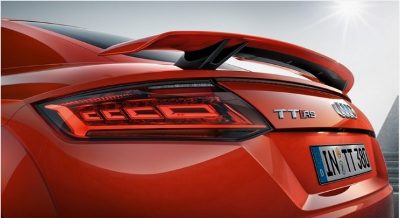
With the Forecast of Continued growth of OLED Lighting Panel Market, Automotive Lighting Market is Rapidly Growing ( Picture Source = Novaled )

OLED Lighting for Automotive (Picture Source = Novaled)
강현주 / jjoo@olednet.com
조명용 OLED 패널 시장이 빠른 성장세를 이어갈 전망인 가운데, 특히 자동차( Automotive ) 조명용 OLED가 OLED 조명 시장을 리드할 것으로 예상된다.
유비산업리서치가 8일 발간한 ‘2016 OLED Lighting Annual Report’에 따르면 글로벌 자동차 조명용 OLED 패널 시장은 올해 300만 달러에 불과하다.
하지만 2017년부터 급성장을 거듭해 오는 2019년이면 2억9600만 달러 규모를 형성, 실내 조명용 OLED 패널 시장을 넘어설 것으로 예측된다. 2019년 실내조명용 OLED 패널 시장은 1억8300만 달러로 관측된다.
이어 2020년에는 자동차 조명용 OLED 패널 시장은 8억2100만 달러로 4억9400만 달러의 실내조명 시장과 더욱 격차를 벌일 전망이다. 이후에는 실내조명 OLED 시장이 급성장해 2023년부터 자동차 부문 매출을 넘을 것으로 예상된다. 하지만 그 이후에도 자동차 부문은 실내조명과 함께 OLED 조명 시장의 메이저 영역을 사수할 전망이다.
OLED는 다양한 디자인이 가능하다는 것과 눈 건강에 해롭지 않다는 장점 덕에 차세대 자동차 조명용 패널로 각광받고 있다. 특히 OLED는 곡면 디자인이 가능하다는 점이 자동차 조명으로서의 장점으로 부각된다.
실제로 유비산업리서치는 자동차 조명용 OLED 시장에서 플렉서블 OLED의 점유율은 앞으로 지속적으로 75% 이상이 될 것으로 전망한다.
유비산업리서치 관계자는 “OLED는 플렉서블 구현이 가능해 자동차 실내등, 테일라이트 등의 디자인 측면에서 이점이 많다”며 “더 얇고 자유로운 곡면 디자인이 가능해 차량 내 어느 위치에도 설치할 수 있는 조명을 설계할 수 있어 자동차 업체들의 새로운 차별화 포인트가 될 것”이라고 설명했다.
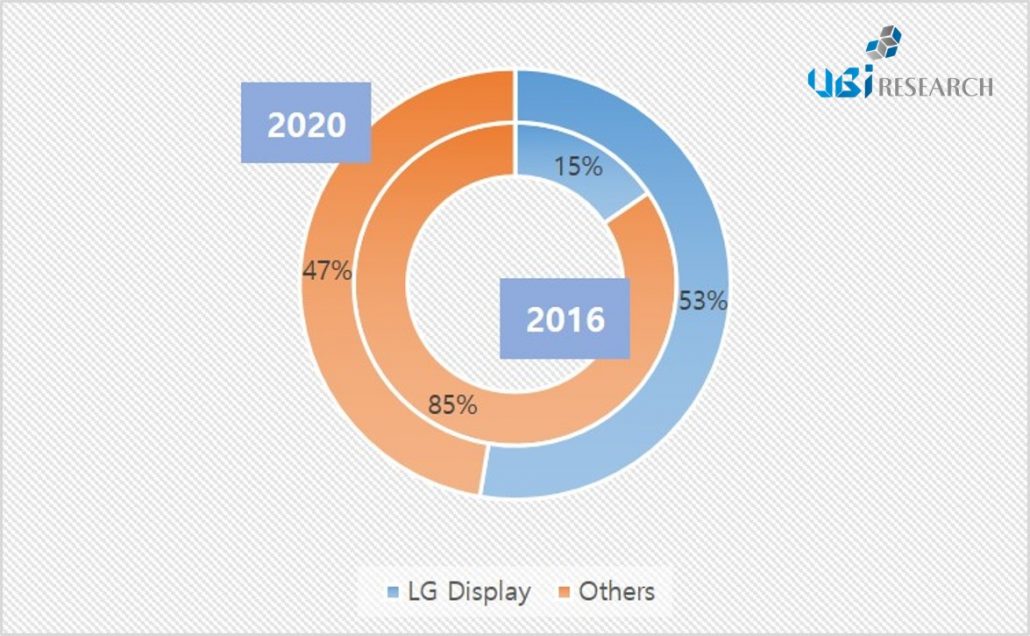
Global lighting OLED panel revenue market share (Source = UBI Research 2016 OLED Lighting Annual Report)
Hyunjoo Kang / jjoo@olednet.com

Global OLED lighting panel revenue market share(출처= UBI Research 2016 OLED Lighting Annual Report)
강현주 / jjoo@olednet.com
전세계 OLED 조명 패널 시장이 매년 급성장을 거듭해 오는 2020년에는 한화 1조8천억 원 규모를 형성할 것으로 예측되며, LG디스플레이가 그 중 53%의 점유율을 차지할 것으로 전망된다.
유비산업리서치가 8일 발간한 ‘2016 OLED Lighting Annual Report’에 따르면 글로벌 OLED 조명 패널 시장은 2016년 미화 1억1400만 달러(한화 약 1266억 원) 규모를 형성하고 2017년부터 2025년까지 연평균 66%의 성장률을 기록할 것으로 예상된다.
OLED 조명은 높은 에너지 효율, 응용 분야의 다양성이 장점으로 부각되고 있다. 글로벌 시장에서 백열등 사용규제가 강화된 것도 OLED 조명이 각광받는 요인이다. 이에 글로벌 OLED 조명 패널 시장도 성장을 거듭해 2020년 미화 16억 달러 규모(한화 약 1조8천억 원)를 형성할 전망이다.
LG디스플레이는 OLED lighting 패널 양산 기술을 보유하면서 투자도 단행한 유일한 업체다. 2016년 초 LG화학의 조명용 OLED 사업이 LG디스플레이로 이관된 바 있다.
LG Display는 지난 3월 월 15K 규모의 조명용 5세대 OLED 패널 양산라인 투자를 결정, 이 사업을 본격적으로 확대하고 있다. 이 회사는 2020년 조명용 OLED 패널 매출이 전세계 시장 53%에 해당하는 8억4800만 달러(한화 약 9400억 원)에 달할 것으로 예상된다.
응용 분야별로 보면 일반 실내조명 분야(down light)와 자동차 조명(Automotive)이 급격한 성장세를 기록해 OLED 조명 시장의 가장 큰 비중을 차지할 것으로 예측된다. 이 외에도 야외용, 의료용, 전시용 등 다양한 분야에서 OLED 조명 시장이 확대되고 있다.
한편 오는 2025년 자동차 조명용 OLED 패널 시장은 27억8600만 달러, 실내조명 패널 시장은 34억900만 달러 규모로 성장할 것이라는 게 유비산업리서치의 전망이다.
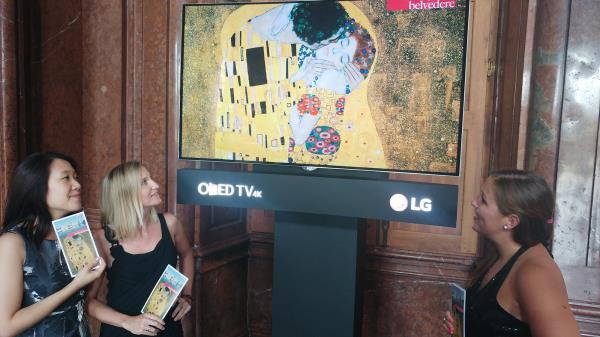
LG OLED 4K TV
강현주 / jjoo@olednet.com
LG전자는 오스트리아 빈에 위치한 벨베데레 왕궁( Schloss Belvedere )에 울트라 올레드 TV(모델명: 55EG920), LG 울트라 HD TV 등 총 16대의 4K TV 를 지난달 초 설치하고 오스트리아의 문화를 소개하고 있다.
지금까지 10만 명이 넘는 관람객이 왕실문화, 미술, 건축 등 오스트리아의 문화를 울트라 올레드 TV와 LG 울트라HD TV로 감상했다. 특히 왕궁 내의 마블 홀( Marble Hall )에 설치된 울트라 올레드 TV는 구스타프 클림트의 작품을 소개해 인기를 끌고 있다.
벨베데레 왕궁은 클림트 특유의 신비로운 황금색을 가장 잘 표현할 수 있는 디스플레이로 LG 올레드 TV를 선택했다. 왕궁 측은 매년 100만 명 이상이 올레드 TV로 클림트의 작품을 감상할 것으로 예상하고 있다.
클림트는 오스트리아 출신 화가로 화려한 색감, 모자이크 방식의 독특한 구성 등 기존 보수적인 미술계와 차별화된 작품세계를 구축했다. 특히 ‘키스(Kiss)’, ‘유디트(Judith)’ 등 그의 20세기 초 작품들은 실제로 금을 사용해 화려함의 절정을 보여준다.
올레드 TV는 백라이트가 없어 화소 하나하나가 빛을 내기 때문에 빛샘현상이 없어 현존하는 TV 중 자연색에 가장 가까운 색을 구현할 수 있다. 어느 각도에서 보더라도 색이 왜곡되지 않아 많은 관람객들이 한꺼번에 보더라도 같은 색을 볼 수 있다. 올레드만의 얇고 세련된 디자인은 왕궁의 품격에 어울린다는 평가를 받았다.
LG전자 김성수 오스트리아법인장은 “올레드 TV가 클림트의 작품을 눈앞에서 보는듯한 감동을 주게 될 것”이라며 “황금색채의 감동을 통해 올레드 TV의 진정한 가치를 전할 것”이라고 강조했다.
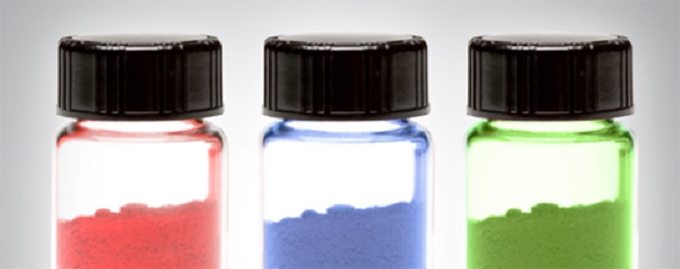
Source = UDC
강현주 / jjoo@olednet.com
OLED 재료 특허 최강자인 유니버셜디스플레이(UDC)가 2016년 상반기 재료 매출이 떨어졌음에도 큰 폭의 영업이익을 기록했다. 로열티와 라이선스 부문 매출이 증가한 게 이익 상승의 요인으로 분석된다.
4일(현지시간) UDC는 실적발표를 통해 상반기 미화 9,410만 달러의 매출과 3,670만 달러의 영업이익(operating income)을 냈다고 밝혔다. UDC는 전년동기 310만달러의 영업손실(operating loss)을 기록했는데 올해 상반기 영업이익이 큰 폭으로 개선됐다. 매출은 전년동기에 비해 5.4% 상승했다.
UDC는 올해 상반기 재료매출이 4,662만달러로 전년동기보다 약 9% 하락했다. 하지만 로열티와 라이선스 매출은 약 24.3% 상승해 영업이익 개선에 기여했다.
OLED 시장이 성장함에 따라 OLED 재료 시장도 커지고 있는 게 UDC의 실적성장으로 이어진 것으로 풀이된다. 유비산업리서치의 ‘2016 OLED Emitting Materials Annual Report’에 따르면 전세계 OLED 발광재료 시장은 2016년부터 OLED 발광재료 시장은 연평균 46%의 성장률을 그리며 2021년 43억2300만 달러(한화 약 4조 9250억 원) 규모에 달할 것으로 전망된다.
OLED 재료 시장은 수많은 특허가 적용되는 곳이기 때문에 광범위한 특허를 보유한 UDC의 입지가 크다. 실제로 UDC는 지난 2014년, 2015년 연속으로 OLED 발광재료 시장 매출 글로벌 1위에 올랐다. 이 회사는 최근 바스프의 OLED 인광재료 특허를 9,600만달러에 인수해 눈길을 끌기도 했다.
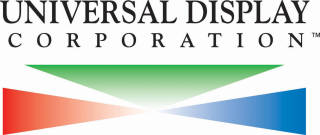
Source = UDC
Hyunjoo Kang / jjoo@olednet.com
Universal Display Corporation( UDC ), enabling energy-efficient displays and lighting with its UniversalPHOLED technology and materials, today announced the signing of an OLED Technology License Agreement and Supplemental Material Purchase Agreement with Tianma Micro-electronics Co. Ltd., a leading Chinese small-and medium-size display panel manufacturer. The agreements run for five years.
Tianma is a leading player in AM-OLED technology and series production capacity in domestic China . In late May, Tianma demonstrated its latest OLED advances with a number of display prototypes at Display Week 2016 International Symposium, Seminar and Exhibition. Tianma has a Gen 5.5 AM -OLED line in Shanghai , which started producing AM-OLED modules for intelligent mobile terminals to brand clients this year. Tianma is also increasing its OLED investments to ramp up capacity for commercial mass production.
“We are very pleased to enter into these license and supply agreements with Tianma Micro-electronics, an early OLED developer and key Chinese display maker,” said Steven V. Abramson , President and Chief Executive Officer of Universal Display . “Tianma has been at the forefront of OLED R&D in China for a number of years, and we look forward to working with Tianma to advance their commercial OLED product pipeline with our proprietary OLED technologies and materials. Around the world, we believe that OLED research, development and investment activities are gaining tremendous ground, as consumer demand for cutting-edge, fast-response, thin, energy-efficient displays continues to rise, in products such as smartphones, wearables, tablets and automotive.”
Under the license agreement, Universal Display , through its wholly-owned subsidiary UDC Ireland Limited , has granted Tianma Micro-electronics non-exclusive license rights under various patents owned or controlled by Universal Display to manufacture and sell OLED display products. Additionally, Universal Display will supply phosphorescent OLED materials to Tianma Micro-electronics for use in its licensed products.

Source = UDC
Hyunjoo Kang / jjoo@olednet.com
Universal Display Corporation( UDC ), enabling energy-efficient displays and lighting with its Universal PHOLED technology and materials, today reported financial results for the second quarter ended June 30, 2016.
For the second quarter of 2016, the Company reported net income of $21.8 million, or $0.46 per diluted share, on revenues of $64.4 million. This includes $1.8 million of currency exchange loss related to the BASF OLED patent acquisition. For the second quarter of 2015, the Company reported a net loss of $11.8 million, or $0.25 per diluted share, on revenues of $58.1 million. The 2015 net loss reflected a $33.0 million write-down of inventory, primarily of an existing host material and associated work-in-process. Excluding this item and its associated $1.9 million reduction of income tax expense, adjusted net income for the second quarter of 2015 was $19.4 million, or $0.41 per diluted share (see “reconciliation of non-GAAP Measures” below for further discussion of the non-GAAP measures included in this release).
“Our second quarter 2016 revenues and net income increased year-over-year, and we maintained our strong margin profile. We are confident that the underlying growth fundamentals of our long-term outlook remain robust, but near-term, we expect our revenue growth will be delayed by about six months,” said Sidney D. Rosenblatt, Executive Vice President and Chief Financial Officer of Universal Display.
Rosenblatt continued, “We expect strong revenue growth in 2017. At that time, new OLED production from the multi-year capital expenditure cycle is slated to start contributing to our revenues. Ahead of this wave of high-volume capacity, we have been working to expand and broaden our team and core competencies to advance our strategic initiatives and increase our competitive edge. We expect these initiatives, along with new OLED capacity, coupled with our pipeline of new materials, new technologies and new agreements, to bolster our long-term growth plan.”
Financial Highlights for the Second Quarter of 2016
The Company reported revenues of $64.4 million, compared to revenues of $58.1 million for the same quarter of 2015, an increase of 10.8%. Material sales were $22.3 million, down 8.3% compared to the second quarter of 2015, primarily due to a $2.0 million decline in host material sales. Royalty and license fees were $42.0 million, up from $33.7 million in the second quarter of 2015. The Company recognized $37.5 million in Samsung Display Co., Ltd. (SDC) licensing revenue in the second quarter of 2016, up from $30.0 million in the same quarter of 2015.
The Company reported operating income of $34.0 million in the second quarter of 2016, compared to an operating loss of $4.8 million for the second quarter of 2015. Excluding the inventory write-down of $33.0 million, adjusted operating income was $28.2 million for the second quarter of 2015. Operating expenses were $30.4 million, compared to $62.9 million in the second quarter of 2015 and cost of materials was $5.7 million, compared to $39.1 million in the second quarter of 2015, both of which included the inventory write-down of $33.0 million in the second quarter of 2015.
The Company’s balance sheet remained strong, with cash and cash equivalents and investments of $332.0 million as of June 30, 2016. During the second quarter, the Company added $96.0 million in intangible assets in the form of intellectual property purchases and certain other assets from BASF, increasing the portfolio to more than 4,100 issued and pending patents worldwide. During the second quarter, the Company generated $36.2 million in operating cash flow.
Financial Highlights for the First Six Months of 2016
The Company reported revenues of $94.1 million, compared to revenues of $89.3 million for the first half of 2015, or an increase of 5.4%. Material sales were $46.6 million, down 8.8% compared to $51.1 million in the first half of 2015, primarily due to a $7.0 million decline in host sales. Royalty and license fees were $47.4 million, up from $38.1 million in the first half of 2015.
The Company reported operating income of $36.7 million in the first half of 2016, compared to an operating loss of $3.1 million for the first half of 2015. Excluding the inventory write-down of $33.0 million, adjusted operating income was $30.0 million for 2015. For the first half of 2016, we reported net income of $23.8 million, or $0.51 per diluted share, compared to a net loss of $10.5 million, or $0.23 per diluted share, for the same period of 2015. Excluding the inventory write-down and the associated $1.9 million reduction of income tax expense, adjusted net income was $20.7 million, or $0.45 per diluted share, for the first half of 2015.
Operating cash flow for the first half of 2016 was $36.2 million, a decrease of 51.8% compared to $75.2 million for the first half of 2015 which included an upfront $42.0 million license and royalty payment.
2016 Guidance
While the OLED industry is still at a stage where many variables can have a material impact on its growth, based upon the most recent and best information on hand, the Company believes it is prudent to revise its 2016 revenues guidance. The Company now expects 2016 revenues to be in the range of $190 million to $200 million.
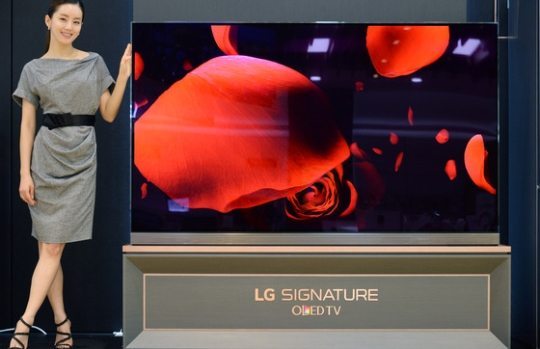
LG`s 77 inch OLED TV Picture Source = LG Elec.

LG전자가 최근 출시한 77인치의 OLED TV (출처=LG전자)
강현주 /jjoo@olednet.com
최근 LG전자가 77인치 OLED TV를 발표, 4,100만원이라는 출고가가 화제가 됐다. 가격에 대한 여론이 분분해 유사한 크기의 경쟁사 TV 가격 동향을 살펴봤다.
유비산업리서치의 시장 조사에 따르면 삼성전자의 78인치 SUHD TV 제품은 약 900만원~1,100만원대(아마존 최저가 기준)로 판매되고 있다. 지난 4월에 출시된 이 제품들은 퀀텀닷 필름을 부착한 LCD 패널이 탑재됐다.
LCD를 쓰는 소니 TV의 경우 올해 1월 출시된 75인치 제품이 7월말 기준 약 670만원, 85인치 제품이 약 900만원으로 삼성, LG의 제품보다 저렴한 편이다.
LG전자의 77 인치 OLED TV 제품의 실제 시장가격이 얼마일지 아직 정확히 알 수 없다. 일단 이 제품의 출고가인 4,100만원으로 비교한다면 삼성전자의 78인치 제품과 소니의 85인치 제품보다 4배가량 비싼 가격이다.
기존의 대형 OLED TV의 가격은 같은 크기의 LCD TV에 비해 대체로 2배 가까이 차이난다. 요즘 그 격차가 다소 좁혀지긴 했지만 이는 LG전자가 최근 OLED TV 가격 인하를 단행한 결과다. OLED TV가 비싼 건 사실이지만, 그래도 시장성이 없는 것은 아니다. 실제로 LG전자는 2016년 2분기 OLED TV 판매량이 전년동기에 비해 4배 늘었다고 컨퍼런스콜을 통해 발표했다.
하지만 LG전자의 이번 77인치 OLED TV는 LCD TV와의 가격차이가 2배보다 높은 약 4배라는 면에서 경쟁력이 떨어질 것이라는 의견도 있다.
이에 대해 유비산업리서치 이충훈 대표는 “크기가 커질수록 수율이 급격히 떨어지는 걸 감안하면 LG의 77인치 신제품 가격이 터무니 없는 정도는 아니다”라며 “수율 개선 등으로 가격도 떨어질 것이며 그동안의 TV 시장 추이를 볼 때 결국 시장가가 출고가에 비해 절반까지 떨어질 수 있다”고 내다봤다.
LG의 77인치 OLED TV의 가격도 4,100만원에서 향후 2,000만원정도로 내려갈 수 있으며, 비슷한 크기의 LCD TV와의 가격 격차가 결국 2배정도로 좁혀진다는 얘기다.
이충훈 대표는 “그동안 OLED TV가 LCD TV에 비해 가격이 2배가량 비싸도 나름 시장 입지를 다져왔다”고 설명했다.
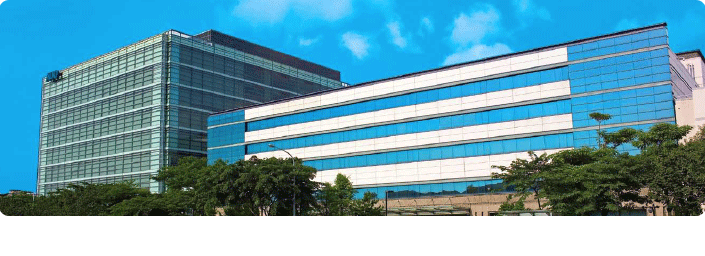
Taiwanese panel industry in recorded decreased small to medium size LCD panel shipment and increased shipment of 9 inch or bigger large size LCD panel. (Picture Source = AUO)
Hyunjoo Kang / jjoo@olednet.com
In Q2 2016, Taiwanese panel industry recorded decreased small to medium size LCD panel shipment and increased shipment of 9 inch or bigger large size panel.
According to DigiTimes, Taiwanese TFT-LCD panel companies shipped 58.38 million units of ≥ 9 inch panels in Q2 2016, an increase of 18.1% QoQ, and 0.8% increase YoY. The small to medium size panel shipment was 269.249 million units, a decrease of 0.5% QoQ, and 6.3% decrease YoY.
In terms of small to medium size, ≤ 9 inch, Chunghwa Picture Tubes (CPT) led the shipment volume with 100.56 million units, and HannStar Display followed with 67.892 million units in Q2. For LCD panels ≥ 9 inch, AUO led the Taiwanese market with Q2 shipment of 27.11 million units. Of these 7.176 million units are for TV, and the rest are for notebook, monitor, and tablet. Following AUO, Innolux recorded 27.09 million units of shipment. Of these 10.72 million units are for TV, and the rest are for notebook, monitor, and tablet.
According to companies’ recent Q2 performance announcement, key Taiwanese LCD companies, including AUO and Innolux, reported decreased business profit. AUO reported TWD 80,000 million in Q2 sales, a 13% fall YoY, and TWD 116 million in business profit, approximately 98% decrease YoY. Innolux showed TWD 66,800 million in Q2 sales, decrease of approximately 29%, and business loss of TWD 3,039 million.

Samsung Elec. unveils Galaxy Note 7
Hyunjoo Kang / jjoo@olednet.com
Samsung Electronics continues to drive the smartphone market with the Galaxy Note7 by building on the company’s category-defining leadership with innovative features that set a new standard for large-screen devices. With refined craftsmanship, premium materials and a unique, symmetrical edge design, the Galaxy Note7 features:
The Galaxy Note7 strikes a balance between work and play, enabling people to achieve more than what they thought possible on a smartphone.
“The Galaxy Note7 combines productivity and entertainment, and strong security features. Powering a robust ecosystem, it is the ideal device for those who want to achieve more in life,” said DJ Koh, President of Mobile Communications Business, Samsung Electronics. “Life moves faster than ever now so we created the Galaxy Note7 to move with users – helping them get things done more easily wherever, whenever.”
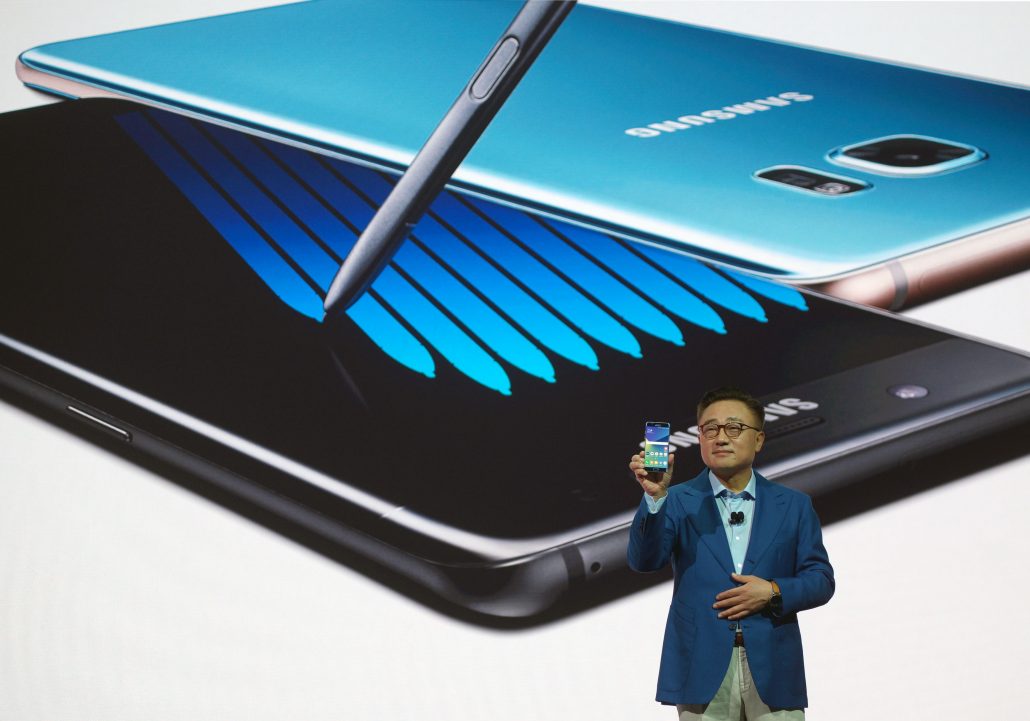
삼성전자가 Galaxy Note 7 을 공개했다.
강현주 / jjoo@olednet.com
삼성전자가 2일(현지시간) 미국 뉴욕에서 ‘삼성 갤럭시 언팩’ 행사를 열고 ‘갤럭시 노트7( Galaxy Note 7 )’을 공개했다.
‘갤럭시 노트7’은 시리즈의 6번째이지만, 숫자 ‘6’를 건너뛰고 최종 ‘7’으로 제품명을 정했는데, 이는 상반기에 출시된 ‘갤럭시 S7’과 숫자를 통일해 보다 쉽고 일관성 있게 고객들과 커뮤니케이션 하기 위해서다.
‘갤럭시 노트7’은 노트 시리즈 최초로 IP68의 방수ㆍ방진 기능을 제공하고, 개선된 S펜(Pen)을 탑재했다.
삼성전자 스마트폰 최초로 ‘홍채인식’ 기능을 탑재해, ‘삼성 녹스(Knox)’와 생체인식을 결합하는 업계 최고 수준의 보안 솔루션을 제공한다.
특히 홍채 인식을 이용해 로그인이나 인증 서비스가 가능한 ‘삼성패스’ 기능이 탑재돼 편리한 모바일 뱅킹 서비스도 지원된다.
개인의 데이터, 애플리케이션을 분리된 공간에서 관리할 수 있는 ‘보안 폴더’ 기능을 통해 일상에서 스마트폰을 보다 안심하고 사용할 수 있다.
노트 시리즈 최초로 전면 엣지 디스플레이를 채용함과 동시에 상하좌우와 전후면 모두 대칭을 이루는 엣지 디자인을 적용하고, 대 화면임에도 한 손으로 편안하게 사용할 수 있는 최적의 그립감을 제공한다.
‘갤럭시 노트7’은 HDR(High Dynamic Range) 비디오 스트리밍을 지원해 최고의 엔터테인먼트 경험을 제공할 예정이다. Always On Display도 애플리케이션 알림, 뮤직 컨트롤 등 기능이 대폭 강화됐다.
함께 새롭게 출시되는 ‘기어 VR’은 시야각을 개선하고 제품 외부에 USB 타입-C 포트도 탑재해 외부기기 연결도 가능해졌다.
소비자들은 이와 같은 ‘갤럭시 노트7’의 혁신적이고 다양한 기능들을 통해 그 동안 스마트폰에 기대했던 사용성을 모두 경험할 수 있다.
삼성전자 무선사업부장 고동진 사장은 “삼성전자는 대 화면과 S펜을 채용한 갤럭시 노트 시리즈를 통해 스마트폰 시장에 새로운 기준을 제시하고 패블릿 카테고리를 선도해 왔다”며 “이번에 새롭게 선보이는 갤럭시 노트7은 패블릿 시장에서의 독보적 지위를 다시 한번 확인하고 소비자들에게 보다 혁신적인 사용성을 제공할 것”이라고 말했다.

대만 LCD 패널 업체들이 2분기 실적을 발표했다. (사진 출처 = AUO)
강현주 / jjoo@olednet.com
2016년 2분기 대만 패널 업계에서는 중소형 LCD 패널 출하량이 줄고 9인치 이상 대형 패널의 출하량은 늘어난 것으로 나타났다.
디지타임스에 따르면 지난 2분기 대만 TFT-LCD 패널 업체들은 9인치 이상의 패널을 5,838만대 출하했다. 이는 전분기 대비 18.1%, 전년동기 대비 0.8% 늘어난 수치다.
2분기 대만 패널 업체들의 중소형 패널 출하량은 2억6,924만9천대로 1분기보다 0.5% 줄었으며 지난해 2분기보다 6.3% 줄었다.
9인치 이하 중소형 부문에서는 청화 픽처 튜브스(CPT)가 1억56만대로 출하량 1위를 차지했으며 한스타디스플레이(HannStar Display)가 6,789만2천대로 뒤를 잇는다.
2분기 9인치 이상 시장에서는 AU Optronics (AUO)는 2분기 2,711만대의 패널을 출하해 대만 1위에 올랐다. 그 중 717만6천대가 TV용이며 나머지는 노트북, 모니터, 태블릿용이다. 2위인 이노룩스는 2,709만대의 패널을 출하했으며 TV용이 1,072만대며 나머지가 노트북, 모니터, 태블릿용이다.
최근 각 업체들의 2분기 실적발표들에 따르면 AUO, 이노룩스 등 대만 주요 LCD 패널 업체들은 영업이익이 하락한 것으로 나타났다.
AUO는 2016년 2분기 전년동기에 비해 약 13% 줄어든 800억 대만달러의 매출을 기록했으며, 영업이익은 1억1,600만 대만달러로 전년동기 대비 약 98% 하락했다.
이노룩스는 2분기 매출이 약 29% 줄어든 668억 대만달러를 기록했으며 30억3,900만 대만달러의 영업손실을 기록했다.

16th IMID Industrial Forum

UBI Research가 KIDS와 함께 ’16th 인더스트리얼 포럼 IMID ‘ 를 개최한다.
TV와 스마트폰 시장에 활력을 불어 넣으며 차세대 디스플레이로 각광 받아 온 OLED가 VR / AR, 자동차, 조명 등 다양한 산업으로 뻗어 나가며 무궁무진한 잠재력을 보여주고 있다.
OLED가 가져다 줄 신세계가 TV와 모바일을 넘어 어떤 산업에서 어떻게 구현될지, 업계 종사자들은 어떤 대응이 필요할지 인사이트를 제공하는 정보 공유의 장이 열린다.
유비산업리서치는 한국정보디스플레이학회(KIDS)와 함께 오는 8월 23일부터 24일까지 제주도에 위치한 제주 ICC에서 ‘16th IMID 인더스트리얼 포럼’을 개최한다.
이번 포럼에서는 저명한 업계인들이 연사로 나서 다양한 산업에서의 OLED의 잠재력과 전망에 대한 정보를 전달할 예정이다.
삼성전자에서 AR/VR 연구를 이끌고 있는 김도균 부사장은 ‘VR/AR를 통한 향후 디스플레이 산업에서의 성장(가제)’이라는 제목으로 연설에 나선다. 이 자리에서 김 부사장은 VR/AR 산업의 성장이 디스플레이 시장에 가져다 줄 기회들을 살필 계획이다.
LG디스플레이의 오토모티브 세일즈 & 마케팅 부문의 안상현 부장은 ‘자동차 디스플레이의 플라스틱 OLED의 전망과 애플리케이션’이라는 제목의 연설을 통해 OLED의 새시장으로 각광 받는 자동차 디스플레이 시장에 대한 동향과 전망을 공유한다.
또 소니, E-잉크, 오로라 라이팅 디자인, 알프스전기 등 다양한 업체의 저명한 연사들이 OLED 시장의 무궁무진한 기회들에 대한 인사이트를 전달할 예정이다.
이 포럼을 개최하는 유비산업리서치의 이충훈 대표도 OLED로 인해 변화하는 시장에서 새로운 기회를 잡기위한 유용한 지침을 전달한다.
이번 ‘16th IMID 인더스트리얼 포럼’에 대한 더 자세한 정보는 유비산업리서치 홈페이지를 통해 찾아볼 수 있다.

Source = LG Elec.
Hyunjoo Kang / jjoo@olednet.com

출처 = LG Elec.
강현주 / jjoo@olednet.com
LG전자가 OLED TV 판매 확대에 힘입어 2분기 영업이익이 약 140% 상승했다.
LG전자는 지난 2분기 연결매출 14조 29억 원, 연결영업이익 5,846억 원을 기록했다고 발표했다. 매출액은 생활가전 판매호조 영향으로 전년 동기(13조 9,257억 원) 대비 0.6% 증가했고, 영업이익은 생활가전 및 TV 부문의 수익성이 지속 개선되면서 전년 동기(2,441억 원) 대비 139.5% 증가했다.
이 회사는 2분기 경기침체 등의 영향으로 TV 출하량이 감소했음에도 손익이 개선됐다. 이는 프리미엄 TV 판매 수량 및 매출의 증가에 힘입은 것이다. OLED TV와 울트라 HD TV 판매 확대와 원가구조 개선이 이뤄졌다는 게 LG전자의 설명이다.
이 회사는 3분기에도 TV 시장 정체가 지속됨에도 OLED TV 같은 프리미엄 제품에 대한 수요는 확대될 것으로 보고 견조한 수익성을 유지할 것으로 기대하고 있다.
H&A사업본부와 HE사업본부는 분기 사상 최대 영업이익을 달성했다. 특히 HE사업본부는 분기 사상 최고 영업이익률도 기록했다.
H&A사업본부 매출액은 트윈워시 세탁기, 얼음정수기 냉장고 등 프리미엄 제품 판매 호조와 시스템 에어컨 등 B2B 사업 성장에 힘입어 전년 동기 대비 4.8% 증가했다. 영업이익은 지속적인 원가경쟁력 개선 및 ‘ LG SIGNATURE( LG 시그니처 )’ 등 프리미엄 제품 판매 비중 확대로 전년 동기 대비 48.6% 증가했다. 특히 전 분기(9.7%)에 이어 2분기 연속 9%대 영업이익률(9.2%)을 달성했다.
MC사업본부 매출액은 G5의 초기 공급차질로 긍정적인 시장 반응을 매출 확대로 이어가지 못하며 전년 동기 대비 6.2% 감소, 전 분기 대비 12.2% 증가에 그쳤다. 또한, 마케팅 비용 상승 등으로 영업손실이 이어졌다.
HE사업본부 매출액은 전년 동기 대비로는 5.7% 증가했으나 중동, 아프리카 등 성장시장 경기침체 지속으로 전분기 대비 4.1% 감소했다.
영업이익은 올레드 TV, 울트라HD TV 등 프리미엄 제품 판매 확대 및 원가경쟁력 개선으로 분기 사상 최대 영업이익과 최고 영업이익률(8.6%)을 동시에 달성했다.
VC사업본부 매출액은 AVN(Audio Video Navigation), 텔레매틱스(Telematics) 등 차량용 인포테인먼트 주력거래선 매출 확대로 전년 동기 대비 41.9%, 전 분기 대비 7.9% 증가했다.
VC사업본부는 전기차용 부품 및 인포테인먼트 기기 등 미래 성장을 위한 자원 투입 증가로 영업손실을 기록했다.
가전 시장은 에어컨의 계절적 비수기 진입 등 성장세 둔화가 예상된다. H&A사업본부는 일반 가전 분야에서는 초프리미엄 브랜드 ‘LG 시그니처’를 필두로 트윈워시 세탁기, 스타일러 등 시장 선도 제품 판매에 집중한다. 빌트인 주방가전 ‘시그니처 키친 스위트’ 등 B2B 사업도 강화한다.
스마트폰 시장은 경쟁사들의 주력 제품 출시로 프리미엄 시장 내 경쟁이 더욱 심화될 것으로 예상된다. MC사업본부는 V시리즈 후속 제품을 출시하고 K시리즈, X시리즈 등 보급형 제품의 출시 국가를 확대한다. 또 현재 상황 극복을 위한 수익 구조 개선 활동도 지속 추진한다.
TV 시장 정체는 지속될 것으로 전망되나 프리미엄 제품에 대한 수요는 확대될 것으로 예상된다. HE사업본부는 올레드 TV, 울트라HD TV 등 프리미엄 제품 판매 비중 확대로 수익성 유지에 주력한다.
전기차 시장 성장 및 전장 부품 시장의 고급화에 힘입어 자동차 부품 사업기회가 확대될 것으로 전망된다. VC사업본부는 8월 말로 예정된 GM ‘쉐보레 볼트 EV(Chevrolet Bolt EV)’ 부품 본격 양산을 통해 전기차 부품 시장 선도 이미지를 구축할 계획이다.
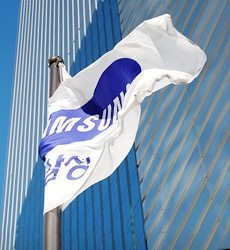
Source = Samsung
Samsung Electronics today announced financial results for the second quarter ended June 30, 2016. Samsung’s revenue for the quarter was KRW 50.94 trillion, an increase of KRW 2.40 trillion YOY, while operating profit for the quarter was KRW 8.14 trillion, an increase of KRW 1.24 trillion YOY.
The second quarter saw significant earnings growth led by strong performance both in the set and component businesses. Overall earnings of the set business improved YOY as well as QOQ due to the continuous sales increase of premium products.
The IT & Mobile Communications (IM) Division saw substantial earnings improvement led by expanded sales of flagship products such as the Galaxy S7 and S7 edge. A streamlined mid-to low-end smartphone lineup also contributed to improved profitability. Operating profit for the IM Division was KRW 4.32 trillion.
The Consumer Electronics (CE) Division achieved significant earnings growth YOY led by strong sales of its premium lineup such as SUHD TVs, Chef Collection Refrigerator, AddWash washer and newly launched air conditioner.
The component business achieved solid performance although overall earnings decreased YOY due to ASP declines in the industry. Earnings for the Display Panel segment improved QOQ led by increased OLED capacity utilization and stabilized LCD panel yields. Demand for semiconductors for mobile and SSD increased and the company achieved solid growth with a competitive edge in differentiated products, including 20-nanometer DRAM, V-NAND and 14-nanometer mobile AP.
The company estimated that the stronger Korean won against major currencies in the second quarter negatively impacted operating profit by approximately KRW 0.3 trillion, reflected mainly in the component business earnings.
Looking ahead to the second half of 2016, the company expects its solid performance to continue compared to the first half, mainly driven by earnings increase in the component business due to sales growth in high value-added products and stable demand and supply conditions. The set business is expected to continue its stable earnings while the IM Division expects marketing expenditure to increase.
In the third quarter, the company expects the component business to maintain its solid performance due to improved demand and supply conditions for memory chips and LCD panels and stable earnings for OLED and System LSI. For the set business, the company forecasts marketing expenditure for the IM business to increase mainly due to a new flagship product launch and fierce competition in the industry. Meanwhile, weak seasonality is likely to impact the CE business.
Capital expenditure (CAPEX) for the second quarter was KRW 4.2 trillion, which includes KRW 2 trillion for the Semiconductor business and KRW 1.6 trillion for the Display Panel business. The accumulated total CAPEX for the first half was KRW 8.8 trillion.
The annual plan for CAPEX has not yet been confirmed but is projected to increase slightly compared to last year. This year’s CAPEX will be concentrated on OLED and V-NAND capacity as the company sees strong market demand for OLED panels for smartphones and V-NAND SSD.
The Semiconductor business posted KRW 12 trillion in consolidated revenue and KRW 2.64 trillion in operating profit for the quarter.
The memory business enjoyed solid growth in demand in the second quarter. Orders for high-density NAND and DRAM products contributed to solid earnings QOQ. This was coupled by a reduction in cost from continuous process migration.
In NAND, shipments of SSD remained strong in the quarter, as enterprise companies increasingly made the transition from HDD to SSD so as to reduce total cost of ownership (TCO). Orders for high-density mobile storage products over 32GB also helped drive sales, mainly due to the expanded adoption by Chinese companies. Samsung actively responded to orders for high-density mobile products over 64GB and enterprise SSD over 4TB and increased supply of the industry’s first 48-layer V-NAND.
In DRAM, demand climbed QOQ as smartphone manufacturers bought more high-density mobile DRAM and demand for high-density products increased following the launch of a new server platform.
A supply imbalance of some applications led to greater demand for Samsung’s 20-nanometer high-density, high value-added mobile and server products.
Looking ahead, for NAND, increased adoption of high-density products and strong seasonality will further drive demand growth in the second half. Growth in high-density, premium SSD products will continue, and the launch of new products by smartphone manufacturers is expected to raise demand for mobile storage. However, supply and demand will be tighter in the second half, due to soft industry supply growth.
For DRAM, the launch of new smartphones and the increasing adoption of 6GB memory chips in high-end smartphones will spur shipments of mobile DRAM in the second half. Shipments of high-density server products will be strong, as more data centers make the transition to a new server platform.
The System LSI business saw gains QOQ, thanks to stronger demand for 14-nanometer mobile AP in premium smartphones and increased sales of high megapixel image sensors. In the second half, increased sales of mid- to low-end mobile AP and LSI products are expected to provide a stable revenue stream.
The Display Panel segment posted KRW 6.42 trillion in consolidated revenue and KRW 0.14 trillion in operating profit for the quarter driven by increased shipments of OLED panels and enhanced yields for new LCD TV panel production technology.
For the OLED business, second quarter earnings improved QOQ due to healthy sales of flagship smartphones and increased demand for flexible panels. High fab utilization rates with the help of an expanded mid to low-end product portfolio also contributed to improved earnings.
For the LCD business, the second quarter saw a continuation of QOQ growth under a gradual recovery in the supply-demand balance. The company was able to achieve growth thanks to improved yields for new TV panel production technology as well as expanded TV sales particularly for large-sized UHD panels.
Looking ahead to the second half, the OLED business, Samsung expects demand for OLED panels to rise despite a likely slowdown in the smartphone market. To remain competitive, the company plans to actively address customer demand and reinforce profitability by expanding the proportion of high value-added products such as flexible and high-resolution displays. Samsung will also seek to secure supply capacity according to market demand while expanding its customer base and new applications.
As for the second-half outlook for the LCD industry, Samsung expects supply and demand to improve thanks to increased demand under strong seasonality as well as continuous UHD TV market growth and size migration towards larger screens. In response, the company will focus on enhancing profitability by improving cost competitiveness and expanding its portfolio to high value-added products including ultra-large size, high-resolution and curved panels.
The IM Division posted KRW 26.56 trillion in consolidated revenue and KRW 4.32 trillion in operating profit for the quarter.
Samsung’s earnings improved QOQ thanks to strong sales of its flagship Galaxy S7 and S7 edge smartphones. Additionally the company achieved growth in the second quarter by maintaining the profitability of mid- to low-end models, such as the Galaxy A and J series, and improving the product mix by raising the sales proportion of the Galaxy S7 edge to over 50 percent.
Demand for smartphones and tablets in the second half is forecast to increase, however, market competition is expected to strengthen as other companies release new mobile devices. Despite this outlook, Samsung will focus on YOY earnings increase by strengthening its high-end line-up and maintaining solid profitability of mid to low-end products.
Looking into the third quarter, the release of a new large-screen flagship smartphone will help to maintain solid sales of high-end smartphones led by the Galaxy S7 and S7 edge. Samsung will also focus on expanding smartphone sales including this year’s new Galaxy A and J series and the debut of the Galaxy C series exclusively for the China market.
Samsung will focus on increasing smartphone sales under strong seasonality with the launch of a new model, while expecting marketing expenses to increase QOQ due to seasonality.
As for the Networks business, earnings improved due to increased LTE investment of major carriers in the second quarter.
The Consumer Electronics Division – encompassing the Visual Display (VD), Digital Appliances (DA), Printing Solutions and Health & Medical Equipment (HME) businesses – posted KRW 11.55 trillion in consolidated revenue and KRW 1.03 trillion in operating profit for the quarter.
In the second quarter, global TV demand remained flat YOY due to sluggish economic conditions in major emerging markets that offset the growth experienced in developed markets. Amid these challenging conditions, Samsung achieved solid YOY earnings by successfully launching new products, including SUHD TVs, and increasing sales of premium products on the back of global sporting events.
For the appliances business in the second quarter, although growth momentum continued in North America, global demand declined YOY due to slower growth in China and the impact from the economic slowdown in emerging markets. Despite these circumstances, earnings improved from the same period of the previous year thanks to increased sales of premium products such as the Chef Collection refrigerator and the AddWash and activ dualwash™ washing machines.
Looking ahead to the second half, TV demand is expected to decline YOY due to weakened demand in Europe and a prolonged economic slowdown in emerging markets. In response, Samsung will focus on improving profitability and increasing sales through collaborations with local channel partners and through region-specific promotions. To reinforce its leadership in the premium TV segment, the company will also seek to grow sales of its premium SUHD TV line-up, particularly products featuring its Quantum Dot technology.
Concerning the outlook for appliances in the second half, market growth is expected to be limited due to the aforementioned concerns in Europe and emerging markets. Despite these conditions, Samsung will actively seek opportunities to counter the challenging market dynamics by launching innovative products that offer superior consumer experiences. The company also plans to achieve further growth by enhancing its B2B business in this sector, particularly for built-in kitchens and system air conditioners.

Samsung Elec.이 2분기 실적을 발표했다. ( 출처 = Samsung )
삼성전자( Samsung Elec. )가 2016년 2분기에 연결기준으로 매출 50.94조원, 영업이익 8.14조원의 실적을 기록했다고 28일 발표했다.
매출은 전년 동기 48.54조원 대비해 5% 증가했고, 영업이익은 전년 동기 6.9조원 대비 18% 늘었다. 전 분기에 비하면 매출은 2% 증가했으며, 영업이익은 22% 늘었다.
세트사업은 전년 동기는 물론 전 분기 대비해 실적이 대폭 개선되면서 완연한 회복세를 기록했다. IM은 갤럭시 S7과 S7 엣지 판매 호조가 실적 개선을 견인했다.
CE는 SUHD TV, 셰프컬렉션 냉장고, 무풍 에어컨, 애드워시/액티브워시 세탁기 등 프리미엄 제품 판매 호조로 인해 실적이 큰 폭으로 늘었다.
부품사업은 전반적인 부품가격 하락 등의 요인으로 전년 동기 대비 실적이 감소했지만 전분기 대비해서는 실적이 개선됐다.
반도체는 모바일과 SSD를 중심으로 수요가 증가한 가운데, 20나노 D램과 V-낸드, 14나노 모바일 AP 등의 차별화된 제품 경쟁력을 통해 견조한 실적을 달성했다.
디스플레이는 LCD 수율이 안정화되고 OLED 가동률도 증가하면서 실적이 흑자 전환됐다.
2분기에는 원화가 달러, 유로화 등 주요 통화에 비해 강세를 보이면서 부품 사업을 중심으로 전분기 대비 약 3천억원 수준의 부정적 환영향이 발생했다. 하반기에는 견조한 실적이 지속될 것으로 전망된다.
부품사업은 수급 안정화 속에 고부가 제품 판매 확대로 상반기 대비 실적이 개선될 것으로 기대된다.
세트사업은 신제품 출시 확대 등으로 마케팅비용 증가가 예상되나, 전년 대비 실적 성장세를 지속할 것으로 전망된다.
특히, 3분기는 부품사업이 메모리와 LCD의 수급이 개선되는 가운데 OLED 실적이 견조한 추세를 유지할 것으로 전망되며, 세트사업은 CE가 비수기 영향을 받는 가운데, IM이 신제품 출시와 시장 경쟁 심화로 인해 마케팅비가 증가할 것으로 예상된다.
2분기 시설투자는 4.2조원 이었으며, 사업별로는 반도체에 2.0조원, 디스플레이에 1.6조원 규모이다. 상반기 누계로는 8.8조원이 집행됐다.
2016년 전체 시설투자 계획은 아직 확정되지 않았지만, 전년 대비 소폭 증가할 것으로 예상된다. 내년에는 스마트폰용 OLED 패널과 V-낸드 SSD 수요가 대폭 증가할 것으로 예상되는 가운데, 올해 투자는 OLED와 V-낸드 증설에 집중될 것으로 보인다.
2분기 반도체는 메모리와 시스템LSI 모두 견조한 실적을 달성하며 매출 12조원, 영업이익 2.64조원을 기록했다.
2분기 메모리 시장은 모바일과 SSD를 중심으로 수요가 증가한 가운데 삼성전자는 지속적인 공정전환에 따른 원가절감으로 전분기에 이어 견조한 실적을 달성했다.
낸드의 경우 서버용 고용량 SSD에 대한 수요 강세 지속과 중화권 모바일 업체들의 고용량 스토리지 수요 증가에 대응하는 한편, 48단 V-낸드 공급 확대로 실적을 개선했다.
D램은 모바일과 서버용 20나노 제품 판매증가로 견조한 실적을 달성했다.
하반기 메모리 반도체 시장은 전 응용처의 고용량화 추세가 지속되면서 업황이 더욱 안정화 될 것으로 예상되는 가운데, 삼성전자는 고용량 프리미엄 제품 경쟁력을 강화해 실적 개선을 이어갈 계획이다.
낸드는 서버, 모바일 응용처에서 고용량 제품 수요가 증가하면서 수급이 지속 개선될 것으로 예상된다. 삼성전자는 업계 유일의 48단 V-낸드 공급을 확대해 수익성을 더욱 높여나갈 계획이다.
D램도 견조한 시장 수요가 지속될 것으로 예상되며, 공정 성숙화가 완료된 20나노 공정을 기반으로 고부가 솔루션 공급을 확대해 나갈 계획이다.
시스템LSI 사업은 프리미엄 스마트폰에 탑재된 14나노 모바일 AP의 수요 호조와 1300만 이상의 고화소 이미지센서 판매 확대로 전분기 대비 실적이 개선됐다. 그간 추진해온 파운드리 고객 다변화와 중저가 모바일 AP 라인업 강화 전략의 성과이다.
하반기에도 삼성전자는 14나노 이하 첨단공정 기술 리더십을 유지하고 거래선과 제품을 다변화해 매출 견조세를 지속해 나갈 예정이다.
□ 디스플레이 패널(Display Panel)
2분기 디스플레이 사업은 매출 6.42조원, 영업이익 0.14조원을 기록했다. 2분기는 OLED의 판매 확대, LCD 신공법 수율 개선과 대형 TV향 패널 판매 증가로 전분기 대비 실적이 개선됐다.
하반기에도 디스플레이 사업은 실적 개선을 이어갈 것으로 전망된다. OLED의 경우 시장 수요가 증가할 것으로 예상되는 가운데 플렉서블, 고해상도 등 고부가 패널 판매 확대를 통해 실적 개선을 이어가고, LCD의 경우 수급 개선 속에서 UHD와 초대형 등 고부가 패널 판매 확대를 통해 실적을 향상시킬 예정이다.
특히 OLED 패널의 경우 선제적 투자와 기술 개발을 통해 시장을 개척해왔으며, 플렉서블 양산을 통해 기술적으로 한 단계 도약하며 시장을 더욱 확대시켜 왔다. 향후에도 외부 고객 판매를 확대하고 혁신 제품 개발도 지속해 나갈 계획이다.
□ IM (IT & Mobile Communications)
2분기 IM 부문은 매출 26.56조원, 영업이익 4.32조원을 기록했다.
2분기 무선 사업은 갤럭시 S7과 S7 엣지의 판매 호조에 힘입어 전분기 대비 실적이 증가했다.
특히 갤럭시 S7 제품군 중 엣지 판매 비중이 50%를 상회한 점과 모델 효율화를 통해 갤럭시 A/J 시리즈와 같은 중저가 스마트폰의 수익성이 전분기 수준을 유지한 점이 실적 개선에 도움이 됐다.
Samsung Elec. 이 지난해부터 본격 추진해온 모델 효율화와 지속적인 제품 경쟁력 강화 노력이 올해초부터 효과가 가시화 되면서 2분기 연속 전년 대비 개선된 실적 흐름을 보여주고 있다.
성수기인 하반기는 스마트폰과 태블릿 수요가 성장할 것으로 전망되지만 시장 경쟁도 더욱 치열해질 것으로 보인다.
Samsung Elec. 은 하반기에도 프리미엄 모델의 견조한 판매세를 유지하고 지속적인 라인업 효율화를 통해 전년 동기 대비 실적 개선 추세가 이어질 수 있도록 노력할 계획이다.
한편, 3분기는 성수기 진입으로 스마트폰과 태블릿 수요가 전분기 대비 성장할 것으로 전망된다.
삼성전자는 대화면 플래그십 모델 출시, 갤럭시 S7과 S7 엣지의 지속 판매를 통해 프리미엄 스마트폰의 판매 호조를 유지하고, 중저가 스마트폰의 판매 확대와 중국 특화모델 갤럭시 C시리즈 판매 본격화로 전분기 대비 스마트폰 판매량을 늘릴 계획이다.
다만, 계절적 성수기에 따른 경쟁심화와 마케팅 비용 증가 등이 이익에 다소 영향을 미칠 것으로 전망된다.
네트워크 사업은 주요 거래선의 LTE 투자 확대로 2분기 실적이 개선됐으며, 3분기에도 LTE 증설 사업 수주 등을 통해 매출 확대를 적극 추진할 예정이다.
□ CE (Consumer Electronics)
2분기 CE 부문은 매출 11.55조원, 영업이익 1.03조원을 기록했다. TV와 생활가전 모두 전년 대비 실적이 개선됐다.
TV의 경우 신제품 본격 출시와 글로벌 스포츠 이벤트 특수 효과로 SUHD TV와 커브드 TV 등 프리미엄 제품 판매가 확대됐다.
생활가전 역시 셰프컬렉션 냉장고, 무풍 에어컨, 에드워시/액티브워시 세탁기와 같은 프리미엄 제품 판매가 실적을 견인했다.
삼성전자는 다양한 소비자 니즈를 반영한 혁신 제품 개발에 주력하고, 고객 접점에서 효과적인 마케팅 등의 노력을 통해 전제품에서 꾸준한 실적 성장세를 이어가고 있다.
하반기 CE 제품 시장은 구주와 성장시장의 소비심리 위축과 경기 침체 지속으로 시장 수요는 둔화될 것으로 예상된다.
삼성전자는 TV의 경우 퀀텀닷 기술을 강조한 SUHD TV 마케팅 강화와 거래선과의 프로모션 기획을 통해 전년대비 매출 성장과 수익성 개선을 추진할 방침이다.
생활가전은 새로운 경험을 제공하는 혁신제품 출시를 확대하고 B2B 사업도 강화해 지속 성장을 추진할 계획이다.
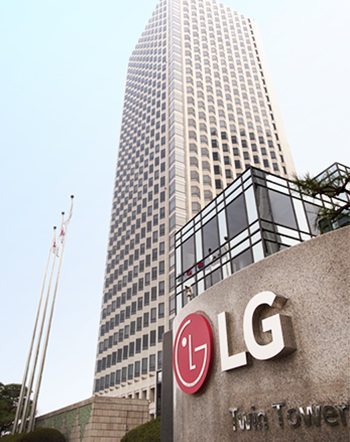
Source = LGD
Hyunjoo Kang / jjoo@olednet.com
LG Display ( LGD ) reported today unaudited earnings results based on consolidated K-IFRS (International Financial Reporting Standards) for the three-month period ending June 30, 2016.
LGD announced its seventeenth straight quarterly operating profit at KRW 44 billion, which resulted from a thorough and profit-focused management based on differentiated technologies in response to difficult market conditions caused by continuing falls in panel prices and the aggressive expansion of LCD production capacity by Chinese panel makers.
To deal with the difficult market situation, LGD increased profitability by expanding the production share devoted to large-size panels of 60-inches and above as well as premium TV panels embedded with HDR(High Dynamic Range) technology, while continuously leading the Ultra HD TV panel market for 40-inches and above based on its differentiated M+ technology. The company also maximized production efficiency over all its business areas by improving the manufacturing process and producing profit-focused products.
Panels for TVs accounted for 39% of the revenue in the second quarter of 2016, tablets and notebook PCs for 18%, mobile devices for 27%, and desktop monitors for 16%.
With 83% in the liability-to-equity ratio, 145% in the current ratio, and 19.6% in the net debt-to-equity ratio as of March 31, 2016, the financial structure of the company remains stable.
LG Display will continue to make efforts to improve profitability by focusing on premium products including large-size Ultra HD TV displays based on its M+ technology and IPS In-Touch displays in the second half of the year, while driving expansion of the OLED market and its customer base.
As for large-size OLED TV panel, the company will increase cost competitiveness through further stabilizing production and improving the manufacturing process of Ultra HD products, while continuing promotion with customers to strengthen the premium positioning of OLED TV. It will also establish a competitive edge through timely investments in cutting-edge technologies for the future including flexible OLED displays.
Mr. Don Kim, CFO of LG Display, said “Display area shipments in the third quarter are expected to increase by a mid-single digit percentage compared to the second quarter due to seasonal factors and the growing trends towards large-size panels. Overall profitability in the second half of the year is expected to further improve due to stabilized panel prices.” He also added, “LG Display will put its best efforts to create differentiated value in terms of profitability, while preparing for future growth even under difficult market conditions.”

Source = LGD
강현주 / jjoo@olednet.com
LG디스플레이(대표이사 부회장 한상범, 韓相範 / www.lgdisplay.com)는 한국채택 국제회계(K-IFRS) 기준, 2016년 2분기 5조 8,551억원의 매출과 영입이익 444억원을 달성했다고 27일 발표했다. 매출은 전분기 대비 2% 감소했으나 영업이익은 전분기 대비 12% 증가했다. 전년동기에 비해서는 매출 13% 감소, 영업이익 91% 감소했다.
LG디스플레이는 어려운 상황 속에서도 수익성 위주의 차별화 전략을 통해 17 분기 연속 영업이익 흑자를 달성했다고 강조했다.
LG디스플레이는 중국업체들의 공격적인 LCD생산확대와 지속적인 패널가격 하락 속에서도 영업흑자를 달성할 수 있었던 것은 차별화된 기술경쟁력을 바탕으로 철저한 수익성 위주의 경영을 했기 때문이라고 설명했다.
특히 LG디스플레이는 차별화된 M+기술을 바탕으로 40인치 이상의 UHD 시장을 선도하면서 HDR기술이 탑재된 60인치 이상의 초대형, 프리미엄 TV패널 비중을 적극 확대하며 수익성을 높였다. 모바일의 경우 비수기임에도 중국고객의 물량 확대 및 ‘IPS 인터치(in-TOUCH)’ 기술을 탑재한 제품 출하 증대로 매출비중이 전분기보다 4%포인트 증가했다. 또 지속적인 공정개선과 수익성 중심의 제품 생산을 통해 사업 전분야에 걸쳐 생산효율성을 극대화했다.
LG디스플레이의 주요 재무지표를 보면, EBITDA는 8,327억원이며, 부채비율과 순차입금 비율은 각각 83%와 19.6%로 전분기 대비 소폭 상승하였으나 안정적인 재무구조를 유지하고 있다.
2016년 2분기 매출액 기준 제품별 판매 비중은 TV용 패널이 39%, 모바일용 패널이 27%, 노트북 및 태블릿 PC용 패널이 18%, 모니터용 패널이 16%를 차지했다.
한편, LG디스플레이는 하반기에 대형, UHD, ‘IPS 인터치(in-TOUCH)’ 등 프리미엄 제품 비중을 증대하면서 동시에 OLED 시장 및 고객 확대에 전력을 기울일 방침이다.
대형 OLED의 경우 초고해상도 제품의 수율안정화와 공정개선 등을 통해 원가경쟁력을 높이고, OLED TV의 프리미엄 입지 강화를 위한 고객다변화도 지속적으로 전개할 계획이다. 또한, 플라스틱 OLED에 대한 적기 투자를 통해 플렉서블 디스플레이등 미래 스마트폰 기술 경쟁력을 확보해 차별적 경쟁 우위를 확보할 방침이다.
LG디스플레이 CFO(최고재무책임자) 김상돈 전무는 “2016년 3분기는 계절적 성수기 확대에 따른 고객사의 구매 증가와 대형화 트렌드 지속으로 면적기준 출하량은 전분기 대비 한자릿수 중반(%) 증가하고 패널가격의 안정적인 흐름으로 하반기 수익성은 전반적으로 개선될 것으로 기대한다”며, “LG디스플레이는 어려운 업황하에서도 미래를 위한 성장을 준비하는 동시에 수익성 측면에서도 경쟁사와 차별화된 가치를 창출하기 위해 최선의 노력을 다할 것”이라고 밝혔다.
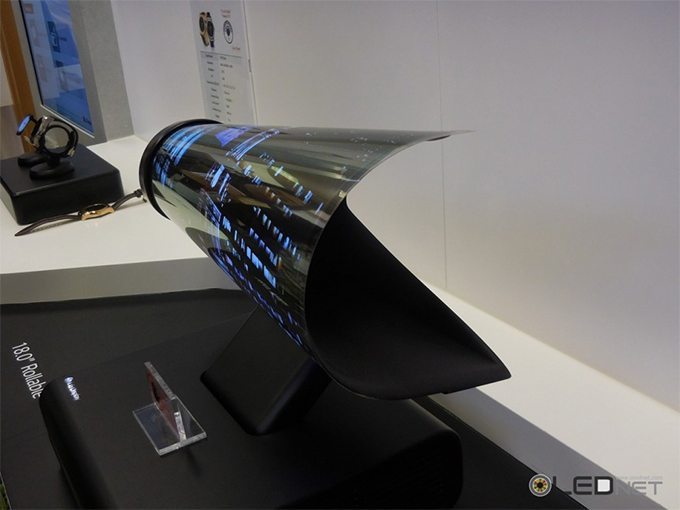
LGD will invest KRW 1.99trillion in 6G flexible OLED line. (Source = LGD)

LGD가 파주에 2조원 규모의 POLED 투자를 단행한다.
강현주 / jjoo@olednet.com
LG디스플레이가 POLED 스마트폰 시대를 선제 공략하기 파주 사업장에 약 2조원 규모의 POLED 투자를 단행한다고 27일 발표했다.
LG디스플레이(대표이사 부회장 한상범, 韓相範 / www.lgdisplay.com)는 26일 정기이사회를 열고 경기도 파주 사업장 내 P9 공장에 월 1만 5,000장 규모의 6세대(1,500㎜×1,850㎜) 플라스틱 OLED 생산라인 구축을 위한 1조 9,900억원의 투자를 결정했다.
POLED는 유리 기판 대신 플라스틱을 사용하기 때문에 원형, 다각형 등의 2차원 디자인은 물론 벤더블, 롤러블, 폴더블 등 플렉서블 디스플레이로 대변되는 3차원 디자인 혁신을 가능케 한다.
OLED 전문 리서치 업체인 유비산업리서치는 2016년 플렉서블 OLED 출하량이 약 7,670만대에서 2020년 6억5310만대로 크게 성장할 것으로 전망한다. 또 다른 디스플레이 시장 조사업체 IHS는 플렉서블 OLED 시장이 2016년 약 5,900만대에서 2020년 약 4억 1,600만대로 성장 할 것으로 예상한다.
LG디스플레이는 이러한 시장 확대에 적극 대응하기 위해, 경북 구미 사업장에 6세대 POLED 생산 라인(E5)을 투자한 데 이어, 파주 사업장에도 약 2조원의 6세대 생산라인(E6)을 추가 투자하기로 한 것이다.
한편, LG디스플레이는 이번 투자의 효율성 극대화를 위해, 파주에 약 5,000억원 규모의 관련 인프라 조성을 진행해 왔으며, 구미에 이어 파주에서 P생산이 오는 2018년에 본격화 되면, LG디스플레이는 POLED 스마트폰 사업 확대의 기반을 마련하게 된다.
LG디스플레이는 금번 투자 발표한 6세대 생산라인 외에도 월 1만 4,000장 규모의 4.5세대 POLED 생산 라인에서 스마트와치 등을 생산 중이며, 현재 건설 공사 중인 P10 공장에 향후 10조 이상을 투자해, OLED를 통한 디스플레이의 르네상스 시대를 연다는 각오다.
LG디스플레이 한상범 부회장은 “디스플레이산업에서 OLED로의 패러다임 전환은 새로운 도전이자 기회”라며, “LG디스플레이는 적기 투자와 투자 효율성 극대화를 통해 미래 성장 동력으로 떠오르는 OLED 시장에서 반드시 선도적 지위를 확보할 것”이라고 말했다.
한편, 2013년 1월, 세계 최초로 55인치 OLED TV 패널을 양산해 본격적인 대형 OLED 시대의 개막을 선언한 바 있는 LG디스플레이는 POLED에 있어서도 2013년 10월, 세계최초로 6인치 스마트폰용 POLED를 양산한 데 이어 2014년 9월에는 세계최초 1.3인치 원형 POLED를 양산하는 등 꾸준히 관련 기술과 공정 노하우를 축적해 왔다.
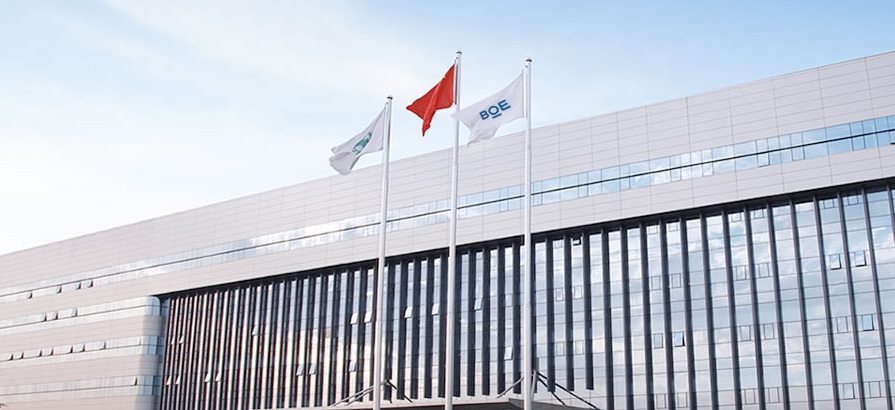
Chinese and Taiwanese panel companies’ Gen8 is higher than Korea’s Gen8 LCD capa. (Picture Source = BOE)
Hyunjoo Kang / jjoo@olednet.com
In order to respond to the outpouring Chinese large area LCD, it is analyzed that carrying out investment to turn large area LCD line into OLED is the most reliable method.
According to 2016 OLED Manufacturing Equipment Annual Report, recently published by UBI Research, Chinese and Taiwanese panel companies’ Gen8 or higher LCD mass production line is 690K in total as of Q1 2016. This is higher than Korea’s Gen8 LCD capa.
Even now, China is showing active movements in additional establishment of large area LCD mass production line. UBI Research forecasts that in 3 years, China and Taiwan’s new large area LCD mass production line will reach up to 80% of the Korea’s current mass production capa. The report emphasizes that to fight against this great supply volume from Great China region, Korean panel companies should change the large area LCD line to OLED.
In case of Gen8 line, unlike small-to-medium size line, the LCD line can be cost effectively transformed to OLED line. As such, it is considered to be the main object for the complementary investment.
Particularly, if oxide TFT, which has few photomask processes, and WRGB+CF technologies are applied, existing large area a-Si LCD line’s manufacturing equipment can continue to be used.
UBI Research explained that an advantage of complementary investment is the fact a-Si LCD line’s backplane equipment and color filter equipment can continue to be used. He further added that in order to maximize a-Si line’s capa., development of TFT process with few photomask processes is a necessity.

Chinese and Taiwanese Gen8 line is higher than Korea’s Gen8 LCD capa. (Source = BOE)
Hyunjoo Kang / jjoo@olednet.com
In order to respond to the outpouring Chinese large area LCD, it is analyzed that carrying out investment to turn large area LCD line into OLED is the most reliable method.
According to 2016 OLED Manufacturing Equipment Annual Report, recently published by UBI Research, Chinese and Taiwanese panel companies’ Gen8 or higher LCD mass production line is 690K in total as of Q1 2016. This is higher than Korea’s Gen8 LCD capa.
Even now, China is showing active movements in additional establishment of large area LCD mass production line. UBI Research forecasts that in 3 years, China and Taiwan’s new large area LCD mass production line will reach up to 80% of the Korea’s current mass production capa. The report emphasizes that to fight against this great supply volume from Great China region, Korean panel companies should change the large area LCD line to OLED.
In case of Gen8 line, unlike small-to-medium size line, the LCD line can be cost effectively transformed to OLED line. As such, it is considered to be the main object for the complementary investment.
Particularly, if oxide TFT, which has few photomask processes, and WRGB+CF technologies are applied, existing large area a-Si LCD line’s manufacturing equipment can continue to be used.
UBI Research explained that an advantage of complementary investment is the fact a-Si LCD line’s backplane equipment and color filter equipment can continue to be used. He further added that in order to maximize a-Si line’s capa., development of TFT process with few photomask processes is a necessity.

중국의 Gen8 LCD 라인이 이미 한국을 넘어섰다. (사진출처 = BOE)
강현주 / jjoo@olednet.com
Gen8 라인 등에서 대면적 LCD를 쏟아내고 있는 중국의 공세에 대응하기 위해 한국 패널 업체들은 대면적 LCD 라인을 OLED로 전환투자하는 것이 가장 유력한 방안이라는 분석이 나왔다.
유비산업리서치가 최근 발간한 ‘2016 OLED Manufacturing Equipment Annual Report’에 따르면 중국과 대만 패널 업체들의 Gen8 이상의 LCD 양산라인은 2016년 1분기 현재 총 690k 규모다. 이는 한국의 Gen8 LCD 생산능력(capa)를 넘어선 수치다.
중국은 지금도 대형 LCD 양산라인 증설에 적극적인 움직임을 보이고 있다. 앞으로 3년 후면 중국과 대만이 신규 구축할 대면적 LCD 양산라인은 한국의 현재 양산라인 capa의 80%에 달하는 규모가 된다는 게 유비산업리서치의 전망이다.
이 보고서는 이같은 중화권의 LCD 물량공세에 한국업체들이 대응하기 위해 한국 패널 업체들은 대면적 LCD 라인을 OLED로 전환하는 게 유력한 방법이라고 강조한다.
Gen8 라인의 경우 중소형 라인과 달리 LCD라인을 OLED 라인으로 비용 효율적으로 전환할 수 있어 전환투자의 주요 대상으로 여겨진다.
특히 포토마스크 공정수가 적은 oxide TFT와 WRGB+CF 기술을 적용한다면 기존의 대면적 a-Si LCD 라인의 장비를 그대로 활용할 수 있다는 것도 장점이다.
유비산업리서치 관계자는 “a-Si LCD 라인의 backplane 장비와 color filter 장비를 그대로 활용할 수 있다는 게 전환투자의 장점”이라며 “a-Si line의 capa.를 최대한 활용하기 위해서는 포토마스크 공정수가 적은 TFT 공정개발이 필수적”이라고 설명했다.

Picture Source = SDC
Hyunjoo Kang / jjoo@olednet.com
In order to respond to rapidly increasing OLED smartphone demand, Samsung Display( SDC ) is analyzed to require additional installation of Gen5.5 rigid OLED line and V1 line move.
At present, China’s smartphone OLED demand is explosive. According to UBI Research’s investigation, China needs up to 200 million units of mobile OLED until next year. Therefore, for Samsung Display to produce more OLED panels in A2 factory, V1 line that produces transparent OLED needs to be moved to L8 which is a Gen8 LCD factory.
OLED use V1 line has been using Gen8 manufacturing equipment produced TFT substrate cut into 6. As such, moving the V1 line to Gen8 factory is analyzed to be advisable in terms of panel production and distribution management.
The president of UBI Research, Choong Hoon Yi explained that China’s future mobile OLED demand volume is difficult for China’s key panel companies such as BOE, and even for mobile OLED leader Samsung Display it is not easy to supply sufficient amount with existing mass production line. He estimated that Samsung Display, to meet the demand, will require additional installation of at least 20-30K OLED mass production line to Gen5.5 A2 line.

삼성디스플레이의 5세대 OLED 라인 증설이 필요하다는 분석이 나오고 있다.
강현주 / jjoo@olednet.com
삼성디스플레이가 급증하는 OLED 스마트폰 수요에 대응하기 위해서는 Gen5.5 rigid OLED라인의 추가 증설과 V1라인 이동이 불가피한 것으로 분석된다.
현재 중국의 스마트폰용 OLED 수요는 폭발적이다. 유비산업리서치의 조사에 따르면 중국에서 내년까지 필요로하는 물량은 2억개에 달한다.
그러므로 삼성디스플레이는 A2 공장에서 보다 많은 OLED패널을 생산하기 위해 투명 OLED를 생산하는 V1라인을 LCD용 Gen8 공장인 L8로 이동 해야 할 것으로 판단된다.
OLED용 V1 라인은 Gen8 장비에서 제조된 TFT 기판을 6분할하여 사용하여 왔기 때문에 V1 라인이 Gen8 공장으로 이전하는 것이 패널 생산과 물류 관리 차원에서 가장 바람직할 것으로 풀이된다.
유비산업리서치 이충훈 대표는 “중국의 향후 모바일 OLED수요는 BOE 등 중국의 주요 패널 업체들이 감당하기 힘든 물량인 것은 물론, 모바일 OLED최강자인 삼성디스플레이도 현존하는 양산라인으로는 충분한 공급이 쉽지 않다”며 “이에 삼성디스플레이는 최소 Gen5.5 A2 라인에 20~30k 규모의 OLED양산라인 증설이 필요할 것”이라고 내다봤다.
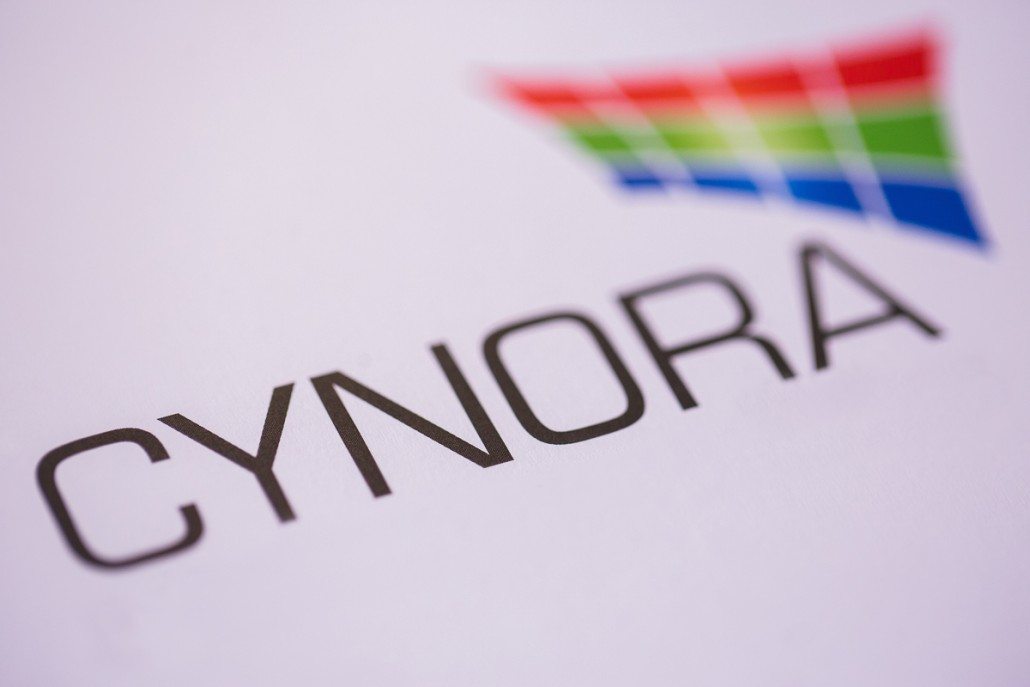
Source = Cynora
Hyunjoo Kang / jjoo@olednet.com
CYNORA, a leader in blue TADF (thermally activated delayed fluorescence) materials, has appointed Dr. Andreas Haldi as its Chief Marketing Officer.
With his strong technical and business experience, Andreas Haldi will reinforce CYNORA in the forthcoming commercialization of its high performance blue OLED materials.
CYNORA is preparing the commercialization of its emitting materials for OLEDs. The company is hiring Andreas Haldi to further enhance its already good relationships with the major display makers and to now prepare with them the implementation of its materials in their products.
Andreas Haldi has close to 15 years of experience in the OLED materials field and profound knowledge of the Asian display market. Prior to joining CYNORA, Haldi held manager positions in R&D and sales at Novaled GmbH. For the last five years he was headquartered in Seoul, Korea, as Novaled’s representative in front of the major AMOLED display makers in Asia.
“I am very happy to get Andreas on board” says Gildas Sorin, CYNORA’s CEO. “We are preparing ourselves intensively for the commercialization of our blue emitters. Thanks to his proven skills on OLED and his experience in Asia, Andreas will help us to build up our success as a leading supplier for TADF materials.”
“I am looking forward to joining CYNORA” says Andreas Haldi, “CYNORA has shown its expertise and its impressive capability to progress rapidly during the last 8 months. CYNORA has a great potential to become key player in the OLED material industry.”
The appointment of the new CMO is a significant signal of CYNORA’s further development and its forthcoming market entry. Blue TADF-based emitters will enable a significant reduction of power consumption in OLED devices and will allow higher display resolution. CYNORA owns a broad IP portfolio with over 100 patent families and is aiming for over 600 patents.

2016-2020, global Gen8 complementary investment ( LCD → OLED ) is expected to be total USD 6,674 million.
Hyunjoo Kang / jjoo@olednet.com
For the next 5 years, 2016-2020, global Gen8 (8G) complementary investment ( LCD → OLED ) is expected to be total USD 6,674 million.
According to 2016 OLED Manufacturing Equipment Annual Report, recently published by UBI Research, Korea’s 8G complementary investment in 2016-2020 is estimated to be USD 5,400 million, 81% of the global USD 6,674 million. Particularly, complementary investment for large area LCD line to OLED is expected to be actively carried out centering around LG Display.
China is estimated to actively operate new large are LCD lines from 2016. To respond to this move, Korean panel companies are expected to transform 8G a-Si LCD lines located in Korea to OLED line from 2016.
To respond with LCD, China’s supply offensive and price competitiveness are too strong. As such, the situation calls for concentrated efforts in OLED.
Gen8 LCD line became the object of complementary investment as it can be easily converted to OLED compared to small-to-medium size LCD line. 8G LCD line’s a-Si TFT can be turned into oxide TFT used in Gen8 OLED line cost effectively.

SID 2016에 전시된 LG의 OLED TV
강현주 / jjoo@olednet.com
2016년부터 2020년까지 향후 5년간 전세계 8세대 전환투자( LCD → OLED )는 총 미화 66억7400만 달러(한화 악 7조6180억 원) 규모가 될 것으로 전망된다.
유비산업리서치가 최근 발간한 ‘2016 OLED Manufacturing Equipment Annual Report’에 따르면 앞으로 5년간 한국의 8세대 전환투자는 54억 달러가 될 것으로 예상된다. 이는 전세계 규모인 66억7400만 달러의 81%에 해당한다. 특히 LG디스플레이를 중심으로 대면적 LCD 라인의 OLED로의 전환투자가 본격적으로 진행될 전망이다.
중국은 대면적 LCD 신규라인을 2016년부터 본격적으로 가동할 것으로 예상된다. 이에 대응하기위해 한국 패널 업체들은 2016년부터 한국에 위치한 8세대 a-Si LCD 라인을 OLED라인으로 본격적으로 전환할 것으로 전망된다.
글로벌 디스플레이 시장에서 중국에게 LCD로 맞서기에는 중국 LCD 업체들의 물량공세와 가격 경쟁력이 너무 강력하기 때문에 한국 주자들은 OLED로 눈을 돌리고 이 시장을 키우는 데 역량을 집중해야 하는 상황인 것으로 풀이된다.
대면적 패널 양산라인인 8세대 LCD 라인이 전환투자의 주요 대상이 된 이유는 중소형 LCD 라인에 비해 OLED로의 전환이 용이하기 때문이다. 8세대 LCD 라인에서 백플레인으로 사용되는 a-si TFT는 8세대 OLED 라인에서 이용되는 oxide TFT로 비용 효율적으로 전환될 수 있다는 게 전문가의 설명이다.
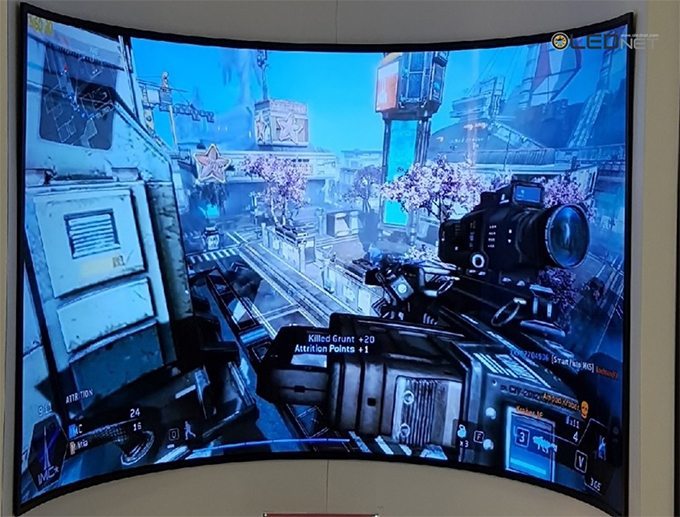
LGD`s 65“ OLED TV Panel

LG전자가 77인치 OLED TV 를 출시했다.
이번 신제품은 디자인, 음질, 화질 등 LG 시그니처 올레드 TV만의 독보적인 강점을 갖췄다.
디자인은 77형 초대형 화면에서 더욱 돋보인다. LG전자는 올레드 패널 뒤에 투명 강화유리 한 장만을 붙여 얇고 세련된 느낌을 강조했다. 제품 뒷면의 패널과 스탠드에는 은은한 보랏빛을 입혔다. 신제품은 앞뒤와 좌우 어디서 보더라도 나사 하나 보이지 않아 유리 조형 작품을 연상시키도록 디자인했다.
사운드 최대 출력은 80와트(W)로 65형 LG 시그니처 올레드 TV 대비 30% 이상 강해졌다. 세계적인 오디오 회사 하만카돈과 협력해 완성한 고품격 사운드는 사람의 목소리부터 현악기의 울림까지 세밀하게 표현해준다. 저음을 담당하는 우퍼, 고음을 담당하는 트위터 등 총 10개의 스피커 유닛이 입체적이고 풍성한 사운드를 제공한다. LG전자가 독자 개발한 ‘공간 인식 사운드’ 기능은 TV를 시청하는 공간을 자동으로 계산해 최적의 음질을 제공한다.
77형 초대형 화면에서 구현하는 완벽한 블랙은 현장에 와 있는 듯한 생생함을 느끼게 해준다. 올레드 TV는 백라이트가 없어 화소 하나하나가 빛을 내기 때문에 현존하는 TV 중에 자연에 가장 가까운 색을 구현한다.
신제품은 HDR(High Dynamic Range) 기술을 구현하는데도 최적이다. 가장 범용적으로 사용되고 있는 HDR 10, 프리미엄 HDR 화질을 구현하는 돌비 비전(Dolby Vision™) 등 다양한 HDR 영상 규격을 지원한다. 국내 출시된 TV 가운데 HDR 10과 돌비 비전을 모두 지원하는 것은 LG 울트라 올레드 TV, 슈퍼 울트라HD TV 등 LG 프리미엄 TV뿐이다.
HDR는 화면의 어두운 부분과 밝은 부분을 보다 깊이 있게 표현해 현장에서 직접 보는 듯한 생생함을 구현하는 기술이다.
LG전자 한국HE마케팅담당 허재철 상무는 “65형에 이은 77형 LG 시그니처 올레드TV로 超프리미엄 TV의 역사를 새로 썼다”며 “집안의 품격을 높이는 차원이 다른 화질과 디자인으로 超프리미엄의 새로운 경험을 제공할 것”이라고 강조했다.

LGD가 SID 2016에 전시한 65인치 OLED TV 용 패널
강현주 / jjoo@olednet.com
LG디스플레이가 2016년 2분기 65인치 OLED 패널 출하량을 크게 늘린 것으로 나타났다. 이는 OLED TV가 본격적인 시장 성장과 대형화 추세에 들어서고 있는 것으로 풀이된다.
유비산업리서치의 조사에 따르면 LG디스플레이는 2016년 2분기 약 14만개의 TV용 OLED 패널을 출하했다. 이 중 대형 TV용인 65인치 패널은 약 2만8000개로 집계됐다. 이는 전분기에 비해 약 2배 가량 늘어난 수치다.
LG디스플레이가 이처럼 65인치 OLED 패널 출하량을 크게 늘린 것은 글로벌 TV 시장에서 OLED 패널 탑재 TV를 출시하려는 업체가 늘고 있으며, 50인치대를 넘어 60인치대로의 대형화 수요가 커지고 있는 상황에 대응하는 움직임으로 해석된다.
실제로 최근 독일 뢰베, 메츠 등 다수의 TV 업체가 OLED 진영에 합류한 것으로 알려졌다. 유비산업리서치의 조사에 따르면 중국 업체인 Skyworth의 경우 올해 현재까지 LG디스플레이로부터 3만개 가량의 TV용 OLED 패널을 공급받았다.
사이즈가 큰 패널일수록 LCD와의 가격 경쟁력 격차가 줄어든다는 점도 LG디스플레이가 60인치 이상 패널에 집중하게 만드는 하나의 요인으로 분석된다.
TV 시장에서 OLED 대표주자인 LG전자는 그동안 OLED TV 가격 인하를 단행해왔다. OLED 패널을 장착한 TV가 LCD TV에 비해 가격 경쟁력이 떨어져 소비자들의 마음을 사는 데 어려움이 있었기 때문이다. 하지만 사이즈가 대형으로 갈수록 OLED와 LCD간 가격 격차가 줄어든다는 게 전문가의 설명이다.
LG전자는 19일 77인치 OLED 패널을 장착한 TV를 발표하기도 했다. 이처럼 LG는 초대형 OLED TV 시장 개척에 역량을 집중하고 있다.
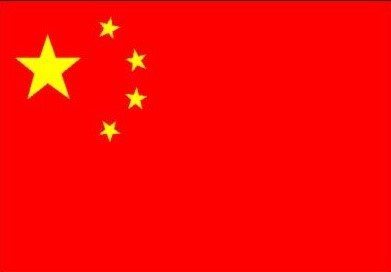
중국은 LCD TV 패널 투자를 늘리고 있다.
강현주 / jjoo@olednet.com
2016년 상반기 LCD TV 패널 출하량이 전년 동기 대비 약 6% 줄어들었다고 디지타임즈가 한 컨설팅 업체의 자료를 인용해 보도했다. 반면 중화권 업체들은 이 같은 추세와 반대로 대형 LCD 생산량을 늘리고 있어 눈길을 끈다.
보도에 따르면 상반기 글로벌 TV용 LCD 패널 출하량은 1억2400만개로 2015년 상반기에 비해 약 5.9% 가량 줄었다. 하지만 전체 LCD 패널 출하량은 4% 늘었다. 이는 평균 사이즈의 패널 수가 증가했기 때문이다.
하지만 중국의 움직임은 이 같은 흐름과 대조된다. 상반기 글로벌 LCD 시장에서는 대형 LCD 출하량이 감소했지만 중국 주요 패널 업체들은 오히려 늘린 것으로 나타났다.
BOE는 지난 상반기 2250만개의 TV용 LCD 패널을 출하했다. 이는 전년동기 대비 47% 늘어난 수치다. CSOT는 1470만개의 TV용 LCD 패널을 출하, 전년동기 대배 30% 증가했다.
한편 유비산업리서치가 최근 발간한 ‘2016 OLED Manufacturing Equipment Annual Report’에 따르면 오는 2018년말까지 중국과 대만에서 투자가 결정되거나 검토되고 있는 대형 LCD 양산라인의 월 생산능력(캐파)는 총 528k다.
이는 현재 한국의 현재 대형 LCD 양산라인의 80%에 달하는 규모에 해당한다.
